
Home » Travel Guides » 15 Best Places to Visit in Venezuela

15 Best Places to Visit in Venezuela
There are many beautiful and varied regions of Venezuela to explore. It has the Andean mountain range, the Caribbean coast, inland dunes, and the anaconda filled wetlands. It’s a tropical country with incredible biodiversity that you’re sure to fall in love with.
Famous as the birthplace of Simon Bolivar, the liberator of many countries in South America from Spanish rule, you’ll find tributes to him in almost every city and town.
Though the country has been struggling in recent years with inflation and rising crime, Venezuela remains a destination spot and the rewards of travelling here are amazing – it’s full of “trip of a lifetime” places you can’t afford to miss.
1. Angel Falls

Venezuela is home to the world’s highest waterfall. Needless to say, this is the most popular destination in the country. With nearly a 1 kilometre drop, spectacular is really the only word to describe it.
Located in a rather isolated jungle in the Canaima National Park, the falls are on the Orinoco River. Hikers will love the trek out to this UNESCO World Heritage Site.
To cool off you have the option of taking a dip in the white sand beaches around the lagoon or the natural pools at the base of the falls.

Calling all adventure sports lovers! You’ll want to spend time in the progressive town of Mérida. This rather affluent city has both fantastic mountain vistas and an unhurried and cultured vibe. The energy is youthful and friendly, thanks in large part to the university here.
Mérida has a gorgeous climate which attracts the outdoor enthusiasts looking for top quality activities to choose from. Try rafting, canyoning, mountain biking, hiking, and paragliding – the city’s specialty.
Stay here if you’re looking to take lightening-viewing trips to Catatumbo or wildlife trips to Los Llanos. After you’ve indulged your sense of fun, enjoy a rather fast-paced nightlife.

This small and somewhat deteriorating town on Venezuela’s coast is a UNESCO World Heritage Site due to the colonial architecture.
Coro also boasts wonderful museums and a lovely cathedral. This is a city for walking and you’ll really enjoy Zamora, where the historic mansions are.
Coro is the starting point for the fabulous sand dunes found in Parque Nacional Médanos de Coro and it’s also a nice base camp for exploring areas like the Sierra de San Luis Mountains or the Península de Paraguaná.
4. Los Roques

After your visit to the Archipelago of Los Roques National Park you’ll always think of it as one of the most beautiful places on Earth. Incredible shades of blue in the surrounding waters, white sand beaches, the vibrant green of the mangrove swamps, and the otherworldly shapes and shades of the coral reefs all combine to make the park truly breathtaking.
You’ll quickly see that it’s an area of bright and gorgeous contrasts. There are over 1,000 keys here and you can find a landscape to suit your preferences – everything from sand beach, good surf, rock beach, still water bays, coastal barrier, lagoons, salt mines, and more.
Don’t leave without trying the fishing, sailing, diving, lobster catching, and windsurfing on offer.
5. Ciudad Bolívar

Ciudad Bolívar has a proud history as the centre of the struggle for independence in Venezuela. Simon Boliver set up his military base here as he began the final campaign in the War for Independence.
It’s the capital of the country’s largest state and the historic centre, known as Casco Historico, is without doubt the countries best. There’s a staggering array of colourful colonial buildings, the Paseo Orinoco, and tons of shaded squares to loiter in.
Most travellers find a reason to stop here on their way to Angel Falls. Be sure to check out the Plaza Miranda, the cathedral and historic cemetery there.
6. Henri Pittier National Park

This is Venezuela’s oldest national park. Its claim to fame is birdlife, and with over 500 bird species, it’s little wonder.
Named for Henri Pittier, who came to the country in the early 20th century and worked to classify over 30,000 plants.
He is also one of the founders of the national park system in Venezuela. The park has fantastic coastline, beaches, bays, mountains, and a few resorts. There’s great opportunity for diving, swimming, and sunbathing.
7. Isla Margarita

One of the best places for beach bums in Venezuela is Isla Margarita, the largest island off the coast. You’ve got more than 50 beaches to choose from and each will suit various personalities – for instance, Playa el Yaque is great for water sports, Juangriego is a large laid back beach town, and Península de Macanao is largely untouched and deserted.
Venezuelans love to come to Isla Margarita thanks to the duty free shopping at the port.
The capital is La Asuncion, a large and surprisingly urban city. You’ll find great shopping, restaurants and nightlife here and in Porlamar. Be sure to head inland and do some trekking in the mountains before you go.
8. Mount Roraima

Sitting at an elevation of almost 3,000 metres, Mount Roraima has a flat tabletop that feels otherworldly. Lying mostly in Venezuela but partly in Guyana and Brazil, it is the main attraction of Canaima National Park. The hike to the top is usually done in two days.
The geological formations are as old as two billion years. Home to rare animals and birds, Mount Roraima was the inspiration for Sir Arthur Conan Doyle’s The Lost World.
Because of its uniqueness, the mountain figures prominently in many of Venezuela’s folklores.
9. Maracaibo

Usually people come to Maracaibo because they’re in the oil business, but there’s a lively historic centre that history buffs will want to see. Most people stay in the new centre where you’ll find nice shopping and upscale hotels. This is Venezuela’s second largest city and a nice day excursion.
10. Barquisimeto

The capital of the state of Lara, Barquisimeto is simply lovely, charming, and timeless. Situated on the Turbio River and nicknamed “City of the Twilight,” this is a place you’ll want to linger.
Known as the musical centre of Venezuela, there’s an energetic cultural vibe that has a definite global influence. While you’re there, stop by the Museo de Barquisimeto. This museum is housed in a large historic building with a central courtyard and chapel inside.
There’s a so the Iglesia de la Concepción, the town’s first cathedral originally built in the 19th century.
11. Los Llanos

Also known as The Plains, the grassland region of Los Llanos is located on the border between Columbia and Venezuela. During the summer months the plain tends to flood making this the perfect destination for bird lovers.
When it’s dry season Los Llanos is ideal for wildlife sighting when the animals gather in the few areas with water – giving it the nickname of the Serengeti of South America.
You’ll find anacondas, jaguars, caimans, capybaras, and the Orinoc Crocodile – now found in no other place.
12. Guayana

Not to be mistaken for the country of Guyana, the southeast region of Guayana is Venezuela at its exotic best. This is the region of Angel Falls and Parque Nacional Canaima as well as the Orinoco Delta, a phenomenal wildlife area.
You’ll find the Venezuelan Amazon, Rio Caura, and The Great Savanna (La Gran Sabana) where the Tepui Mountains loom large and distinctive. Several large communities of indigenous groups call Guayana home, including the Pemón, the Yanomami, and the Warao.
Some travellers come to Venezuela just for this region and spend their entire holiday discovering its many delights.
13. Choroni

Choroni is a quiet and charming beach town where those looking to relax and do a lot of “nothing” should plan to spend some time. The town has a colonial feel and a quiet plaza perfect for relaxing.
If you want to spend time in Henri Pittier National Park, Choroni makes a good base camp.
This is the perfect place for those who want to slow down and unwind.
14. Medanos de Coro National Park

Medanos de Coro National Park is famous for its sand dunes – considering that they’re located in a tropical country.
Some of the dunes reach 40 metres and are shaded yellow and orange. The high winds here mean the dune constantly and delightfully change shape.
Visitors love to come and sand board on the dunes or explore the larger area on camel.
15. The Andes

Most people think of sun and sand when they think of Venezuela so it’s worth noting that it’s also home to a 400km stretch of snow capped Andes Mountains. Pico Bolivar, the country’s highest peak, stands at just over 5,000 metres.
If trekking through the high passes isn’t for you, don’t discount the area. You’ll find cascading waterfalls, green valleys of cloud forest, quaint mountain villages that are only accessible by winding roads.
Start in Mérida state, which has some of the best tourist infrastructure right now for exploring the mountains. For those big into adventure, try Táchira and Trujillo.
15 Best Places to Visit in Venezuela:
- Angel Falls
- Ciudad Bolívar
- Henri Pittier National Park
- Isla Margarita
- Mount Roraima
- Barquisimeto
- Medanos de Coro National Park

10 BEST Places to Visit in Venezuela in 2024 (Plus Tips)
- Last Updated: February 6, 2024
From Angel Falls to Mount Roraima, these are the best places to visit in Venezuela!
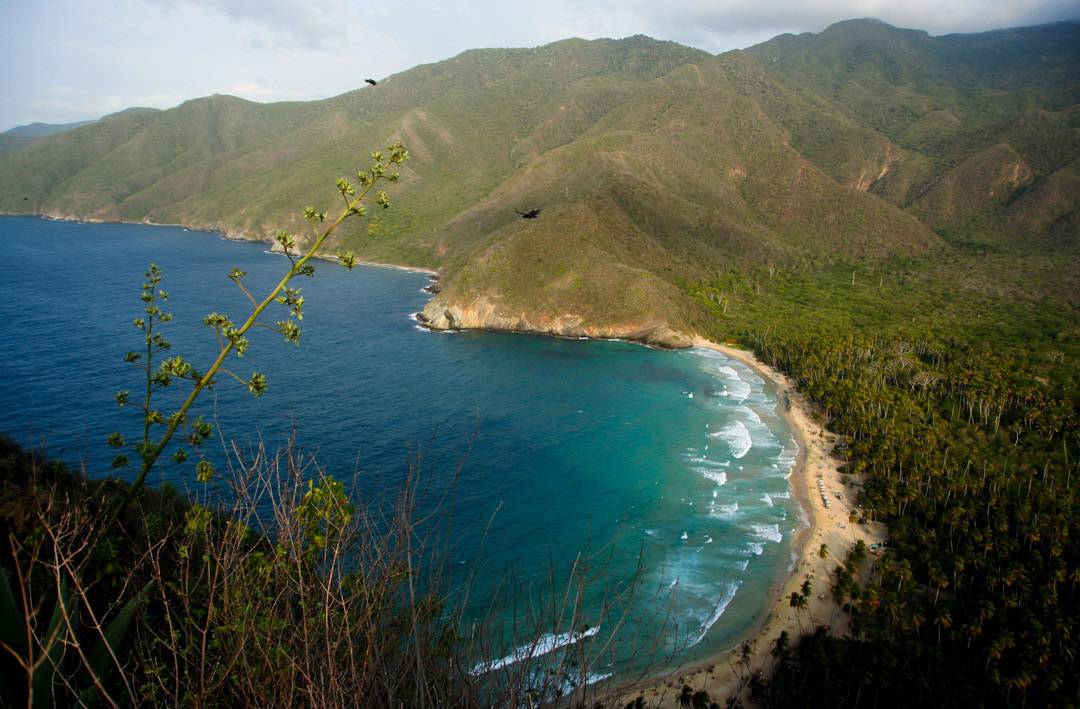
Venezuela’s economic problems, bad reputation and political uncertainty haven’t helped in the development of tourism to this Caribbean country in South America.
The truth is that, as one of the largest oil producers in the world, the government has focused most of its efforts on the exploitation of oil fields, sometimes to the detriment of other economic activities.
However, the reality could be very different. Venezuela is a jewel to discover, a virtually unexplored territory with places of incomparable beauty.
From paradisiacal beaches to impenetrable jungles to vertigo-inducing routes through the Andean highlands, the possibilities for visitors are almost endless.
Table of Contents
1) Salto Angel
2) the amazon rainforest, 3) cayo sombrero, 4) mount roraima, 5) the orinoco delta, 6) los llanos, 8) puerto colombia, 9) los médanos de coro national park, 10) parque mochima national park, 1) bring dollars or euros, 2) stay safe, 3) relax and enjoy, top places to visit in venezuela.
If you’re feeling like an adventure to one of the most beautiful countries on the planet, then don’t miss out on these amazing places to visit in Venezuela.
Angel Falls , at 979 meters high, proudly boasts being the highest waterfall in the world. Located in the Venezuelan Gran Sabana, this is a place holding a sacred character for the natives. It is, without a doubt, the biggest out of all Venezuela tourist attractions.
To get there, you’ll have to navigate up the Carrao River, right in the heart of Canaima Park, until you reach the base of the falls. Inscribed on the UNESCO World Heritage list in 1994 , this park offers hundreds of cascades of equal beauty, as well as wild rivers and red-water lagoons.
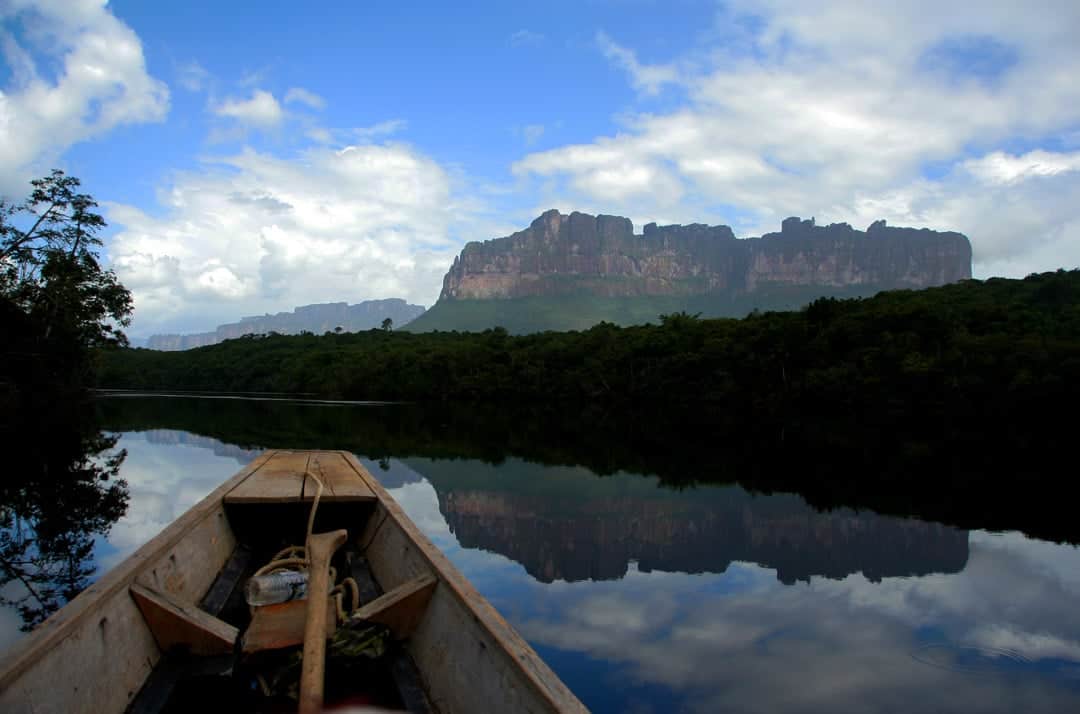
Mystical and legendary, this dense and humid territory is the largest jungle in the world. Visitors can venture along its rivers to find wild animals, lush plants and tribes that have barely changed their traditions in the last 500 years. The Amazon rainforest is one of the best things to see in Venezuela.
Although uncontrolled logging and the construction of dams are seriously threatening the future of this ecosystem, it’s still possible to visit several protected reserves and enjoy one of the seven new natural wonders of the world. Definitely an amazing spot on the list of places to visit in Venezuela.
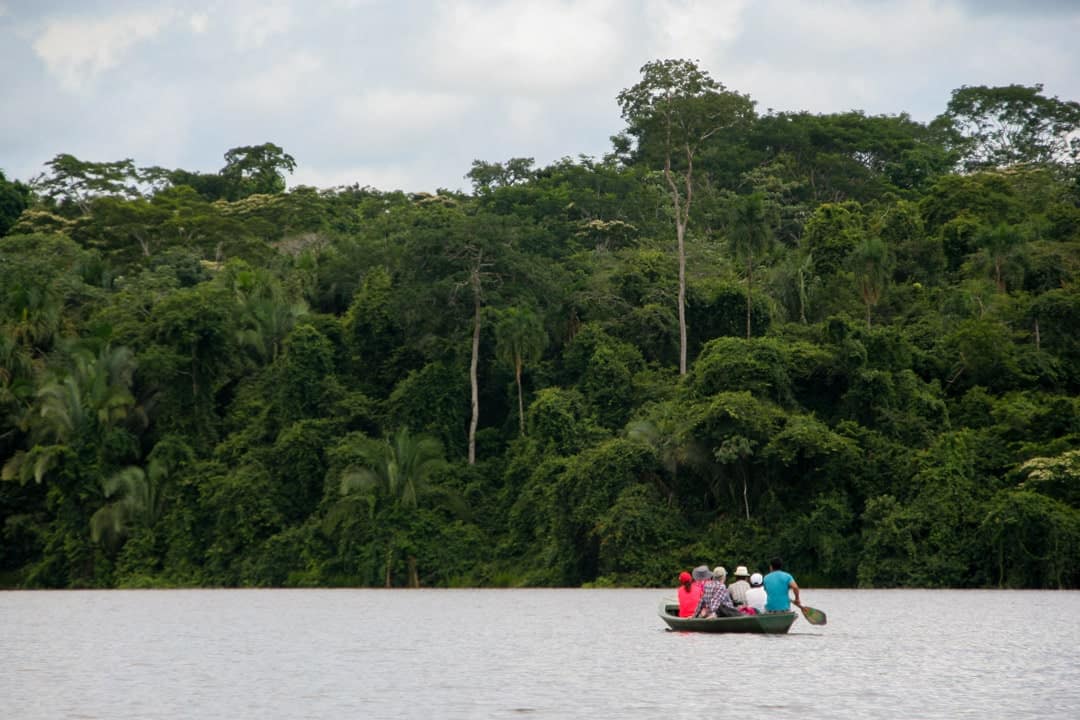
Because Venezuela’s coasts are completely bathed by the Caribbean Sea, it’s no surprise that there are plenty of amazing islands and beaches to visit.
When you think about a paradisiacal destination, you probably envision yourself lying in the shade of a palm tree on a white-sand beach with turquoise water, right?
That’s the exact description of Cayo Sombrero, a tiny island located a few kilometres off the coast of Chichiriviche, in Morrocoi National Park.
Enjoy the peace of this place with no infrastructure, houses, restaurants or hotels. You can easily arrange a boat to get you there, and agree on a time so they can pick you up.
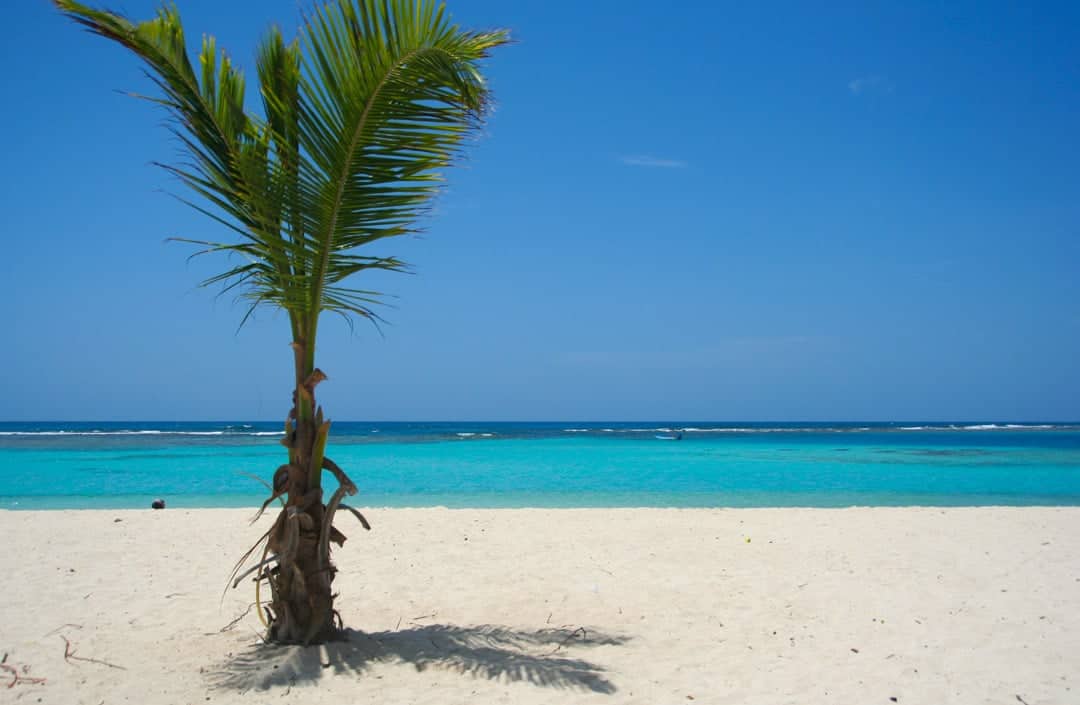
Mount Roraima, called Tepuy Roraima by the indigenous population, is a majestic table-shaped mountain located right on the triple border point of Venezuela, Brazil and Guyana.
The hike will take at least five days to complete. You’ll have to cross wild rivers and walk along steep paths before enjoying amazing views from the summit.
Once you’re on the top, the extravagant rock formations will certainly make you feel like you’re on another planet. It’s easy to understand why this mount inspired Sir Arthur Conan Doyle to write his famous novel “ The Lost World “.
For all avid hikers, Mount Roraima is one of the Venezuela attractions they can’t miss!
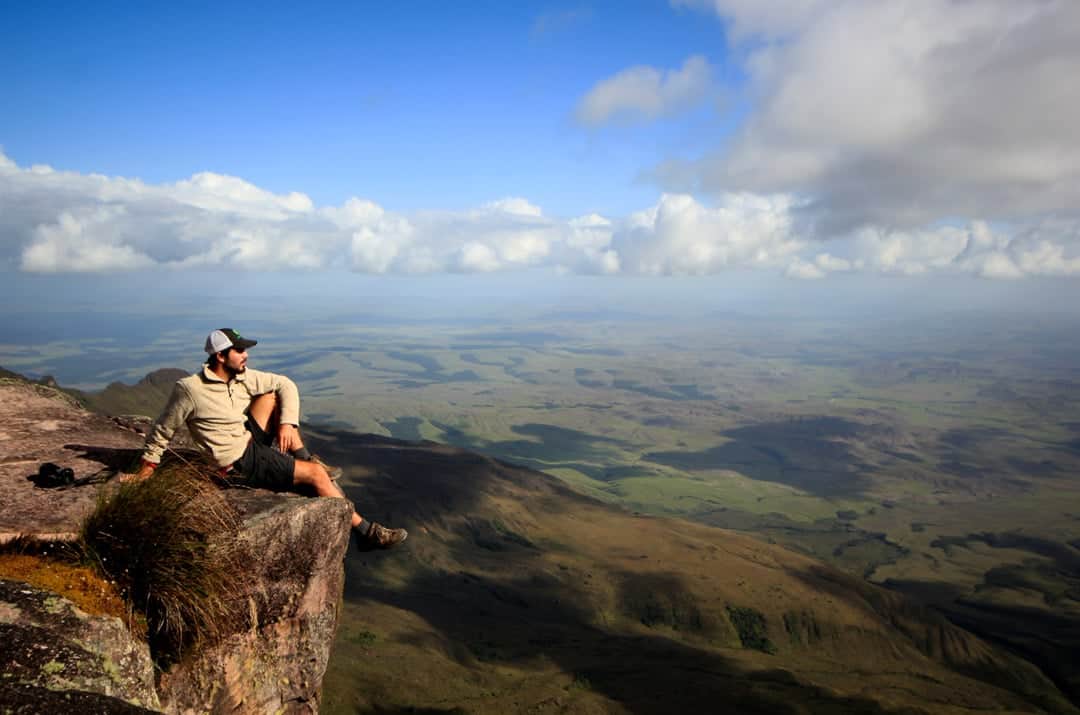
The beautiful Orinoco River, one of the most important in South America and the third largest river in the world after the Amazon and Congo, has been a subject of study by dozens of explorers since Christopher Columbus documented its existence in 1498.
The delta region, formed mainly by materials the river washed away and by mudslides from nearby volcanoes, attracts all kinds of adventurers looking for wildlife, flora and fauna.
The delta is an important starting point for jungle expeditions, during which you can see alligators, anacondas and even jaguars if you’re lucky enough.
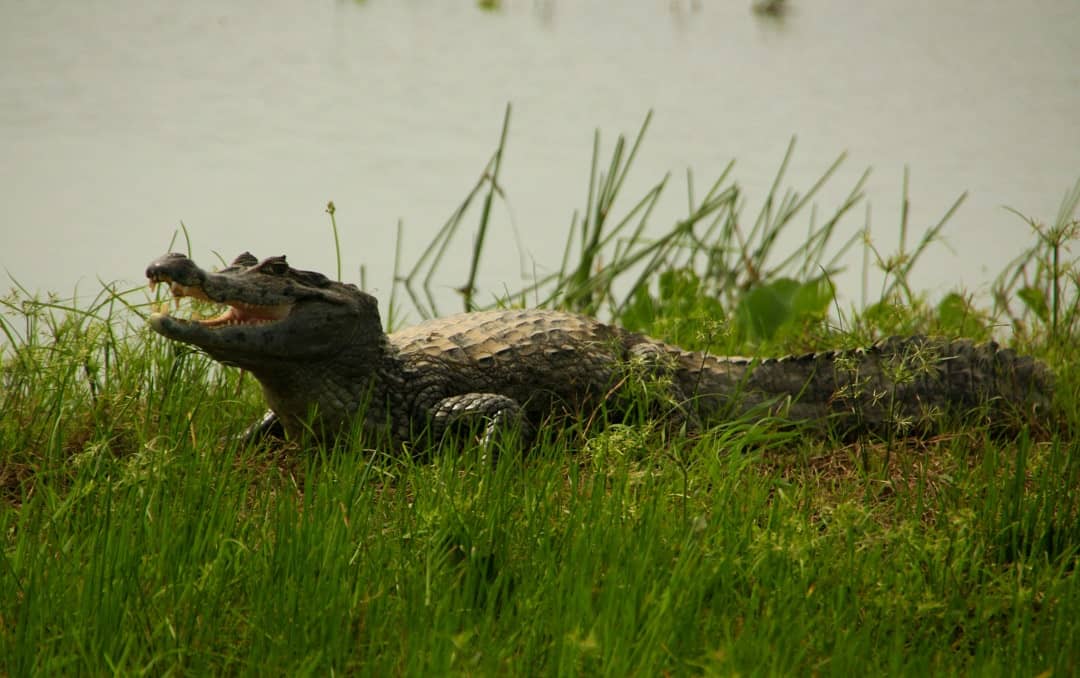
This huge savannah is to South America what the Serengeti is to Africa: a wild extension where animals are the real lords. You can take a multi-day safari and watch hundreds of birds, caimans, deer, capybaras, sloths and more.
Although the region’s activity involves mainly cattle ranching and oil production, eco-tourism is growing in Los Llanos and more visitors have the chance to take in its natural beauty.
When traveling to South America, Los Llanos must be included in your itinerary – it’s one of the best things to do in Venezuela.
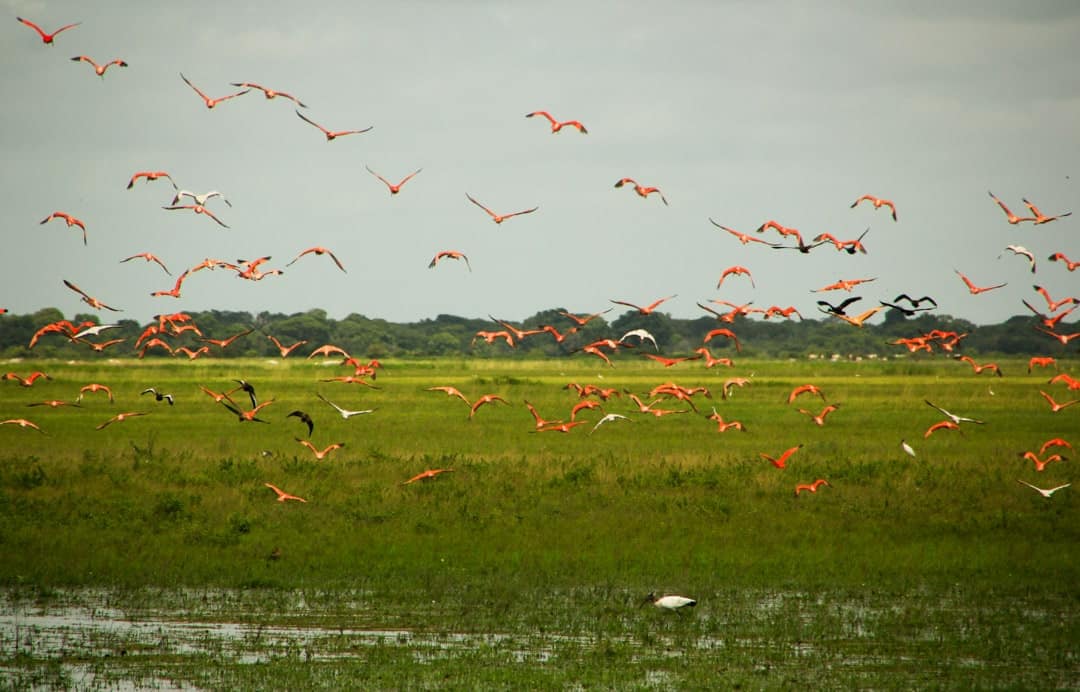
Venezuela’s attractions go beyond tropical jungles and dream beaches. The Andean Range, the mountainous backbone that so drastically affects the climate of the continent, also creates amazing landscapes in the land of Simon Bolivar.
Merida is the most important city in the Venezuelan Andean region, and it’s an excellent starting point for visiting the nearby colonial towns.
It is known as the adventure capital of the country, and it offers a wide variety of activities for all preferences. Adrenaline junkies will find top-class hiking, rafting, paragliding and rock climbing.
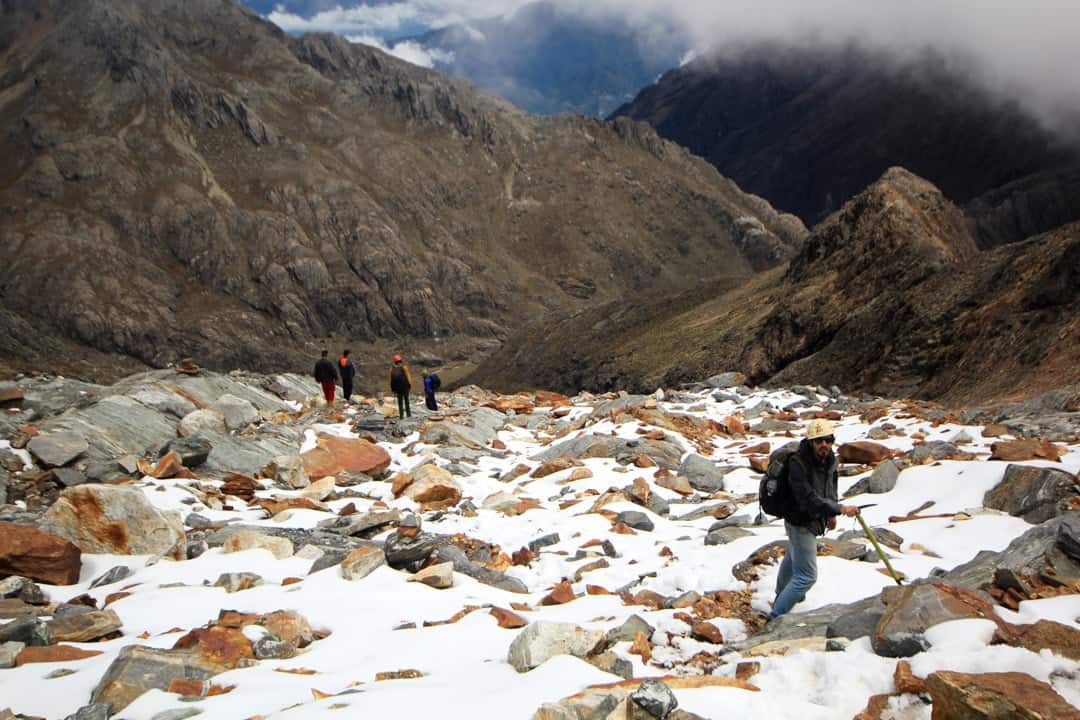
Located on the coast of the Henri Pittier National Park, this small village is characterized by steep mountains, extensive beaches and friendly people.
The beaches are not like those of white sand and turquoise water, but they still have a special charm. It’s a region with strong waves, cliffs that dominate the landscape, and local fishermen who make their living out on the rough waters.

The landscapes and ecosystems in Venezuela are so varied that it’s possible to find a desert in the northwest region of the country.
Located in the Falcón state, Medanos de Coro National Park is a dry setting of large dunes that are the products of erosion and the whims of incessant trade winds.
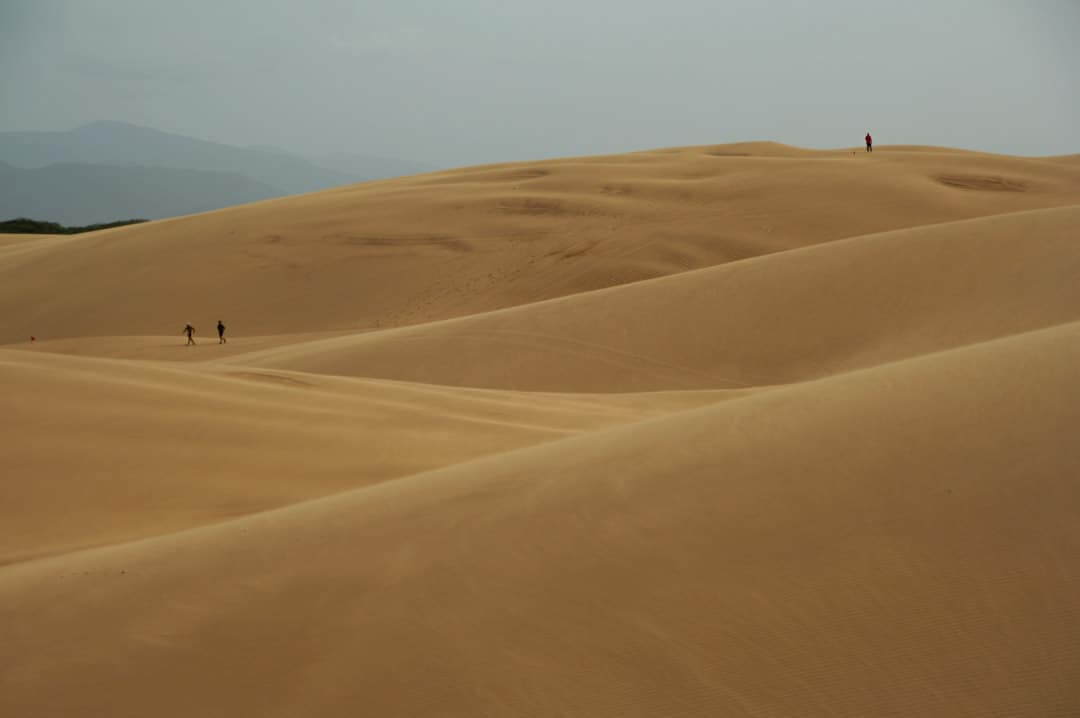
When one arrives at Mochima National Park, one immediately feels the magic of a place where it seems as though time has not passed.
Located between the states of Sucre and Anzoátegui in the eastern part of the country, this park contains a long coast of beaches and islands with pristine water.
The beautiful sunsets and the tranquility of its villages make Mochima one of the most attractive destinations on the Caribbean coast.
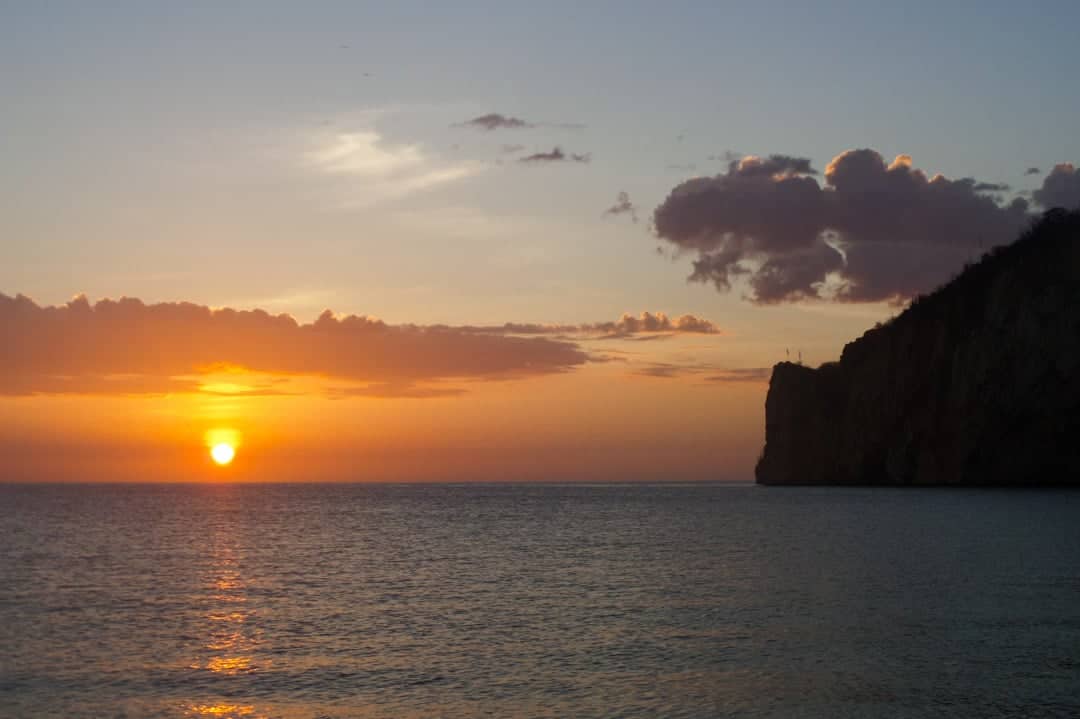
Tips For Visiting Venezuela
Now that I’ve inspired you to pack your bags and travel to this South American nation, here are our best travel tips for visiting Venezuela.
Venezuela has one of the world’s craziest economic systems. While the local people can’t buy more than a few dollars a year, they still need dollars or euros to travel out of the country and to conduct certain transactions. Therefore, the dollar black market is big business there.
Don’t get money from an ATM. You’d get the official exchange rate, and that would ruin you. Bring dollars or euros and change them on the black market.
When I say black market, don’t imagine guys in an alley, dealing with opium or AK-47s. Many people change dollars in Venezuela. Ask in your hostel or in any jewelry store and you will have your money changed in a matter of minutes.
We all know that the current situation in Venezuela is not the best. However, the places on this list are safe to visit if you take the normal precautions. The countryside is still relatively safe.
Avoid visiting big cities like Caracas, Valencia, Maracaibo, etc. If you need to stay in a city, try to make those visits as short as you can. Stay away from big concentrations, protests and other public demonstrations.
Don’t trust military officers. If your bus is stopped at a military checkpoint, hide your money in your underwear. They could ask if you have money with you.
Show them a few bolivares and tell them that’s all you have. Don’t show them your dollars because you might “lose” some of them.
Despite the bad reputation, Venezuela is an incredible country that offers just about anything you can imagine. The people are friendly and the landscapes are unbelievable.
Use common sense and avoid big cities, and everything should be alright!
Miguel Travelsauro
Hi, We’re Alesha and Jarryd!

We’ve been traveling the world together since 2008, searching for the planet’s best destinations and adventures.
Love Travel?
Sign up for our free weekly newsletter for the best travel tips, ideas and deals!
We respect your privacy. Unsubscribe at any time.
READ MORE...
The Perfect Tampa to Miami Drive Itinerary (2024 Guide)
The perfect 3 days in key west itinerary (2024 guide), the ultimate big sur road trip itinerary (2024 guide), related posts, the perfect 3 days in sedona itinerary (2024 guide), 4 thoughts on “10 best places to visit in venezuela in 2024 (plus tips)”.
Hoe do you get in? they currently not issuing visas.
I can’t stress this enough! Do not, I’ll repeat it, Do not travel to these places, not now at least, Venezuela is in a constant turmoil, you can’t trust the Police nor the Government to protect you, if anything should happen, you would be left on your own! I’m not JOKING! Venezuela is the third most dangerous Country in the World and it has out of the 15 most dangerous cities in the World, 6 within the list, including the most dangerous one been Caracas, the third been Valencia and the fifth been Barquisimeto; it would be inevitable not to have to find yourself in one of those cities trying to get to your destination; so, I’ll make myself very clear again, DO NOT TRAVEL TO VENEZUELA! Not now. That’s all I have to say.
All these places are a must visit in Venezuela. Also I would say the Angel Falls are the best to see in these country.
Awesome. Thank you for your comment and tip. 🙂
Leave a comment Cancel reply
Save my name, email, and website in this browser for the next time I comment.

Flowing Cents
10 Places Some Travelers Feel Are Too Risky to Visit
Posted: June 8, 2024 | Last updated: June 8, 2024
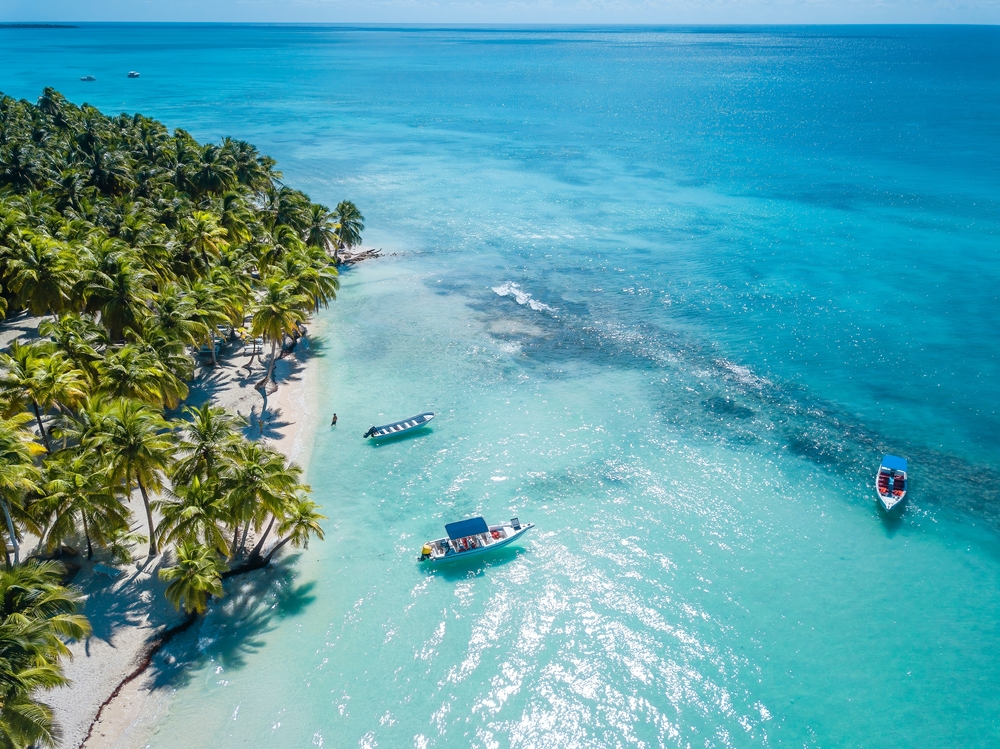
Some people are not going to ever risk visiting these countries.
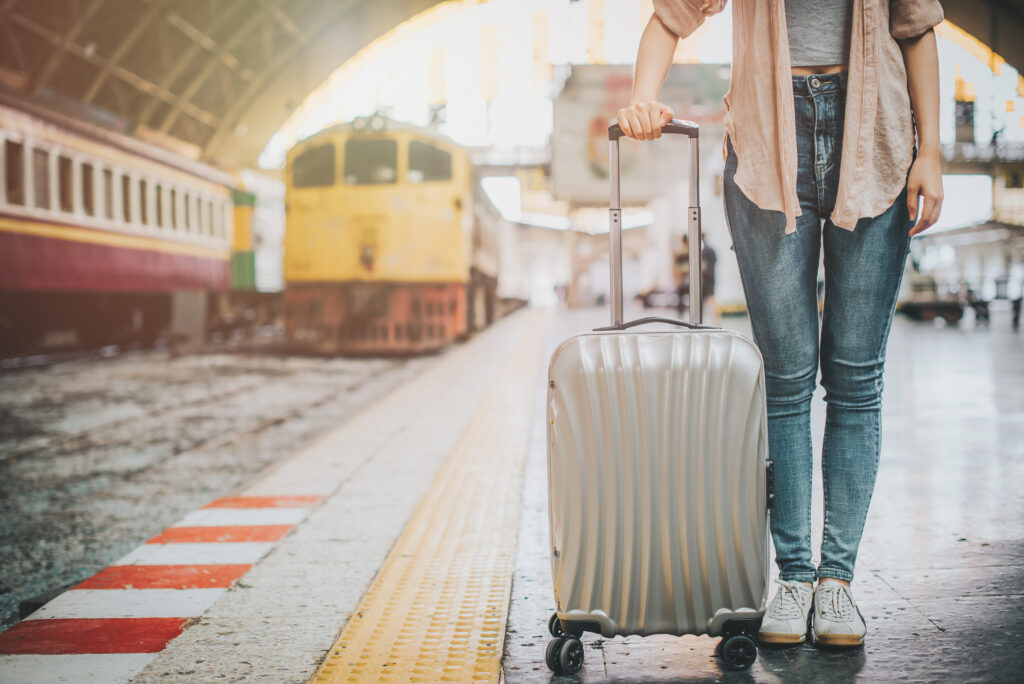
1. El Salvador
El Salvador, a little nation in Central America, is known for its stunning scenery, extensive Mayan heritage, and kind people. Every traveler can find something to do in El Salvador, from seeing the historical sites of Joya de Cerén to unwinding on the Costa del Sol’s gorgeous beaches. Visitors should continue to exercise caution and keep themselves informed about any potential risks or travel advisories even though the nation has achieved tremendous progress in terms of safety.

2. Venezuela
In South America, Venezuela has amazing natural wonders like the stupefying Angel Falls and the breathtaking Los Roques archipelago. However, the nation has recently experienced serious political and economic difficulties, which have resulted in safety concerns and restricted access to basics. Visitors should carefully assess the present circumstances, review travel advisories, and make educated selections when making travel plans.
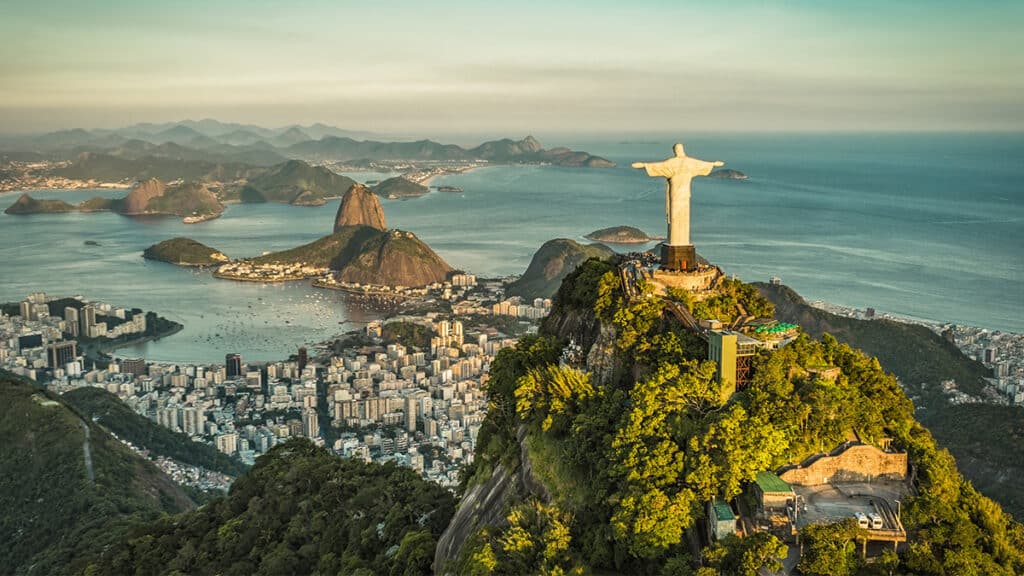
The largest nation in South America, Brazil, is renowned for its colorful culture, breathtaking Amazonian rainforest, and iconic sites like Rio de Janeiro’s Christ the Redeemer statue. Brazil offers many experiences with its vibrant festivals, stunning beaches, and varied fauna. To guarantee a safe and pleasurable vacation, visitors should be aware of several safety concerns, particularly in urban locations, and take the appropriate safety measures.
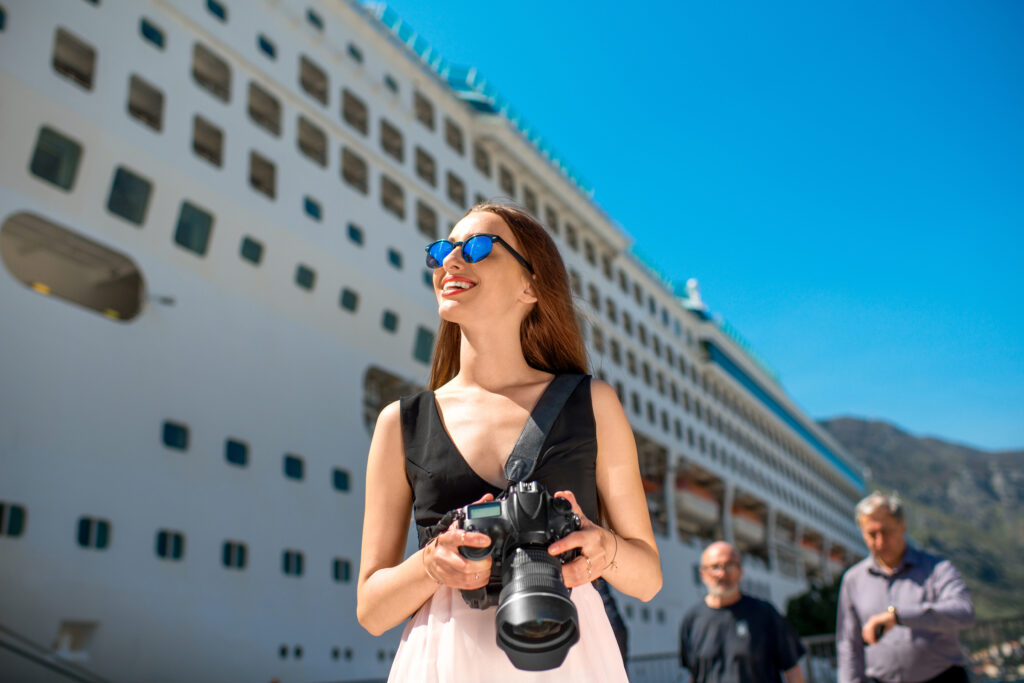
4. Dominican Republic
The Caribbean nation of the Dominican Republic is well known for its immaculate beaches, crystal-clear waters, and all-inclusive resorts. Visitors can participate in water activities, see historic locations like Santo Domingo’s Colonial Zone, or unwind at opulent seaside resorts. While visiting the nation is generally safe and fun, taking basic safety precautions and being aware of your personal things is vital.
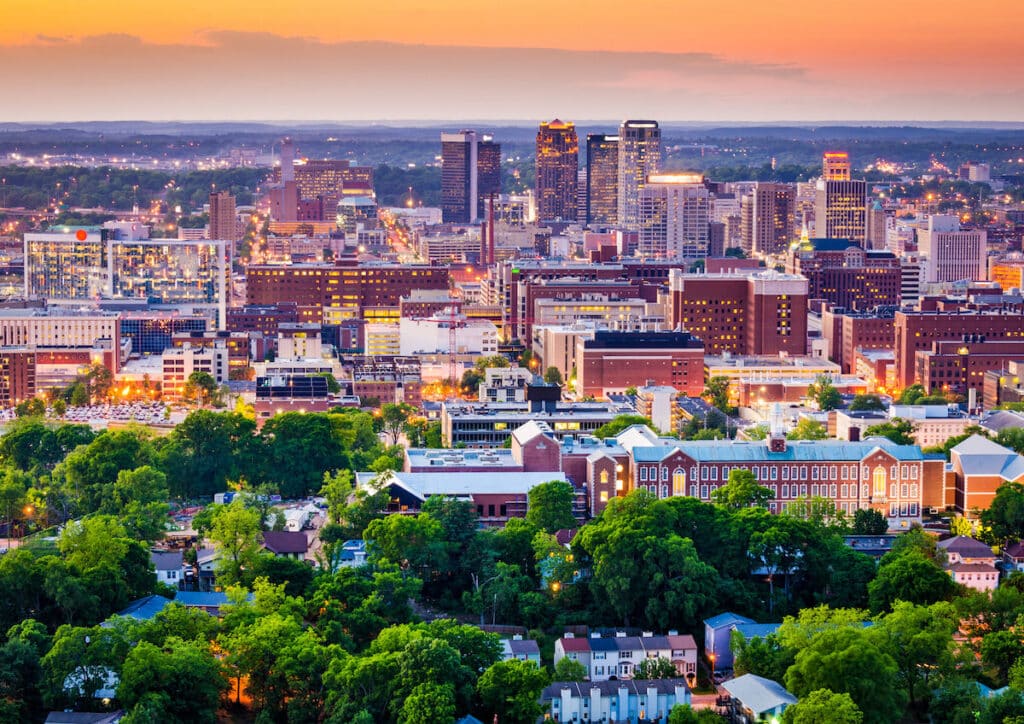
5. Alabama, USA
Alabama, a state in the southeast of the US, is renowned for its extensive history, charming southern atmosphere, and varied topography. Alabama provides a variety of cultural attractions, outdoor activities, and mouthwatering southern cuisine, from the energetic city of Birmingham to the gorgeous Gulf Coast beaches. Although there are no particular safety issues for visitors to Alabama, it is always advisable to take standard safety precautions and pay attention to local laws and customs.

6. Bangladesh
Bangladesh, a country in South Asia, is well-known for its colorful culture, beautiful green landscapes, and historical monuments like the Sundarbans and the ancient city of Bagerhat. Travelers should be aware of a few safety issues, such as possible political upheaval and transportation difficulties, despite the country providing distinctive cultural experiences and breathtaking natural beauty. To have a nice visit, it is advised to stay educated, heed local counsel, and take appropriate precautions.
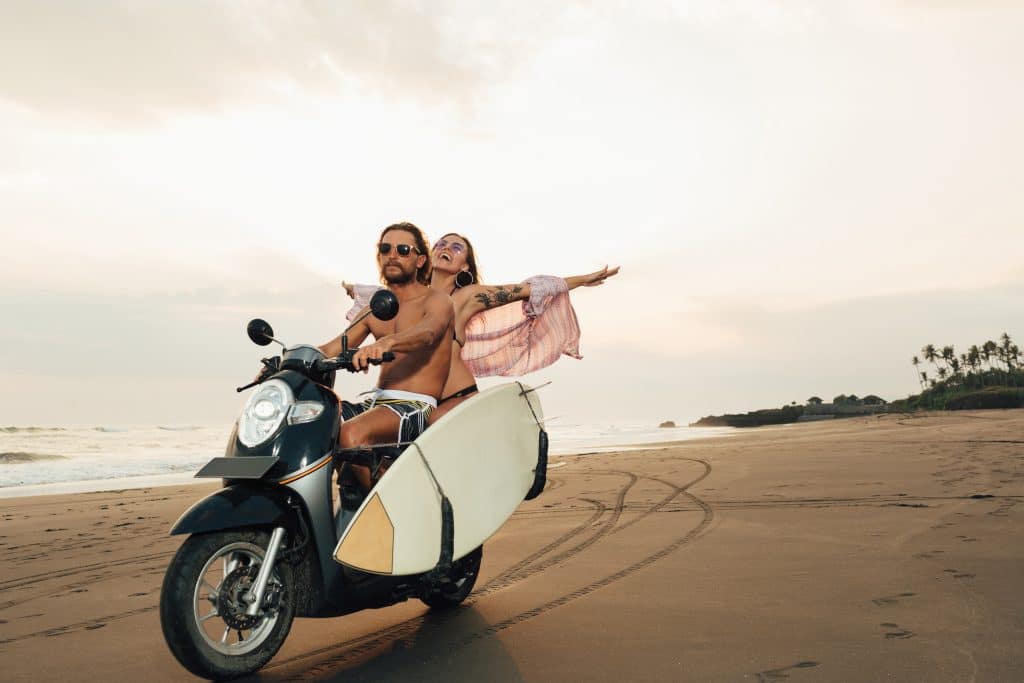
7. New Zealand
The Pacific Ocean nation of New Zealand is renowned for its breathtaking natural scenery, which includes fjords, mountains, and immaculate beaches. Everyone can find something to do in New Zealand, from adventurous pursuits like bungee jumping and trekking to learning about Maori culture and savoring top-notch wines. Travelers may usually unwind without worrying because of the area’s reputation for safety, but it’s always vital to be aware of outdoor risks and observe local customs.

The Western European nation of France is well known for its illustrious past, famous structures like the Eiffel Tower, and exceptional gastronomy. France has a wide variety of attractions, from the quaint alleys of Paris to the Bordeaux wines and the beaches of the French Riviera. Millions of tourists visit the nation each; however, for a safe and enjoyable journey, travelers need to be aware of their surroundings and watch out for pickpockets in crowded areas.
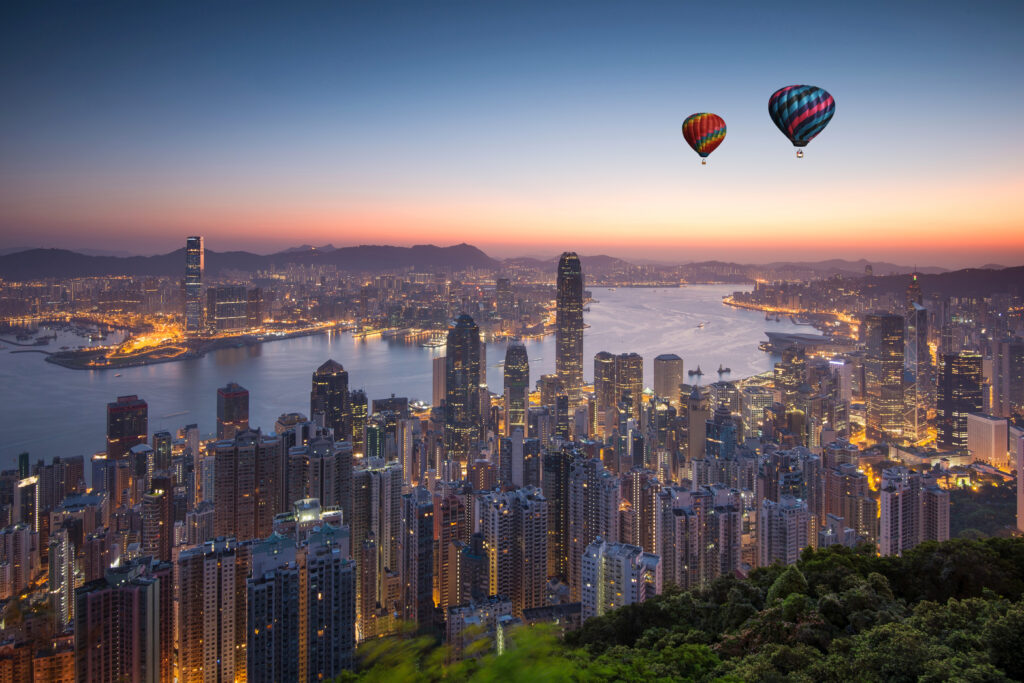
9. Hong Kong
Southeast China’s thriving city of Hong Kong is renowned for its magnificent skyscrapers, thriving street markets, and fusion of cultures. Hong Kong provides a special fusion of Eastern and Western influences, with activities ranging from shopping in up-to-date districts to touring historic locations like the Tian Tan Buddha and Victoria Peak. Although the city is generally secure for visitors, keeping up with any local rallies or demonstrations and abiding by local laws is important.
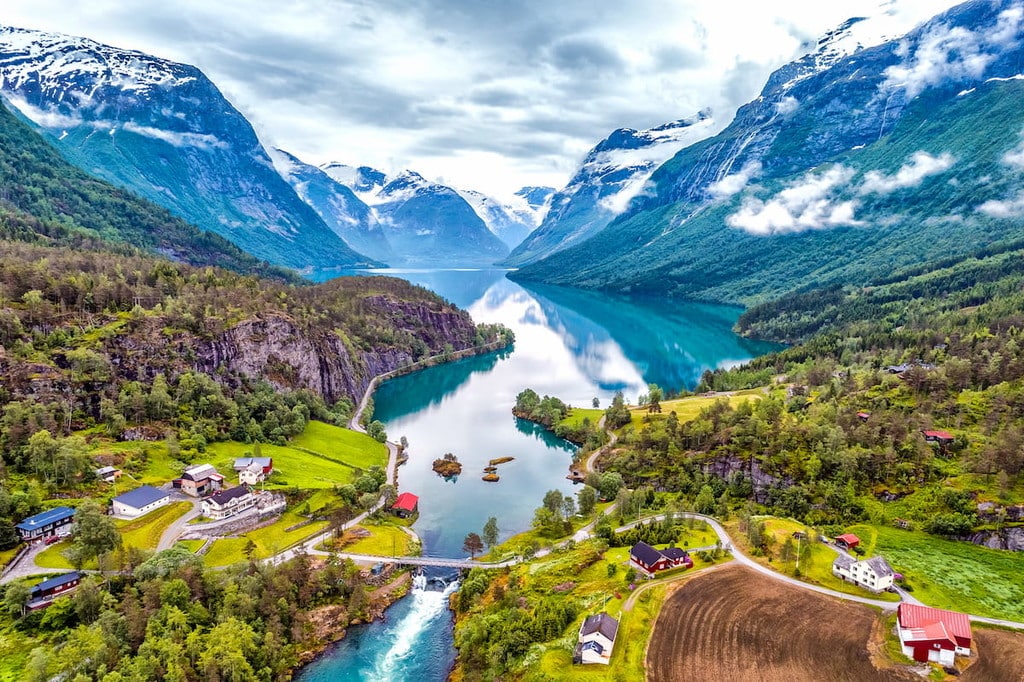
Norway, a country in Northern Europe, is well-known for its magnificent fjords, unspoiled landscape, and alluring Northern Lights. Norway provides wonderful experiences, whether you choose to go trekking in the gorgeous mountains, take a fjord cruise, or tour the charming cities of Oslo or Bergen. Travelers can feel secure during their visit because of the country’s strong standards for safety and well-developed infrastructure. However, it’s crucial to use caution when outdoors and pay attention to the weather.

- “Normal For Boomers In The 80s And Taboo Today” 10 Unacceptable Things Boomers Did That Would Never Happen Now
The society in which you live today has some specific norms. If you compare it to the Boomers’ generation, you’ll realize that you can’t do everything that they did in their time. There are many things baby boomers enjoyed as a part of their childhood.
Gen Z or Gen Alpha can’t even imagine doing those things, as it is way unacceptable in this era. Here are a few things Baby Boomers got away with but is a common thing today:
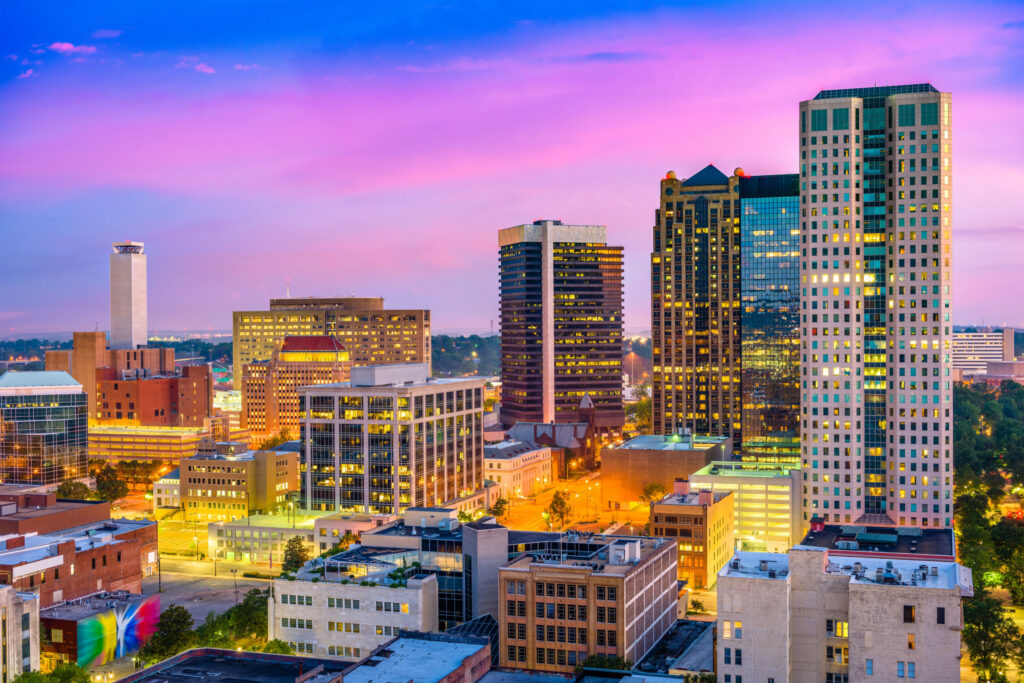
- “The South Isn’t Friendly” 12 Dangerous U.S. Cities You May Want To Move To Before Visiting, Don’t Make That Mistake
Being a well-developed and reputed kingdom, the United States tends to attract many people to visit or migrate. This kingdom has many beautiful states and cities. Their charm attracts people all around the World. But along with these modernized and developed cities, some cities are notorious for their insecure environment. Living or moving to this city may indulge you in difficulties.

- “She Supports Donald Trump?” 10 Surprising Stars Who Support The Former President
There are many stars who support the former president that will surprise you.

- “Please, God, Don’t Order That” 10 Menu Items Fast Food Workers Dread Preparing
Fast food workers encounter a wide variety of customer requests and menu items every day, but there are certain orders that they simply dread making. These items can be particularly challenging or time-consuming to prepare, causing frustration among the employees.

- “Thrilling From The First Episode” 10 TV Shows That Will Kill Boredom
A pilot episode can make or break a series. Here are 10 iconic pilot episodes.
More for You
Suze Orman: Here’s the Minimum You Need To Retire Early
Anthony Bourdain's 5-Ingredient Sandwich Is My Favorite—It's So Delicious
Martin Mull Dead: Actor's Co-Stars, Peers Lead Tributes
'Jeopardy' contestant who earned second lowest score in game show history speaks out: 'A day to forget'
These $2 Bills Are Worth More Than You Think
15 Highest Paying Jobs That Nobody Wants
I’m an Economist: Here’s What a Trump Win in November Would Mean for the Tax Burden on the Poor
How to clear the cache on your iPhone (and why you should)
Are Engine Swaps Legal In The US? Here's What The Law Says
'I own 15,000 houses': Robert Kiyosaki says there's 'nothing wrong' with buying a house — except he uses debt to buy it and 'pay no taxes'
"He offered me some cash in front of my grandma" - Kevin Garnett on how his grandmother pulled out a shotgun on a recruiter
Frustrated Home Depot employee shares photo of countless carts full of gardening products wasted for no good reason: 'Not our call'
These 5 Rare Quarters From Over 20 Years Ago Are Worth a Ton Now
The Mistake You're Making When Thickening Up Your Chili
World's Fastest Train Runs Into Trouble
What happens if you don't use airplane mode on your flight? Here's the answer to that, and more common travel tech questions.
Israel has never been impressed with its version of the $1 billion Patriot air defense system. Now it could offload up to 8 to Ukraine.
20 celebrities who aren’t passing their wealth on to their kids
Dolly Parton scheme giving children free books attacked as ‘white saviourism’
Meet the millionaires next door. These Americans made millions out of nothing.

Venezuela Travel Guide
Your ultimate venezuela travel guide, with tips, and things to see and things to do in venezuela. great for first-time and returning travelers..
Rich with culture, history, and friendly locals, Venezuela is a chance to see something different.
Located on the northern coast of South America, it is filled with many white-sand beaches, blue waters, and natural wonders, making it a great getaway.
Fans of the outdoors will love Angel Falls, the highest waterfall in the world, or Pico Bolívar, the highest mountain in Venezuela.
As English is not spoken here as much, it presents a great opportunity to immerse yourself in a new language.
This Venezuela travel guide will help you plan your next vacation.
Popular Guides
5 Unexpected Reasons to Visit Venezuela
Our Highlight
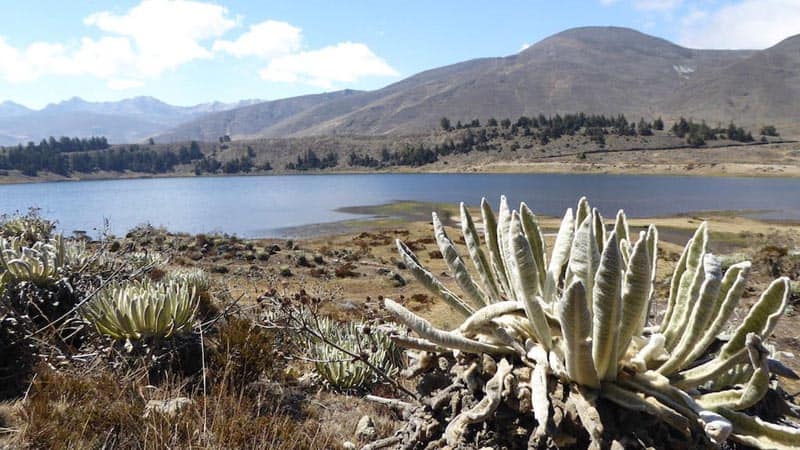
Table of contents
Table of Contents
Fast Facts about Venezuela
- Power voltage is 120V at 60 Hz.
- Venezuela’s currency is the Venezuelan Bolívar and 1 Bolívar is equal to 0.100125 USD.
- The best way to get around Venezuela is by taxi or bus.
- You will need to get a Venezuelan Tourist Visa prior to visiting, as well as a US passport valid for at least 6 months after your stay.
- Crime can and does happen here, so keep valuables close to you and avoid being out at night.
- Popular network providers in Venezuela include Digitel, Movilnet, and Movistar Mobile. Prepaid SIM cards can be purchased through any of these networks. Note that your phone needs to be unlocked in order to use a SIM card, meaning you will probably have to contact your current mobile provider to change your settings to unlocked.
- Venezuela has a sales tax rate of 16%.
Things to See and Do in Venezuela
- Canaima National Park: Fans of natural wonders will love the Canaima National Park. Declared a World Heritage Site, this park is the sixth-biggest national park in the world and is full of beautiful landscapes, diverse fauna, table-top mountains, and cliffs. Points of interest include Angel Falls (the highest waterfall in the world) and Mount Roraima (the highest of the table-top mountains). This park also has camping spots.
- Parque El Agua: Come see Venezuela’s first waterpark. Whether you want to relax in the lazy river or venture through numerous waterslides (including the 18-meters high Churun Meru), this is sure to be a fun day for the whole family.
- Morrocoy National Park: Set on the Caribbean coast of Venezuela, this island is perfect for those looking for a getaway. Relax on white-sand beaches, explore numerous cays (including the very popular Cayo Sombrero), look for dolphins, whales and green sea turtles, and stroll through the nearby towns.
- National Pantheon of Venezuela: Come learn more about Venezuela’s history at this landmark in Caracas. Created in 1870, this mausoleum is now a final resting place for many of the heroes of South America, and also contains historical works of art, including a four-thousand-piece crystal chandelier.
- Teleférico de Caracas: Take a cable lift and enjoy beautiful aerial views of Caracas while you ride to the El Ávila Mountain. Once on top, explore the El Ávila National park, grab a bite to eat, or go to the skating rink.
Venezuela Travel Guides
- 32 of The Tallest Mountains in the World by Continent
- All You Need to know about the Top 10 Best Hikes in South America
Accommodation
Budget: You can find some cheaper hotels at around 200 to 400 Bolívars per night. These hotels come with private rooms, Wi-Fi, and sometimes the hotel’s restaurant and bar.
Mid-Range: For mid-range hotels, expect to pay between 500 to 800 Bolívars per night and enjoy private rooms and suites, an outdoor pool, fitness centers, and one (or more) restaurants inside the hotel.
High-End: Upscale hotels can go from 1,000 to 2,500 Bolívars per night. Amenities include outdoor pools, saunas, massage and salon services, airport transportation, a gift shop, and banquet rooms.
Check out our favorite booking platforms Booking.com , Tripadvisor and VRBO for the best deals on accommodation.
The Best Ways to Get Around Venezuela
Getting to venezuela:.
Getting to Venezuela: The Simón Bolívar International Airport is the main airport for getting to Caracas, the capital of Venezuela, and is just 13 miles from the city center. The La Chinita International Airport is an alternative airport located in Maracaibo (northwest Venezuela), and is just over 9 miles from the downtown area.
Flights: You can check for the best flights to Venezuela on Skyscanner .
Transportation:
Train: The train system for passengers is nonexistent.
Bus: Buses are a cheap way to get around Venezuela and can be found in all major cities and towns. You can find buses for short trips with very cheap fares, as well as buses for long-distance trips that come with their own air-conditioning. You can also look for por puestos, which are essentially a ride share service that operates like a bus. Caracas also has its own metro system that runs frequently, with a typical fare costing less than 5 Bolívars.
Taxis: Taxis are another good way to get around and come with cheap fares compared to other countries. As they do not operate on a meter, it is a good idea to ask around about typical fares so you can negotiate the price with the driver. You can take a taxi for an individual trip or, if you know where you will be traveling, you can contact a travel agency and arrange private taxi transfers between cities.
Rent a car: To rent a car in Venezuela, you need to be at least 21 years old and have a U.S. driver’s license. Prices start at around 400 to 600 Bolívars a day.
You can also compare prices here
When to go To Venezuela
- Venezuela, with its tropical climate, has two seasons: wet and dry. The wet season is between May and October and is considered the best time to see Angel Falls due to the increase in rainfall. March through May are the warmest months in Caracas. For those who want to pursue outdoor activities like hiking, November is a good month to visit due to the warmer temperatures and the start of the dry season. If you’re going to Los Llanos, October may give you the best chance to see wildlife.
Where to Stay in Venezuela
Hotel Waldorf: Stay in this beautiful 3.5-star hotel in Caracas. Its prime location makes it a quick trip to the local movie theaters and beauty shops, as well as the Government Palace. Afterwards, relax in an air-conditioned room or suite, head to the fitness center, lounge in the swimming pool and terrace area, or dine at the sky bar and restaurant.
InterContinental Maracaibo: Featuring beautiful views of the Maracaibo Lake, this four-star hotel is just minutes away from the Vereda del Lago park and the Aguamania waterpark, and just a thirty-minute drive to the La Chinita Airport. InterContinental’s amenities include complimentary breakfast, an Italian restaurant with 2 bars, and an outdoor pool and hot tub. Languages spoken at this hotel include English.
Lidotel Hotel Boutique Barquisimeto: Come stay at this four-star hotel in Barquisimeto. Featuring a grand piano in the lobby and beautiful artwork in the rooms, this stylish hotel also includes a fitness center and outdoor pool, complimentary breakfast, free Wi-Fi, flat-screen TVs in each room, and the hotel’s own restaurant. The Lidotel also includes a private and secure walkway to the nearby shopping mall with many stores.
What to Pack for Venezuela
- Sunscreen: Protect your skin from the beautiful sun with some sunscreen.
- Spanish Phrasebook: As many people do not speak English, bringing a phrasebook to help with translations will help you out.
- Swimsuit: With so many beaches and waters to explore, make sure to bring a swimsuit with you.
See our packing tips: packing tips
Venezuela Travel Guide: Best Booking Resources
Whenever we travel to we make sure to start with these companies. We have tried a lot of different ones over the years and all of these have consistently proven to be the best when it comes to offering great prices.
We have used every one of these personally and continue to do so.
- Booking.com : This is our go site to when comparing prices for accommodation. It usually has the cheapest prices, especially in Europe and we love their interface. Not to mention you get free cancellation and you are guaranteed the best price.
- Trip Advisor : What we like about Trip Advisor is that we can look at all the reviews and then book our accommodation. TripAdvisor is where we go when we want to compare prices with multiple accommodation providers.
- VRBO : is the main search engine we use when we are looking for a home or apartment rental. It can sometimes be cheaper than hotels and it is the best way to stay in areas that offer a more local feel.
- Hostelworld : With one of the largest databases of hostels in the world, Hostelworld is the go-to site when you are looking for budget accommodation.
- Skyscanner : This is the first place we check for flights. It consistently comes back with the cheapest and best options. It allows us to compare a lot of airlines to get the best price.
- Rome 2 Rio : If you want to see how to get somewhere by plane, train, bus, ferry or car Rome2Rio lays it all out for you as well as related costs.I love how they show it all to you on a Google Map and it works offline.
- Get Your Guide: For all your day trip and city guide needs, we use Get Your Guide. It has the world’s largest collection of things to do with more than 30,000 activities in 7500 destinations.
- World Nomads Insurance: When traveling to Italy you should always have travel insurance. We have found the best bang for your buck is by far World Nomads.
Venezuela Travel Guide: Related Articles
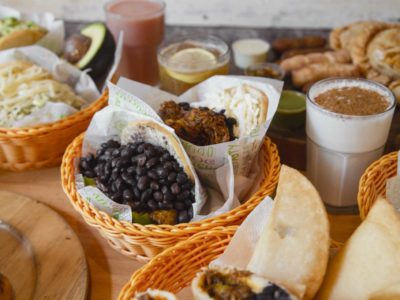
Venezuelan Food: 19 Dishes to try in Venezuela or at Home
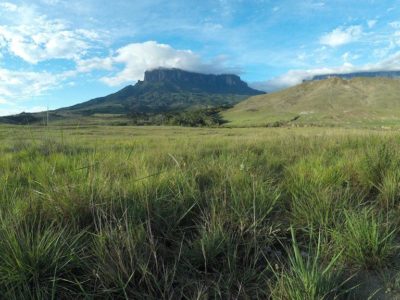

11 Best Places To Visit In Venezuela
Coro and Ciudad Bolivar, two colonial cities nestled in Venezuela, encapsulate centuries of history, culture, and architectural splendor. Founded in the early days of Spanish colonization , these cities served as vital centers of trade, governance, and cultural exchange during the colonial era. Coro, with its UNESCO World Heritage Site designation, boasts a well-preserved historic center adorned with colonial-era buildings and landmarks.
Meanwhile, Ciudad Bolivar, once known as Angostura, played a pivotal role in Venezuela’s struggle for independence and continues to enchant visitors with its picturesque streets and significant monuments. Together, these cities offer a captivating journey into Venezuela’s colonial past.
1. Canaima National Park
Canaima National Park, a UNESCO World Heritage Site located in southeastern Venezuela, best cities to visit in venezuela , is a vast wilderness area renowned for its stunning landscapes and rich biodiversity. Spanning over 30,000 square kilometers , the park encompasses dense rainforests, towering tepuis (tabletop mountains), and cascading waterfalls, including the iconic Angel Falls, the tallest waterfall in the world.
Activities Available
Visitors to Canaima National Park can partake in a variety of outdoor adventures amidst its pristine natural beauty. Popular activities include:
- Trekking: Explore scenic trails that wind through the park’s diverse ecosystems, offering opportunities to encounter rare wildlife and breathtaking vistas.
- Canoeing and Boating: Navigate the park’s network of rivers and lagoons by canoe or motorboat, taking in the majestic scenery and visiting remote indigenous villages along the way .
- Waterfall Excursions: Embark on guided tours to marvel at the park’s numerous waterfalls, including the awe-inspiring Angel Falls, where adventurous travelers can swim in natural pools at the base of the cascades.
Accommodation Options
While Canaima National Park is primarily a wilderness area, there are several accommodation options available for visitors seeking to immerse themselves in the natural splendor of the park:
- Camping: Adventurous travelers can pitch tents at designated campsites within the park, providing an immersive outdoor experience beneath the starlit skies of Canaima.
- Luxury Lodges: For those seeking more upscale accommodations, a few luxury lodges and resorts are located on the outskirts of the park , offering comfortable rooms, gourmet dining, and guided tours in air-conditioned comfort.
2. Los Roques Archipelago
The Los Roques Archipelago, situated off the northern coast of Venezuela in the Caribbean Sea, is a pristine marine park comprising over 300 islands, great places to visit in venezuela , cays, and islets. Known for its crystal-clear turquoise waters, powdery white sand beaches, and vibrant coral reefs , Los Roques is a paradise for beach lovers, snorkelers, and nature enthusiasts alike .
The Archipelago: Los Roques Archipelago is a haven for travelers seeking tranquility and natural beauty amidst a secluded island paradise. The archipelago’s remote location and protected status have helped preserve its pristine ecosystems, making it a UNESCO World Biosphere Reserve and one of Venezuela’s most treasured natural gems.
Popular Activities
Visitors to Los Roques can indulge in a variety of activities that showcase the archipelago’s natural wonders:
- Snorkeling and Diving: Explore the vibrant coral reefs teeming with colorful marine life, including tropical fish, sea turtles, and rays, in the archipelago’s warm, clear waters.
- Beachcombing: Relax on pristine beaches lined with soft, white sand and swaying palm trees, perfect for sunbathing, picnicking, or simply enjoying the tranquil surroundings.
- Kiteboarding and Windsurfing: Take advantage of the archipelago’s steady trade winds and shallow lagoons, ideal for adrenaline-pumping water sports like kiteboarding and windsurfing.
Recommended Islands to Visit
While all of the islands in Los Roques offer their unique charm and beauty, some stand out as must-visit destinations :
- Cayo de Agua: Known for its stunning sandbars, shallow lagoons, best places to visit in caracas venezuela , and crystal-clear waters, Cayo de Agua is a popular spot for swimming, snorkeling, and beach picnics.
- Francisco: This picturesque island boasts secluded beaches, lush vegetation, and excellent snorkeling opportunities along its coral reefs.
- Crasqui: With its tranquil atmosphere and pristine beaches, Crasqui is the perfect island for relaxation and solitude, ideal for a peaceful day of sunbathing and swimming.
3. Mount Roraima
Mount Roraima, often referred to as the “Floating Island,” is a massive flat-topped mountain located at the tripoint border of Venezuela, Brazil, and Guyana in South America. This ancient geological formation, believed to be over two billion years old, rises abruptly from the surrounding rainforest, its sheer cliffs towering over 1,000 meters above the jungle below.
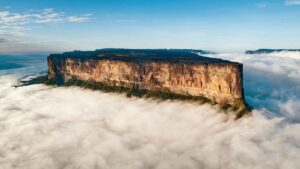
Description of the Mountain: Mount Roraima’s distinctive tabletop summit spans an area of approximately 31 square kilometers, making it one of the largest tepuis (tabletop mountains) in the world . Its sheer vertical cliffs and flat, barren plateau give it an otherworldly appearance, shrouded in mist and clouds that often cloak its summit.
Trekking Opportunities: Trekking to the summit of Mount Roraima is a bucket-list adventure for outdoor enthusiasts and nature lovers. The most popular trekking route begins in the Gran Sabana region of Venezuela, where hikers embark on a multi-day journey through dense rainforests, across rocky terrain, and up steep slopes to reach the mountain’s summit. Along the way, trekkers encounter breathtaking landscapes, diverse ecosystems, and unique flora and fauna found nowhere else on Earth.
Unique Features: Additionally, Mount Roraima holds cultural significance for indigenous communities, who consider it a sacred place inhabited by powerful spirits and ancient legends.
4. Morrocoy National Park
Morrocoy National Park, located along Venezuela’s central coast, is a coastal paradise renowned for its pristine beaches, crystal-clear waters, and rich biodiversity. This protected marine park encompasses a diverse range of ecosystems, including mangrove forests, top cities to visit in venezuela , coral reefs, and sandy cays, making it a popular destination for beachgoers, water sports enthusiasts, and nature lovers alike.
What it Offers
Morrocoy National Park offers visitors a wide array of attractions and activities to enjoy:
- Stunning Beaches: The park is home to numerous idyllic beaches with powdery white sands and calm turquoise waters, perfect for sunbathing, swimming, and beachcombing.
- Water Activities: Visitors can partake in a variety of water sports and recreational activities, including snorkeling, scuba diving, kayaking, and paddleboarding, to explore the park’s vibrant underwater world and pristine coral reefs.
- Boat Tours: Guided boat tours are available for visitors to explore the park’s picturesque islands, secluded cays, and hidden lagoons, offering opportunities for sightseeing, wildlife spotting, and snorkeling at remote reef sites.
- Island Hopping: With over 50 islands and cays scattered throughout the park, island hopping is a popular activity, allowing visitors to discover secluded beaches, tranquil bays, and scenic viewpoints.
Beaches and Water Activities
Morrocoy National Park boasts some of the most beautiful beaches in Venezuela, including Playa Mero, Playuela, and Cayo Sombrero, each offering pristine sands, calm waters, and excellent snorkeling opportunities. Visitors can swim, sunbathe, and relax on the beaches or explore the underwater world teeming with colorful fish, coral formations, and marine life.
Wildlife Encounters: While Morrocoy National Park is primarily known for its marine environment, it is also home to a diverse array of terrestrial and avian species. Visitors may encounter wildlife such as iguanas, hermit crabs, and seabirds while exploring the park’s mangrove forests, coastal scrublands, and rocky outcrops.
A Overall, Morrocoy National Park offers a perfect blend of natural beauty, outdoor adventure, and wildlife encounters, making it an ideal destination for travelers seeking a tropical escape along Venezuela’s stunning coastline.
Merida, nestled in the Andes Mountains of western Venezuela, is a vibrant city known for its colonial charm, cultural heritage, and outdoor adventures. Situated at an elevation of over 1,500 meters, Merida boasts a pleasant climate, stunning mountain scenery, and a wealth of attractions and activities for visitors to enjoy.
City Overview: Founded in 1558 by Spanish conquistadors, good places to go in venezuela , Merida is one of Venezuela’s oldest cities, with a rich history and architectural heritage evident in its well-preserved colonial buildings, cobblestone streets, and charming plazas. The city serves as a hub for tourism, education, and commerce in the region, attracting visitors from around the world with its unique blend of tradition and modernity.
Attractions and Activities
Merida offers a wide range of attractions and activities to suit every traveler’s interests:
- Cable Car to Pico Bolivar: Ride the world’s longest and highest cable car, known locally as the “Teleférico,” to the summit of Pico Bolivar, Venezuela’s highest peak. Enjoy panoramic views of the Andes Mountains and surrounding countryside from the cable car cabins and observation decks.
- Historic Downtown: Explore Merida’s historic downtown area, home to colonial-era landmarks such as Plaza Bolivar, the Cathedral of Merida, and the Church of La Tendida. Wander through narrow streets lined with colorful buildings, artisan shops, and sidewalk cafes, soaking in the city’s unique atmosphere.
- Archaeological Museum: Visit the Archaeological Museum of Merida to learn about the region’s pre-Columbian history and indigenous cultures through exhibits featuring pottery, artifacts, and artwork dating back thousands of years.
- Andean Music and Dance: Experience the vibrant cultural scene of Merida by attending traditional music and dance performances featuring Andean instruments such as the cuatro, maracas, and Tambora, showcasing the region’s rich musical heritage.
Nearby Natural Wonders
- Merida serves as a gateway to some of Venezuela’s most spectacular natural wonders:
- Sierra Nevada National Park: Explore the rugged landscapes and diverse ecosystems of Sierra Nevada National Park, home to cloud forests, páramo grasslands, and high-altitude lakes. Hike scenic trails to waterfalls, glacial valleys, and mountain peaks, encountering unique flora and fauna along the way .
- Mucubaji Lagoon: Visit Mucubaji Lagoon, a picturesque alpine lake located within Sierra Nevada National Park, renowned for its crystal-clear waters, scenic surroundings, and opportunities for hiking, picnicking, and birdwatching.
- Los Aleros: Discover the charming Andean village of Los Aleros, a living museum showcasing traditional rural life in Venezuela. Explore replica colonial buildings, artisan workshops, and cultural exhibits, and enjoy horseback riding, folk music, and local cuisine.
Merida’s strategic location amidst the Andes Mountains offers endless opportunities for adventure, exploration, and cultural immersion, making it a must-visit destination for travelers seeking authentic experiences in the heart of Venezuela.
6. Cerro Autana
Cerro Autana, a majestic sandstone mesa located in the Venezuelan Amazon, is an iconic natural landmark revered for its breathtaking beauty, ecological significance, and cultural importance to indigenous communities. Rising abruptly from the surrounding rainforest , this ancient geological formation captivates travelers with its sheer cliffs, lush vegetation, and mystical aura.
Access and Hiking Options: Accessing Cerro Autana typically involves a journey by boat along the Ventura River, followed by a trek through the dense rainforest to reach the base of the mountain . From there, adventurous travelers can embark on guided hiking expeditions to explore the mountain’s rugged terrain, ascending steep trails and scrambling over rocky outcrops to reach its summit. Along the way, best places to go in caracas venezuelal , hikers may encounter exotic wildlife, tropical birds, and endemic flora, immersing themselves in the pristine wilderness of the Amazon.
Cultural Significance: Cerro Autana holds deep cultural significance for indigenous communities, particularly the Piaroa and Ye’kuana peoples who inhabit the surrounding rainforest. For centuries, indigenous shamans have revered Cerro Autana as a source of spiritual wisdom, healing energy, and cultural identity, passing down traditional knowledge and oral histories from generation to generation.
Caracas, the bustling capital city of Venezuela, is a vibrant metropolis nestled in a valley surrounded by the majestic Avila Mountain. Known for its rich cultural heritage, lively atmosphere, and stunning landscapes, Caracas offers visitors a myriad of attractions, cultural experiences, and culinary delights to explore.
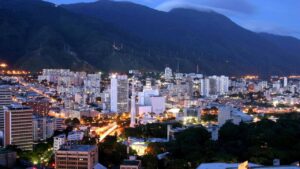
Capital City Highlights
- El Ávila National Park: Ascend the slopes of Avila Mountain via the iconic Teleférico cable car for panoramic views of the city and surrounding countryside. Enjoy hiking, picnicking, and birdwatching amidst the park’s lush forests and scenic trails.
- Plaza Bolívar: Visit the historic Plaza Bolívar, the heart of Caracas, adorned with statues, fountains, and colonial-era buildings. Explore landmarks such as the Cathedral of Caracas, the National Capitol, and the Bolívar Museum, dedicated to Venezuela’s revered independence hero.
- National Pantheon: Discover the National Pantheon, a neoclassical mausoleum housing the remains of Venezuela’s most prominent historical figures, including Simón Bolívar, the liberator of Latin America.
Cultural Experiences
- Theater and Arts: Immerse yourself in Caracas’ vibrant cultural scene by attending performances at renowned venues like the Teresa Carreño Cultural Complex and the Municipal Theater.
- Museums and Galleries: Explore Caracas’ diverse art and history museums, top 3 places to visit in venezuela , showcasing everything from pre-Columbian artifacts to contemporary Venezuelan art.
- Street Markets: Wander through bustling street markets like Mercado de los Pueblos, Mercado de Catia, and Mercado de Chacao to sample local delicacies, shop for handicrafts, and immerse yourself in the city’s vibrant street life.
Safety Tips
- Stay Alert: Be vigilant and aware of your surroundings, especially in crowded areas, markets, and public transportation.
- Avoid Flashy Displays: Keep valuables such as jewelry, cameras, and electronics out of sight to avoid attracting unwanted attention.
- Use Licensed Taxis: Opt for licensed taxis or reputable ride-sharing services like Uber for transportation, especially at night.
- Travel in Groups: Whenever possible, travel with companions and avoid exploring unfamiliar areas alone, particularly after dark.
- Respect Local Customs: Familiarize yourself with local customs and cultural norms to avoid inadvertently causing offense or misunderstanding.
While Caracas offers a wealth of cultural experiences and attractions, it’s essential to exercise caution and take necessary precautions to ensure a safe and enjoyable visit to this dynamic capital city of Venezuela.
8. The Orinoco Delta
The Orinoco Delta, located in northeastern Venezuela, is one of the largest river deltas in the world , spanning over 41,000 square kilometers. This vast and biodiverse region is characterized by a network of intricate waterways, lush tropical rainforests, and expansive wetlands, making it a unique and ecologically significant destination for travelers seeking adventure and exploration.
Overview of the Delta: The Orinoco Delta is formed by the convergence of the Orinoco River and its tributaries as they flow into the Atlantic Ocean. The delta’s complex system of rivers, channels, and mangrove forests creates a diverse ecosystem that supports a wide array of plant and animal species, including birds, mammals, reptiles, and fish. The region’s rich biodiversity and pristine landscapes make it a haven for nature lovers and wildlife enthusiasts.
Activities and Tours
Visitors to the Orinoco Delta can partake in a variety of activities and tours that showcase the region’s natural beauty and cultural heritage:
- Boat Tours: Explore the delta’s labyrinthine waterways on guided boat tours, navigating through dense mangrove forests, hidden lagoons, and tranquil rivers. Boat tours offer opportunities for birdwatching, wildlife spotting, and scenic photography amidst the delta’s picturesque landscapes.
- Canoeing and Kayaking: Embark on guided canoe or kayak excursions to paddle through narrow channels, creeks, and flooded forests, immersing yourself in the delta’s pristine wilderness and experiencing its serene beauty up close.
- Fishing Expeditions: Cast a line and try your hand at fishing for a variety of freshwater species found in the delta’s rivers and estuaries, including peacock bass, piranhas, and catfish. Fishing expeditions offer a relaxing and rewarding way to connect with nature and enjoy the delta’s bounty.
- Cultural Encounters: Visit indigenous communities nestled along the banks of the Orinoco Delta to learn about traditional lifestyles, cultural practices, and craftsmanship. Indigenous guides lead tours that provide insights into the customs, beliefs, and sustainable living practices of the Warao and other indigenous peoples who call the delta home.
Indigenous Communities
These communities have inhabited the delta for centuries, relying on its rich natural resources for sustenance and livelihoods. Visitors can engage in cultural exchanges with indigenous villagers, participate in traditional activities such as craft-making and storytelling, and gain a deeper understanding of the indigenous way of life in the delta.
In summary, the Orinoco Delta offers a wealth of experiences for travelers seeking adventure, nature, and cultural immersion. From exploring its intricate waterways to engaging with indigenous communities, the delta promises an unforgettable journey into the heart of Venezuela’s natural and cultural heritage.
9. Margarita Island
Margarita Island, situated off the northeastern coast of Venezuela in the Caribbean Sea, is a tropical paradise renowned for its pristine beaches, vibrant culture, and rich history.

With its golden sands, turquoise waters, and year-round sunshine, Margarita Island beckons travelers seeking relaxation, adventure, and authentic Caribbean experiences.
Margarita Island, also known as the “Pearl of the Caribbean,” boasts a diverse landscape ranging from palm-fringed beaches and lush rainforests to rugged mountains and colorful coral reefs. Its strategic location along historic trade routes has made it a melting pot of cultures, blending Spanish, African, and indigenous influences into a unique island identity.
Beaches and Resorts
Margarita Island is home to some of the most beautiful beaches and luxurious resorts in the Caribbean:
- Playa El Agua: This expansive beach stretches for kilometers along the island’s northeastern coast, offering soft white sands, gentle waves, and a vibrant beach scene with bars, restaurants, and water sports rentals.
- Playa Parguito: A favorite among surfers and sunbathers, Playa Parguito boasts excellent waves for surfing , as well as calm waters ideal for swimming and snorkeling. Beachfront restaurants and vendors offer fresh seafood and refreshing beverages.
- Resort Destinations: From all-inclusive resorts to boutique hotels, Margarita Island offers accommodations to suit every traveler’s preferences and budget. Resorts like Dunes Beach Resort, Lidotel Hotel Boutique Margarita, and Hesperia Isla Margarita provide luxurious amenities, stunning views, and access to private beaches.
Local Cuisine and Shopping
Margarita Island tantalizes visitors’ taste buds with its delicious cuisine and vibrant markets:
- Seafood Delicacies: Indulge in the island’s fresh seafood delicacies, including grilled lobster, ceviche, and pargo (red snapper) prepared with local spices and seasonings. Don’t miss trying traditional dishes like pabellón criollo (a hearty stew) and arepas (cornmeal cakes).
- Shopping: Explore Margarita Island’s bustling markets and shopping districts for unique souvenirs, handicrafts, and duty-free goods. Visit places like Mercado de Conejeros, Sambil Margarita Mall, and the Porlamar Handicraft Market to shop for jewelry, clothing, art, and local specialties like rum and cigars.
- Local Markets: Immerse yourself in the island’s vibrant culture by visiting local markets like Mercado de los Conejeros and Juan Griego Market, where you can sample tropical fruits, spices, and street food specialties while mingling with friendly locals.
Margarita Island captivates travelers with its natural beauty, warm hospitality, and diverse array of experiences, making it a sought-after destination for Caribbean getaways. Whether you’re seeking relaxation on sun-kissed beaches, culinary adventures, or shopping excursions, Margarita Island offers something for everyone to enjoy amidst its tropical paradise.
10. The Llanos
The Llanos, also known as the “plains,” is a vast grassland region that stretches across eastern Colombia and western Venezuela. This expansive savanna landscape is characterized by wide open spaces, meandering rivers, and abundant wildlife, making it a haven for nature enthusiasts, wildlife photographers, and adventure seekers.
Overview of the Plains: The Llanos is a region of contrasts, with its flat, treeless plains giving way to dense forests, wetlands, and marshes during the rainy season. The landscape is dotted with palm trees, shrubs, and occasional stands of gallery forest along riverbanks, providing habitat for a diverse array of plant and animal species.
Wildlife Spotting
The Llanos is renowned for its rich biodiversity and abundant wildlife, offering visitors unparalleled opportunities for wildlife spotting and birdwatching:
- Giant Anteaters: Encounter the iconic giant anteater, one of the Llanos’ most emblematic species, as it roams the grasslands in search of ants and termites with its long, bushy tail and elongated snout.
- Jaguars and Pumas: Explore the Llanos’ remote wilderness areas in search of elusive big cats like jaguars and pumas, which roam the savannas and forests in search of prey such as deer, capybaras, and wild boar.
- Birdwatching: With over 300 bird species recorded in the Llanos, including colorful macaws, toucans, and herons, birdwatchers will delight in spotting rare and endemic avian species amidst the region’s diverse habitats.
- Capuchin Monkeys: Observe troops of capuchin monkeys frolicking in the treetops, displaying their acrobatic skills and social behaviors while foraging for fruits and insects.
Ranch Experiences
Ranching is a way of life in the Llanos, where traditional cattle ranches, known as “llanerías,” offer visitors authentic cowboy experiences and cultural immersion:
- Cowboy Culture: Experience the rich llanero culture firsthand by participating in traditional activities such as cattle herding, horseback riding, and lassoing, guided by skilled vaqueros (cowboys) who share their expertise and stories of ranch life.
- Campfire Dinners: Gather around a campfire under the starlit sky to enjoy hearty llanero cuisine, including grilled meats, arepas, and empanadas, accompanied by lively music and dancing to the rhythms of joropo music.
- Eco-Tours: Join guided eco-tours led by local ranchers and naturalist guides to explore the Llanos’ diverse ecosystems, and learn about native flora and fauna, conservation efforts, and sustainable ranching practices.
- Sunset Safaris: Embark on thrilling safari excursions at dawn or dusk to witness breathtaking sunrises and sunsets over the vast plains, while searching for wildlife such as caimans, anacondas, and capybaras along riverbanks and waterholes.
In summary, the Llanos offers an immersive wilderness experience that allows visitors to connect with nature, explore diverse ecosystems, and experience the rich cultural heritage of the region’s cowboy culture. Whether embarking on wildlife safaris, ranch adventures, or eco-tours, the Llanos promises unforgettable encounters with the natural and cultural treasures of eastern Colombia and western Venezuela.
11. Colonial Cities: Coro and Ciudad Bolivar
Coro and Ciudad Bolivar, two colonial cities in Venezuela, are steeped in history, boasting exquisite architecture, significant landmarks, and vibrant cultural traditions that reflect their rich colonial heritage.
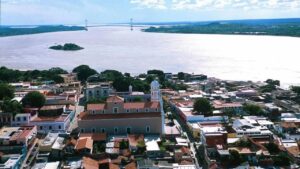
Historical Significance
- Coro: Founded in 1527, Coro is one of the oldest cities in Venezuela and served as the country’s first capital. It played a pivotal role in Spanish colonial history as a major center of trade and commerce, serving as a hub for expeditions to the New World. Coro’s historic center, with its well-preserved colonial buildings and narrow cobblestone streets, is a UNESCO World Heritage Site, recognized for its cultural and architectural significance.
Architecture and Landmarks
- Coro: Explore Coro’s architectural treasures, including the Cathedral of Santa Ana, a stunning example of Spanish colonial architecture with its Baroque façade and ornate interior. Other notable landmarks include the Casa de las Ventanas de Hierro (House of Iron Windows), the Church of San Francisco, and the Juan Crisóstomo Falcón House Museum, showcasing artifacts and exhibits related to the city’s history and culture.
- Ciudad Bolivar: Wander through Ciudad Bolivar’s historic district, admiring its colonial-era buildings, colorful facades, and picturesque plazas. Highlights include the San Isidro Cathedral, the Casa del Congreso de Angostura (Congress of Angostura House), and the Casa San Isidro, a beautifully restored colonial mansion now serving as a cultural center and museum.
- Coro: Immerse yourself in Coro’s vibrant cultural scene by attending traditional music and dance performances, exploring local art galleries and craft markets, and sampling delicious regional cuisine influenced by Spanish, African, and indigenous flavors.
- Ciudad Bolivar: Discover Ciudad Bolivar’s cultural heritage through guided walking tours, cultural festivals, and culinary experiences. Don’t miss trying local specialties like cachapas (corn pancakes), arepas (cornmeal cakes), and hallacas (traditional Christmas tamales) while exploring the city’s charming streets and squares.
Both Coro and Ciudad Bolivar offer visitors a glimpse into Venezuela’s colonial past, with their rich history, stunning architecture, and vibrant cultural traditions providing a fascinating backdrop for exploration and discovery. Whether wandering through cobblestone streets, admiring colonial landmarks, or indulging in local cuisine, a visit to these historic cities promises an unforgettable journey through time and culture.
Coro and Ciudad Bolivar stand as living testaments to Venezuela’s rich colonial heritage, preserving the legacy of centuries past while embracing the vibrancy of contemporary culture. From the cobblestone streets of Coro’s UNESCO World Heritage Site to the historic landmarks of Ciudad Bolivar’s colonial district, these cities offer travelers a captivating journey through time.
Amidst the architectural splendor and cultural treasures, visitors can immerse themselves in the stories of conquest and liberation, savoring the flavors of traditional cuisine and experiencing the warmth of local hospitality. Coro and Ciudad Bolivar invite all who wander their streets to discover the beauty of Venezuela’s colonial
Leave a Comment Cancel Reply
Your email address will not be published. Required fields are marked *
Save my name, email, and website in this browser for the next time I comment.

Backpacking Venezuela itinerary
Let’s face it, Venezuela is not a South American country that gets good press.
People are aware of the political unrest and economic situation, which leads to high levels of crime. As such, not many people are open to a Venezuela backpacking trip.

What's in this guide?
Backpacking Venezuela
However, there are a few brave travelers that prepare very well and travel to Venezuela to explore and enjoy the sheer amount of beauty and incredible experiences it has to offer .
If you’re one of them and you’re looking for a Venezuelan travel itinerary, we are going to help you with that in this guide.
Is Venezuela worth visiting?
Those after an adventure will find Venezuela truly memorable. Not because of the danger, but because its full of some truly incredible sceneries.
Home to the highest waterfall in the world , tropical beaches and Andean peaks, Venezuela is by far the most underrated country of South America, and possibly one of the most beautiful too.
BLATAM backpacking data:
- 💰 Currency: Bolívar, USD
- 🇻🇪 Language: Spanish
- 🌎 Population Size: 28.7 Million
- 📍 Best Secret: Canaima National Park
- 🍴 Eat: Arepa
- 🥛 Drink: Merengada
- 💸 Average Daily Budget: $20-30
Is Venezuela Safe?
Venezuela is not the safest country in South America, so you must exercise extreme caution if you’re planning to spend 1 week in Venezuela or more.
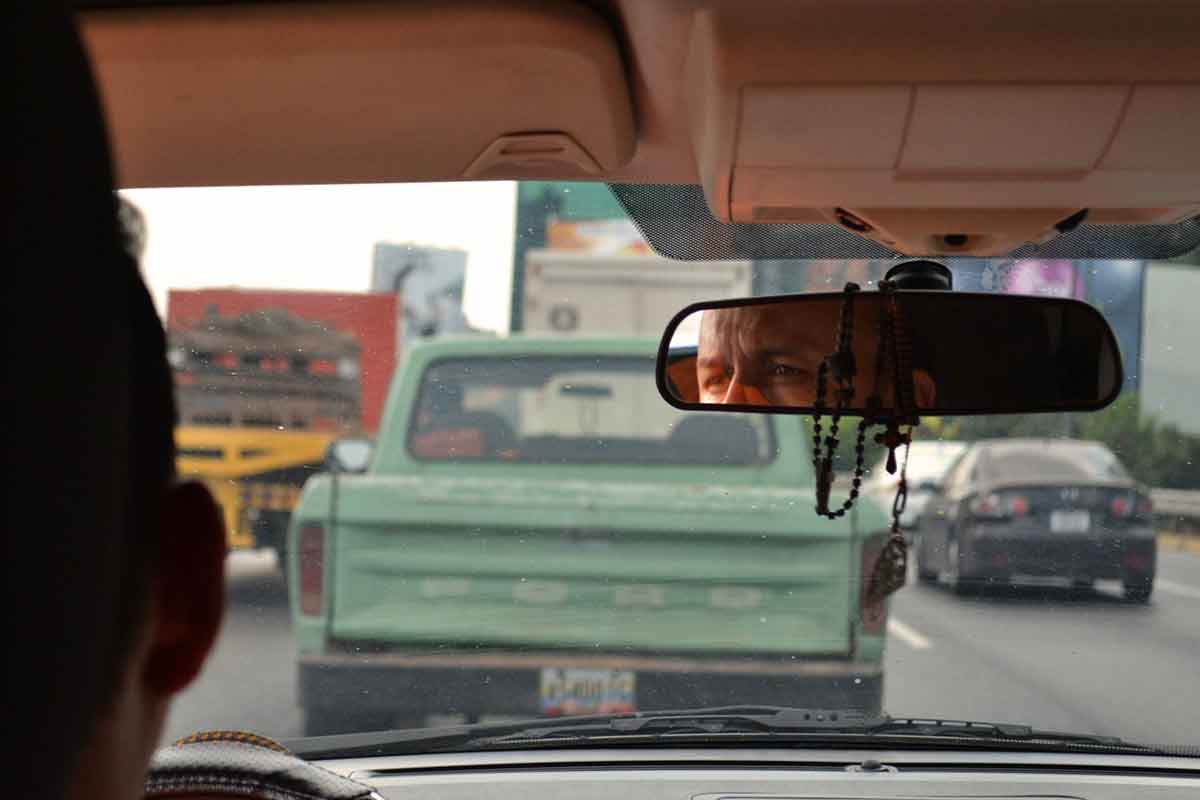
Violent crimes are not uncommon, including carjacking, armed robbery, and homicide. If you want to go backpacking in Venezuela, it’s very important to be aware of the issues .
Travelers can enjoy their time, but they have to be extremely careful on the streets. But not all is doom and gloom, see our guide on safety in Venezuela for some first-hand tips.
Safety Facts About Venezuela
- The best way to evaluate safety is by looking at the 2020 Global Peace Index. This measures the state of peace of each country in comparison with the rest of the World, by evaluating both tangible and qualitative indicators.
- Venezuela ranked as 149th out of the 163 nations measured, which is similar to that of Turkey and Nigeria. For comparison, The United States ranked as 121st.
- There’s no denying that Venezuela has some sobering issues at present. And even though it ranks as the most dangerous country in Latin America, we first need to give some perspective. Most violence occurs in certain areas of Caracas, as well as around the borders of the nation (with Colombia, Brazil and Guyana).
- Aside from these areas, other major destinations like Mérida and Ciudad Bolivar are actually pretty safe for tourists. As long as you keep valuables at home (and not walk with your phone in your hand), then you’ll most likely have no problems!
Backpacking Venezuela Itinerary
There are a few places to visit in Venezuela that you can’t miss and in this article, we’ll look at some of them.
Caracas is the capital of Venezuela and it’s located below El Ávila. This mountain is a barrier between the city and the Caribbean sea.
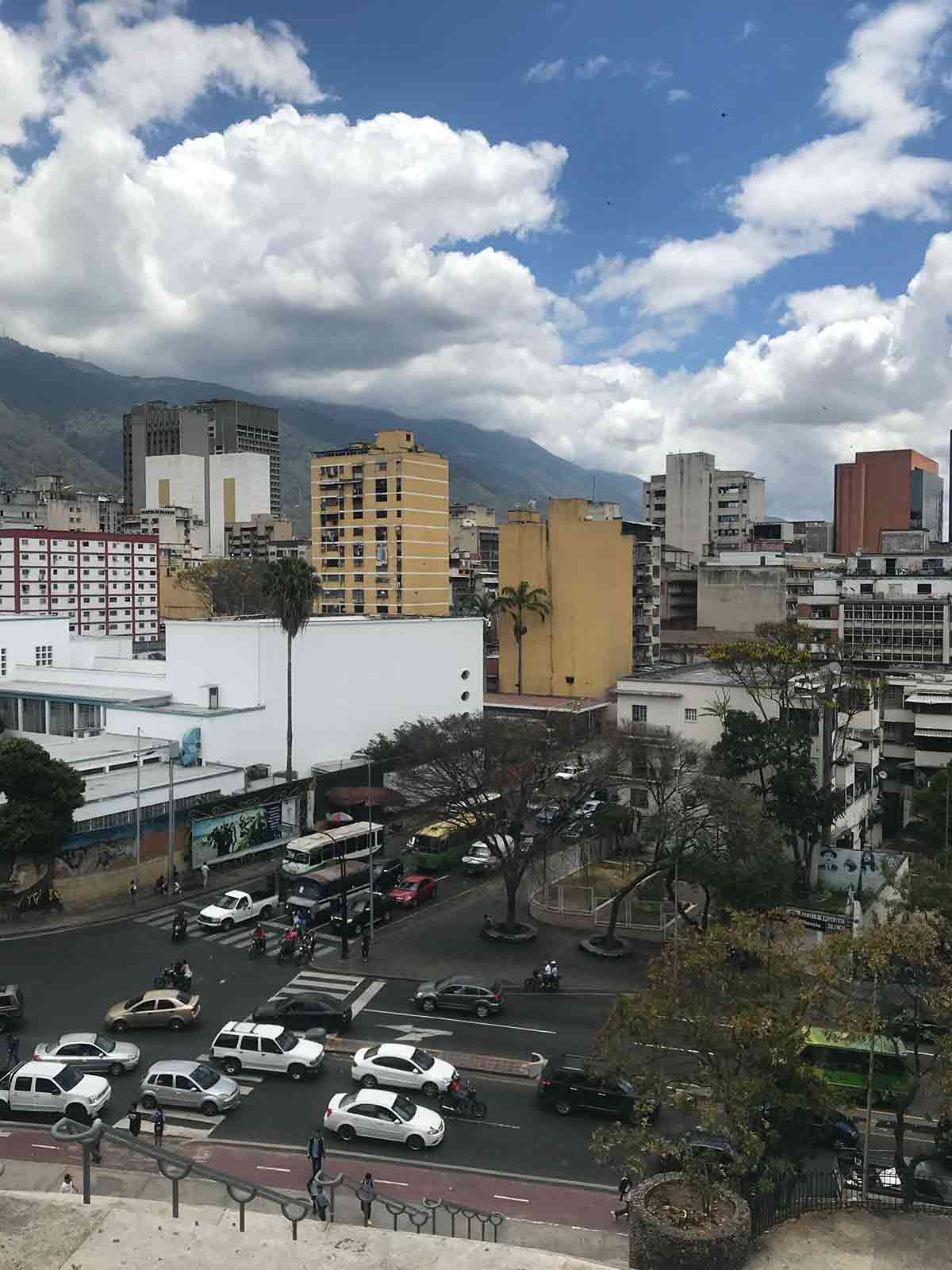
People who go backpacking in Venezuela usually stop in Caracas because there are many things to do here. Such as visiting the Birthplace of Simon Bolivar , hiking El Ávila, and enjoying the nightlife in Las Mercedes.
Additionally, you’ll find good restaurants and many parks you can visit, such as Parque del Este and Parque del Oeste. See our guide on staying safe in Caracas for more tips.
Angel Falls
The Angel Falls is easily one of the main attractions in the country and it’s worth including it in your Venezuela backpacking itinerary.
This is the highest waterfall in the world and it’s truly a majestic sight to see. Try to visit during the rainy season so you can see the Angel Falls at their best.
Seeing the waterfall close and personal requires a canoe trip and a trek through the forest, so make sure you’re up for that. You also have the option to fly over the falls!
Choroni is a lovely beach town that comes to life during the weekends. Locals often flock there, especially during the summer, to enjoy the beach.
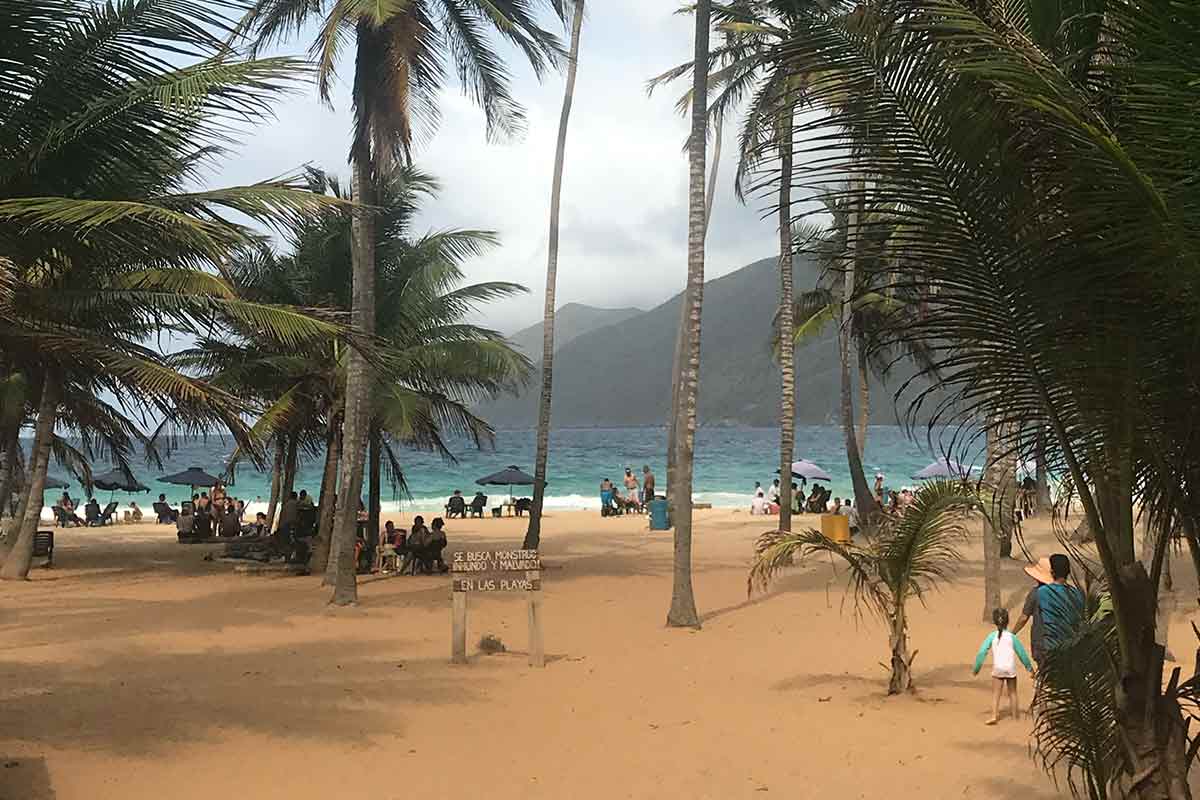
One of the reasons why Choroni is a great place to add to your Venezuela backpacking itinerary is because it will simply allow you to relax .
The town is sleepy during the week, so you can recharge while you stroll through colonial streets, take a dip in the ocean, and go wildlife sightseeing in the cloud forests, where you can spot monkeys, birds, and snakes.
Isla Margarita
Isla Margarita is one of the most touristic places in Venezuela, so you should make time for it in your Venezuela backpacking trip.
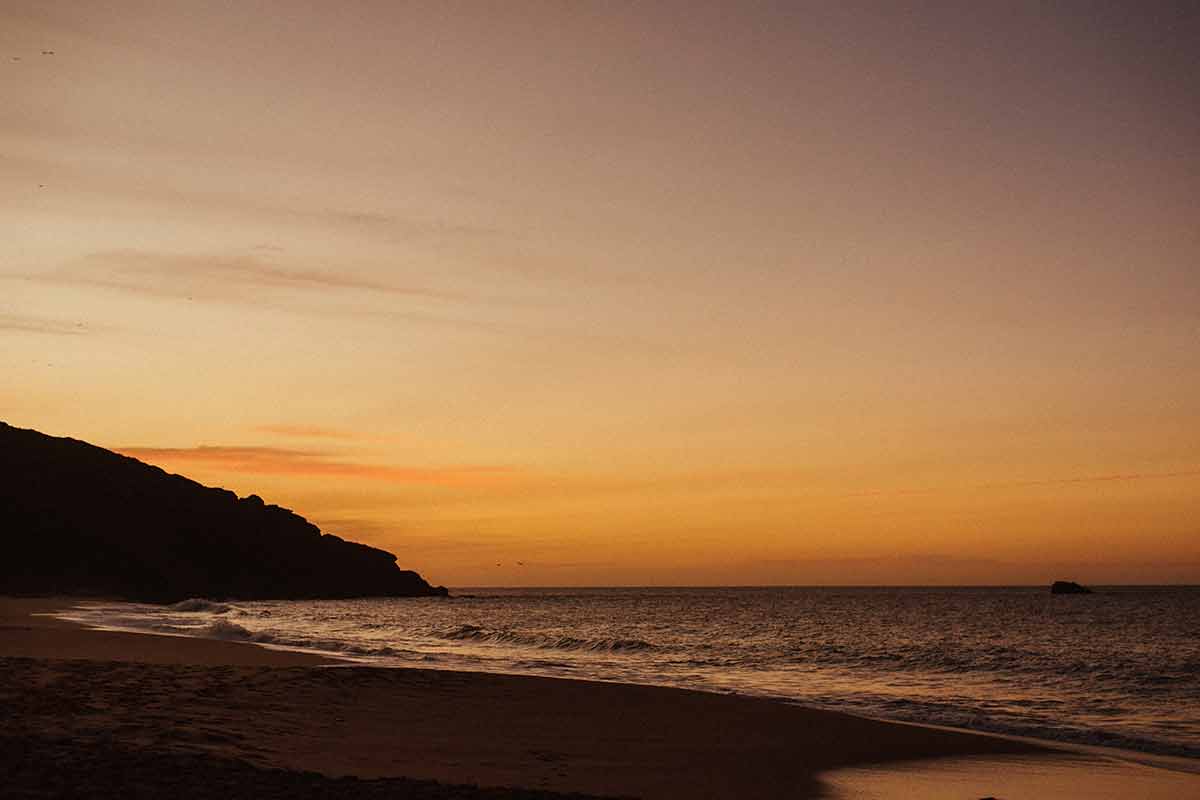
Venezuelans love to vacation in Margarita and the locals are known for their friendliness. The golden beaches are sublime and Playa el Agua is one of the most popular ones.
It’s surrounded by places to eat and shops, and there’s also active nightlife, so it’s a good choice.
While you’re in Margarita, we recommend you try the seafood empanadas. They’re incredible!
Merida is a great place to add to your Venezuela backpacking itinerary because it gives you a break from the tropical climate.
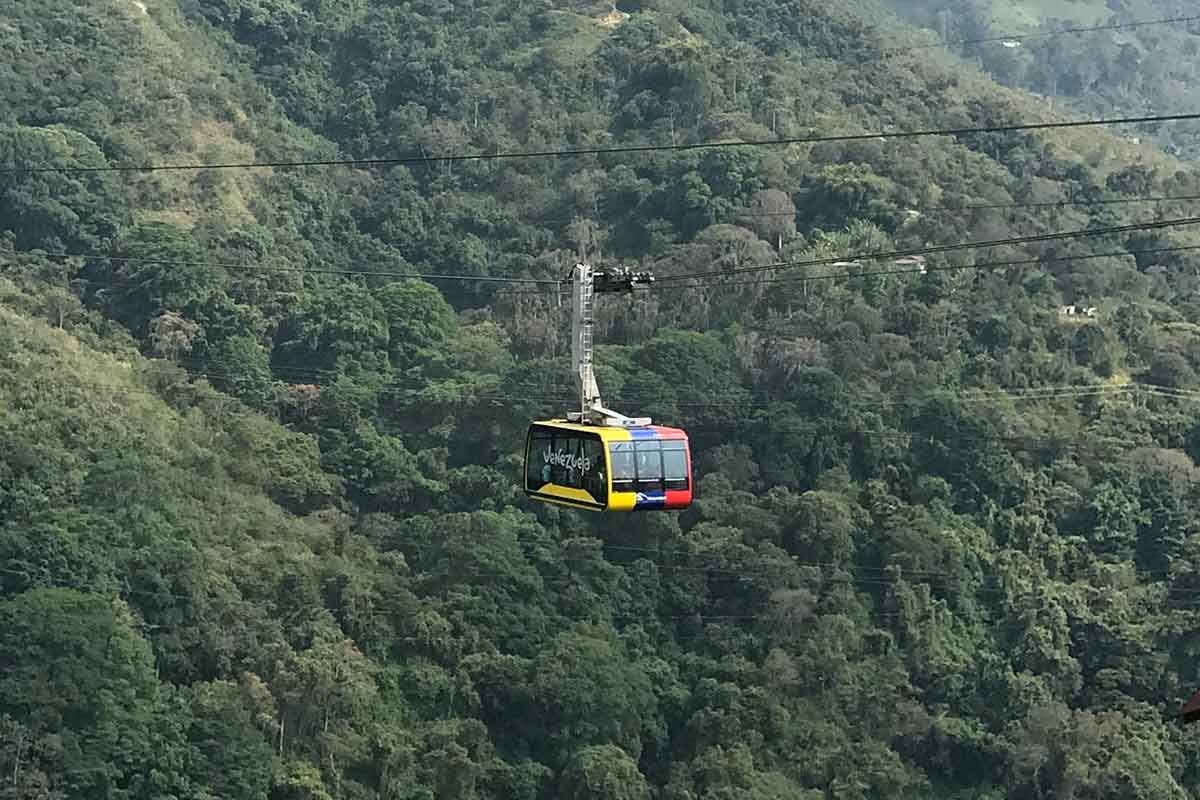
It offers many activities, such as paragliding, skydiving, hiking, trekking, and white water rafting, among others.
Here you can take one of the longest cable-car rides in the world up to Pico Espejo, which offers incredible views over Pico Bolivar (the tallest peak in Venezuela)”
We also recommend you go to La Venezuela de Antier to learn some history and step back in time for a while.
When it comes to nightlife, Mérida is the place to be . As one of the most popular cities for students and backpackers alike, there’s a tonne of great clubs and bars. Our best picks are El Bodegón de Pancho and El Hoyo Queque
Last but not least in our Venezuela backpacking itinerary, we have Los Roques, a mainland 40 islands and over 250 coral reefs .
Ocean lovers will enjoy their time in Los Roques! You can go on a boat trip during the day and swim in crystal clear waters, drink beers, and eat good seafood.
Additionally, you can go diving or snorkeling to explore the coral reefs at the Los Roques Archipelago National Park.
Venezuela Itinerary (2 Weeks)
Below we’ll cover our very best itinerary of Venezuela. As well as keeping an eye on the time, it’s also been designed to keep things fresh and exciting too for you.
Caracas (Days 1-2)
We’ll first kick off our adventure through Venezuela by heading to the capital. Caracas scares most travelers off visiting this country, however, really it’s like any other big city in Latin America .
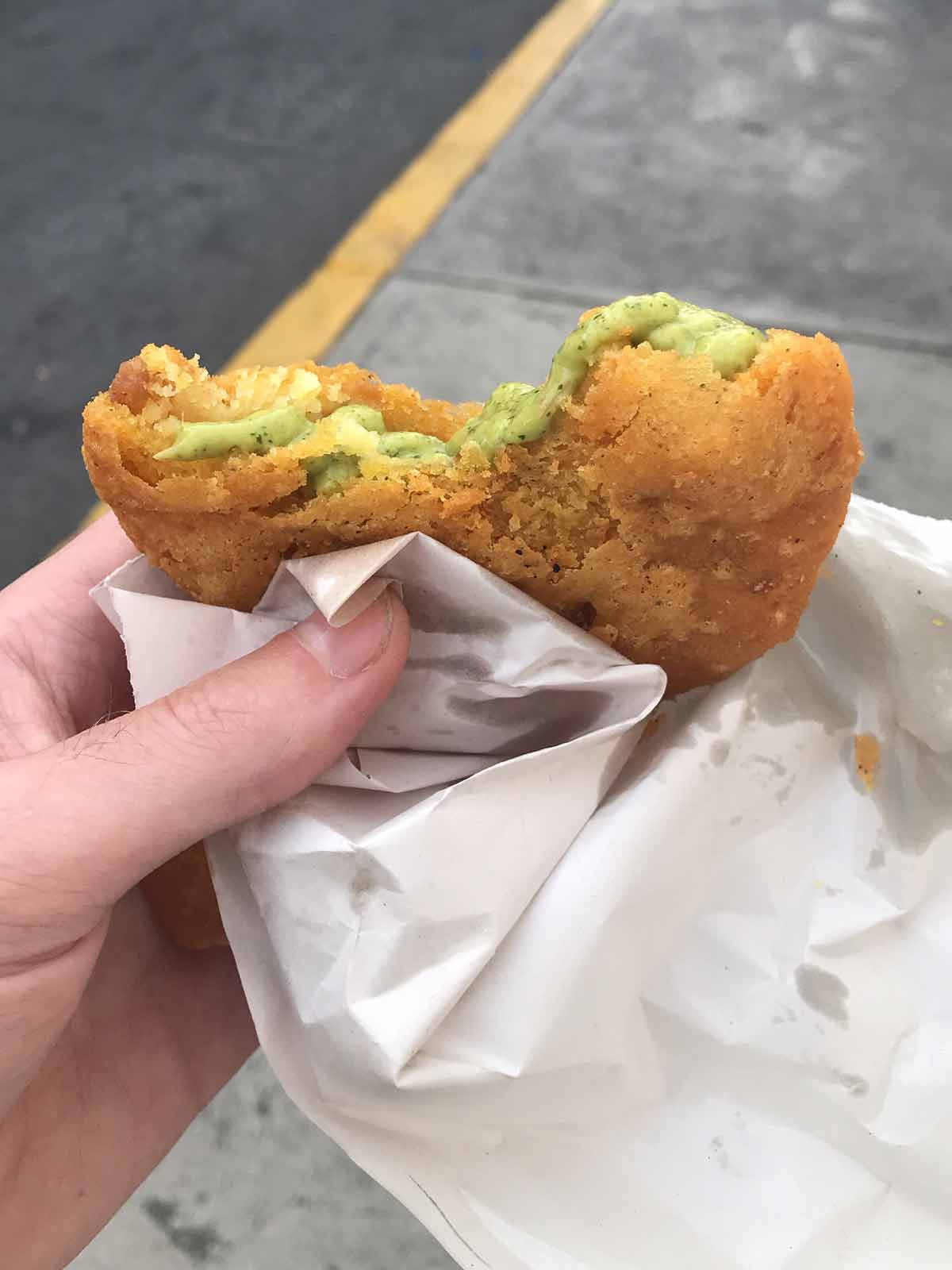
In fact, you may actually find you like it… stranger things have happened!
There are many neighbourhoods here (some that are definitely best avoided) and as such, we recommend you to stay in Altamira , which is the safest and has many good hotels and restaurants.
Whilst here you’ll want to head up the cablecar to the peak of El Ávila , which offers some truly stunning forested views and those over Caracas.
It’s best to come here in the morning when the skies are clear, and you can see the deep blues of the Caribbean Sea next to the big city itself.
We also recommend heading to the Panteón Nacional to learn about Venezuela’s history, as well as being the resting place for many notable figures.
Mérida (Days 3-5)
From Caracas we’ll now take a 10 hour bus to the buzzing city of Mérida in eastern Venezuela.
Mérida is a popular place, and for many good reasons. You’ll be surprised to know that this city is nestled within the Andes – with the prominent mountain range stretching as far north as Venezuela, which is news for most of us.
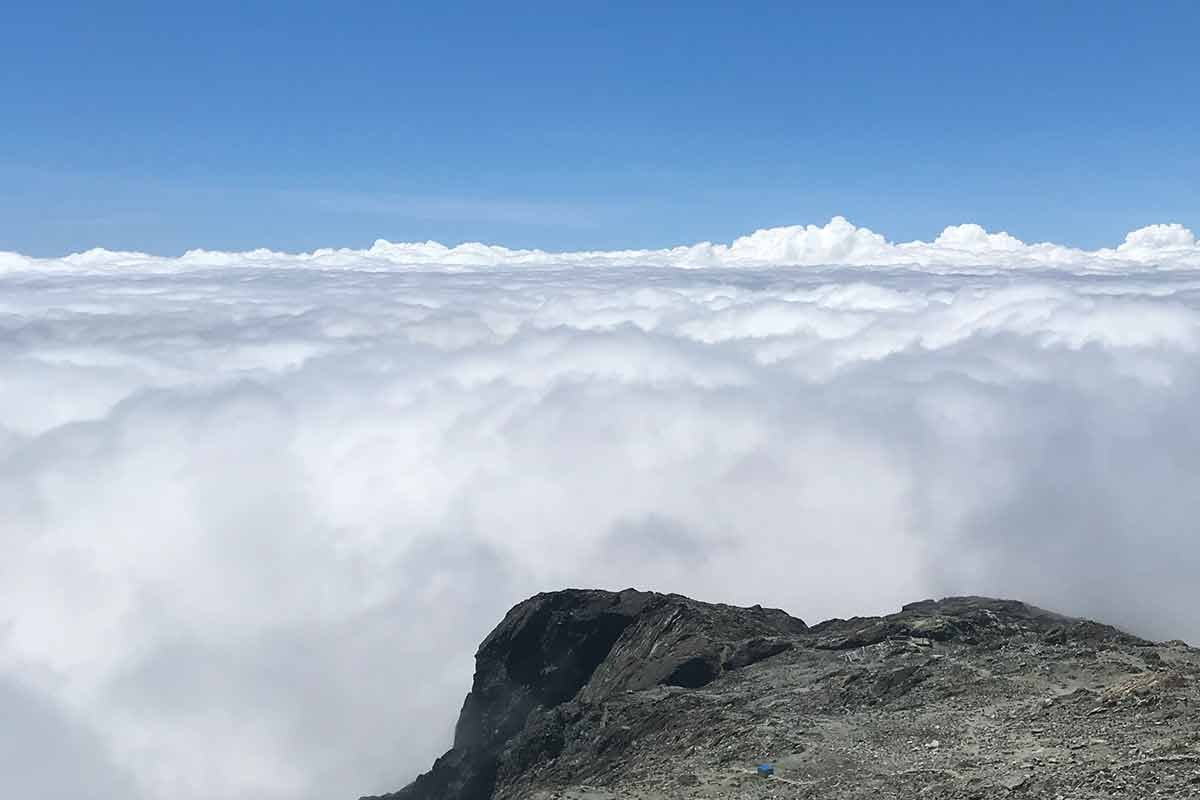
As such, there’s many hikes you do in the surrounding hills, and we recommend heading on a horseback tour to see the very best sites around.
Whilst in Mérida, be sure to hike up to the stunning Laguna de Mucubaji , with the glacial lake sitting at an altitude of 3650m.
Other cool things to do here include strolling around the Plaza Bolívar, watching a bullfighting show at the Plaza de Toros as well as joining in the chaotic nightlife scene amongst local students.
Los Roques (Days 6-9)
Now it’s time for the perfect beaches and lapping waves of the Caribbean, and there’s no better place for this than within the archipelago of Los Roques.
To get here we’ll first take the bus back to Caracas, and then take a small flight over to the islands (around 12 hours in total).
Located around 160km north of Caracas, this archipelago is made up of more than 300 beautiful cayes and islands. Gran Roque is the biggest and most likely where you’ll be staying, where you can relax on its picturesque beaches and go for a swim in the turquoise waters.
It’s also renowned for its transparent waters, which are perfect for diving where you can see everything from turtles and parrotfish to nurse sharks .
Another must-see is the Cayo de Mayo, which is the most stunning island of the lot, and can be seen with an organised day trip.
For those who love an adrenaline rush, then head to the Cliff Jump area on Gran Roque, where there’s platforms up to a nerve-wracking 30 meters!
Even if you don’t jump, watching the locals perform spectacular dives off the tallest ones are definitely worth the watch.
Canaima (Days 10-15)
Last but not least, we’ll be heading into the wild jungle of Venezuela, which in our opinion is the most spectacular portion in all of South America .
To get here we can take a direct flight from Los Roques, which is actually quite surprising considering given its remote nature.
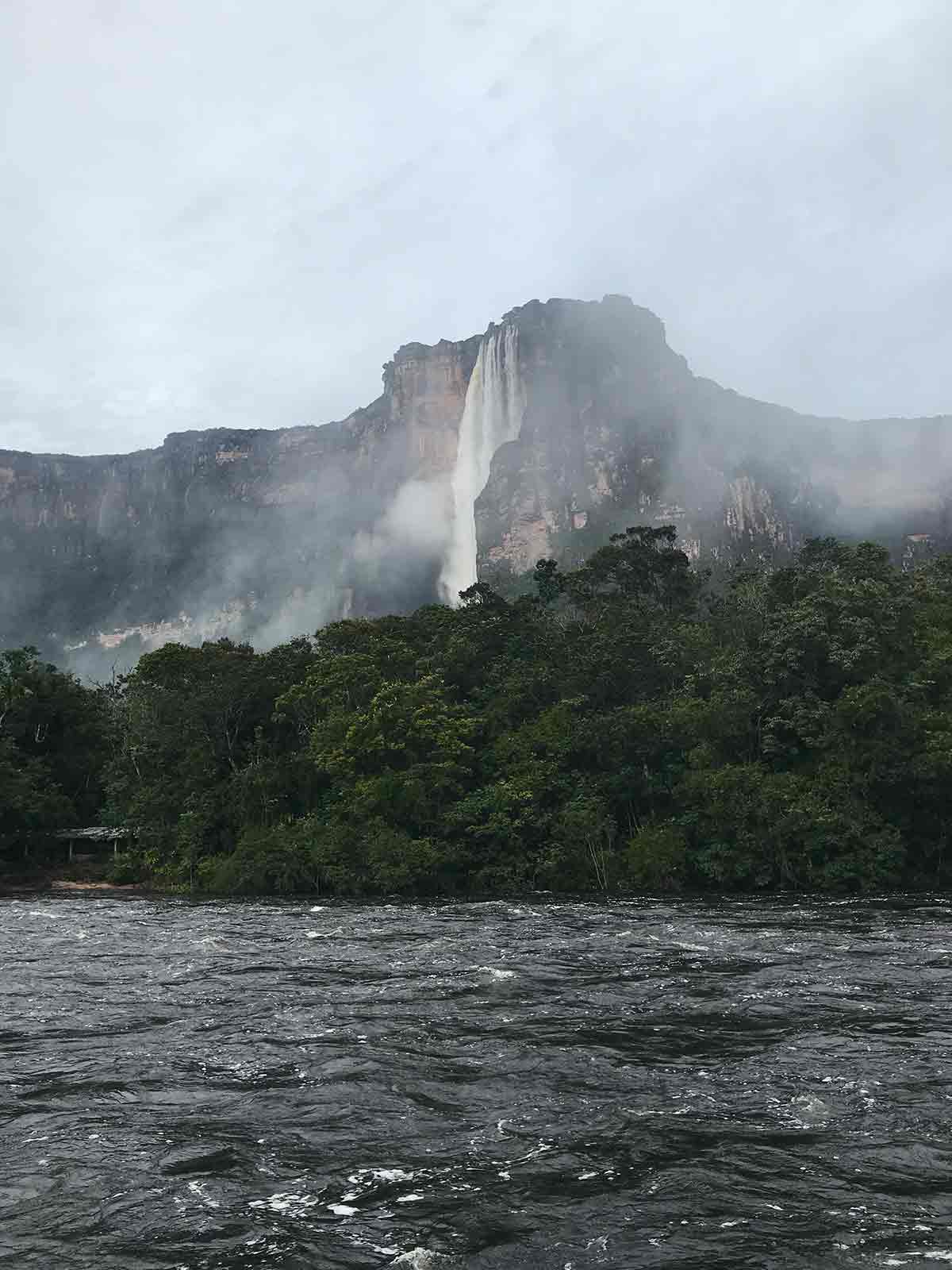
The town of Canaima is the gateway to the Canaima National Park, which is the true lost world of the Americas. We’ve saved the best till’ last, as here is where Angel Falls is located – the tallest waterfall in the world!
Here you can join a 3 day trekking tour into the Venezuelan jungle to get a glimpse of this 979m towering beast.
You can also go on a longer trip to the tabletop mountains known as the Tepui , which unfortunately is beyond the scope of this itinerary, but if you have the time – we 100% recommend going.
And that marks the end of the trail through Venezuela. From Canaima you can take a flight back to Caracas for your international departure.
Alternatively, if you have more time, consider heading south to Santa Elena de Uairén, and then crossing into Brazil.
And there we have our 2 weeks Venezuela itinerary. Now let’s move on to our most important tips, so you can have the best experience possible here.
Venezuela: Travel Safety Tips
Venezuela is not the safest place to visit, which is why you need to follow travel safety tips and be extremely cautious when backpacking in Venezuela.
Your safety is mostly in your hands, so here are a few tips and precautions to take:
- Top Sights in Venezuela include: Angel Falls, Los Roques, Mount Roraima, Cerro el Ávila Cablecar (Caracas)
- Never flaunt your valuables in public, dress to blend in, and leave your expensive clothes and jewelry at home.
- For some of the best accommodation check out: Hotel Arroyo (Caracas), Hotel Plaza CA (Mérida).
- Don’t leave your things unattended.
- Pack appropriate clothes for the tropical weather. If you’re visiting places like Merida, make sure you pack for the cold too.
- Avoid dangerous places. Some dangerous cities in Venezuela to look out for are: Maracaibo, Maturin and some parts of Caracas (like Petaré).
- Safety starts with the place you stay at, so choose a hostels/hotels in safe areas and be sure to take out travel insurance for protection on the road.
- Don’t walk around alone at night. Always use registered taxis.
- Venezuela’s food greatly varies from one region to the next. However, regardless of where you are you must try Arepas which are small pita-style sandwiches with fillings like beans, cheese, rice and meat. An absolute staple for a day in the life in Venezuela!
- If you plan on using public transportation, always be vigilant.
- Do you best to practice some Latin American Spanish before you arrive to Venezuela because knowing just a few words can go along way.
- Carry a high quality-sunscreen with you because will need it.
- Don’t drink the tap water, always rely on bottled water or carry portable filter bottle to save yourself some money.
Doing your research when putting together a Venezuela travel itinerary is key. Plan your trip well, this is not a country where you can successfully wing it. Be prepared and be cautious. If you can get a trustworthy local guide, do it.
Traveling Around Venezuela by Bus
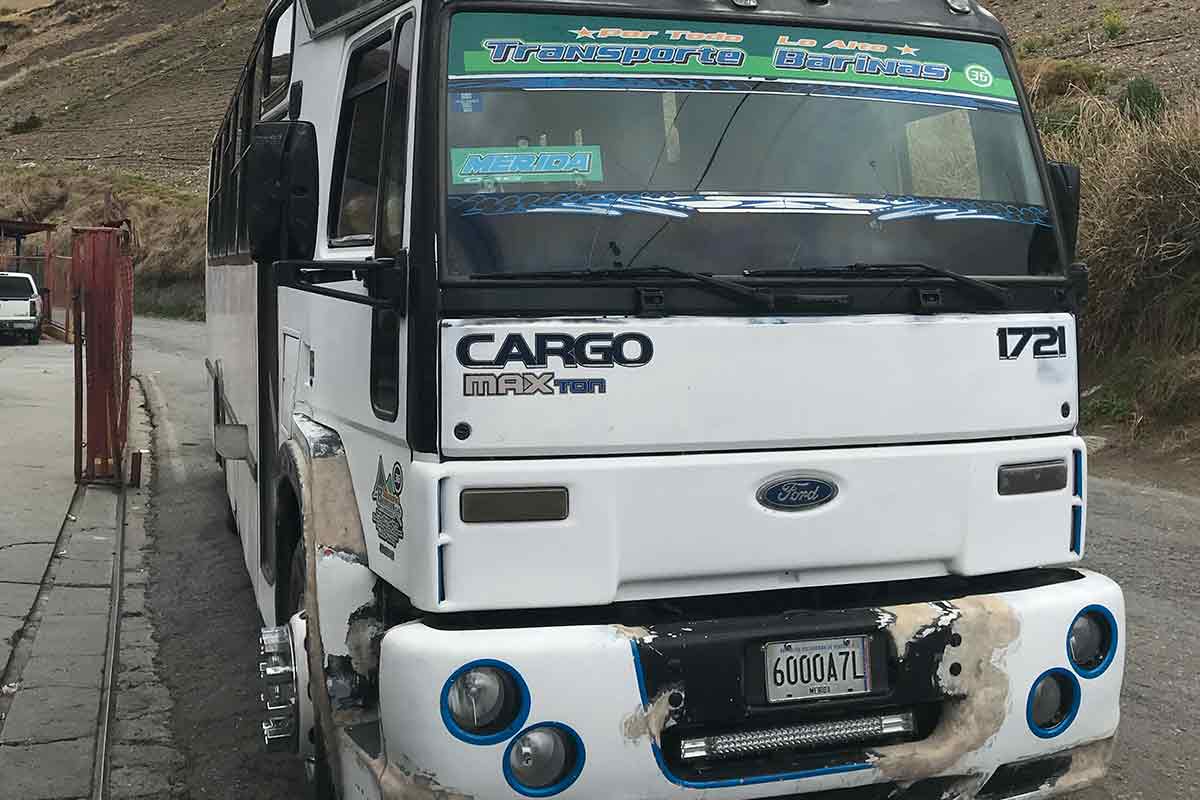
Despite what some people may say, traveling around Venezuela by bus is possible, you just have to do your research. Try to understand the bus system of each city you’re visiting so you can determine how to travel around.
Buses are inexpensive and they’re also a fast way to get around .
You should splurge on luxury buses when traveling from city to city because they are more comfortable and safer. Such as Rodovias, Aerobuses de Venezuela, and Aeroexpresos Ejecutivos.
Preparation before a trip to Venezuela is vital . Where there is poverty, there are usually opportunists, so be sure to dress-down and avoid going out alone.
If possible, having a personal contact in the country that can pick you up and show you around is the best way to stay safe whilst also getting to know the customs and how things work
Best Time To Visit Venezuela?
We’ve spoken a lot about the best time to visit South America on this blog (George is absolutely obsessed with checking the weather when we travel).
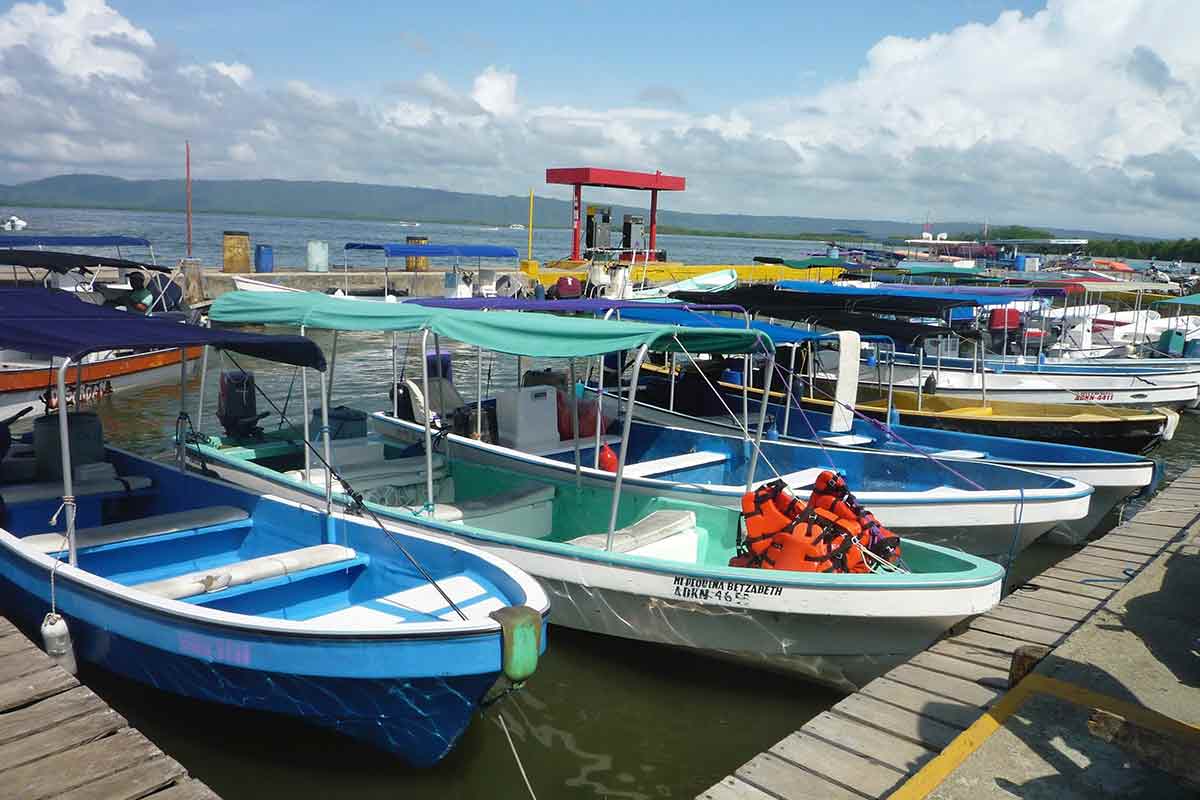
Venezuela is best described as a hot, tropical country. Whilst there’s some parts that can get cold (especially in the Andean regions), most destinations are going to be nice and toasty.
The dry season in Venezuela runs from around December until May , and is the best time to visit. Not only will you avoid the rains, however the hotter areas of the country (like the Amazon) will be slightly cooler which is better for hikes and exploring.
As there’s less rainfall, these months will usually be more popular with tourists, especially among the Caribbean coast in destinations such as Los Roques and Margarita Island.
Months like December and January tend to be more expensive, however you can usually find deals in early Spring.
The contrasting wet season tends to be more oppressive than the dry season . Temperatures tend to increase more, which can make areas of the jungle pretty tough going.
If planning on heading there, then make sure you bring lots of mosquito repellent since the wetter rains are favourable conditions for them.
When it comes to the rains, most of the country only sees a slight increase, so it’s actually still a good time to come (you’ll find cheaper prices too during this time of year). Warmer temperatures also favour those heading to the Andes, making mountain treks slightly less bitter for the fingers.
We invite you to read our more focused guide on the best time to visit Venezuela to get a better understanding of which places to visit during which months.
What To Pack For Venezuela?
As already mentioned, Venezuela is hot year-round . When it comes to packing, this means you’ll mostly want light clothes, such as shorts and T-shirts.
If heading to the jungle, it would be wise to take a rain jacket, since there’s a good chance of rain year-round (although you’ll definitely want it during the wet season, as it will see almost triple the amount of trickle!).
If planning on visiting more than just the beaches and jungle (for example the mountains or desert), then you’ll also want to pack some warmer layers too, such as a coat, jumper and jeans.
You’ll also need to bring lots of sun cream and bug repellant regardless where you visit, since most areas will need them year-round.
As well as these, you’ll also need to pack all the usual essentials which include toiletries, a good pair of hiking boots , toiletries, a document holder, towels, a water bottle as well as a daypack for any excursions you’ll be taking part in.
Got travel insurance for Venezuela?
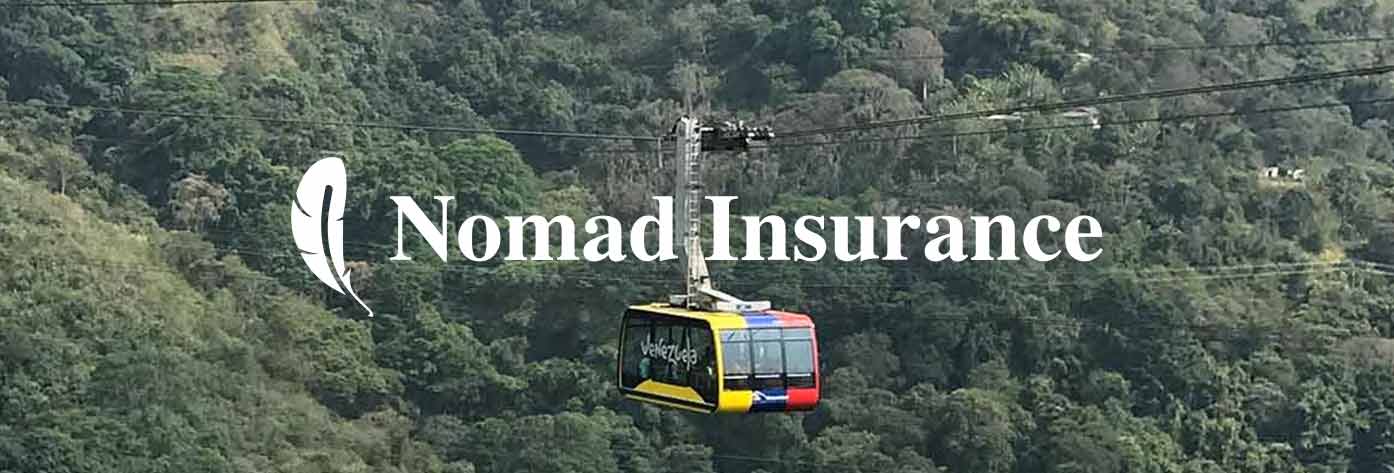
Are you planning to visit Venezuela soon? It can be difficult to find a reputable provider who will cover you in this country. SafetyWing is a solid choice who provide a monthly renewable plan, which includes medical cover and multiple home visits during your trip.
Backpacking Venezuela: Final Words
Despite it not being the safest country to visit, Venezuela is easily one of the most beautiful places in South America.
The diversity is amazing and there’s so much to see and do .
However, the political and economic situation is a huge gray cloud over the country, and you have to be extra careful when backpacking in Venezuela.
See our backpacking South America guide for more travel inspiration!
👉🏽 P.S. If you’ve found this guide helpful, buy us a coffee here to say thanks! Or, support us by downloading our South America Travel Bible to get our best content.
“ Dear traveler! Some links in this post contain affiliate links. Meaning, if you click through and make a purchase, book a hostel or sign up for a tour, we may earn a small commission at no additional cost to you . Your support means a lot and helps us to carry on traveling and maintaining the quality of this site for you.”
Similar Posts
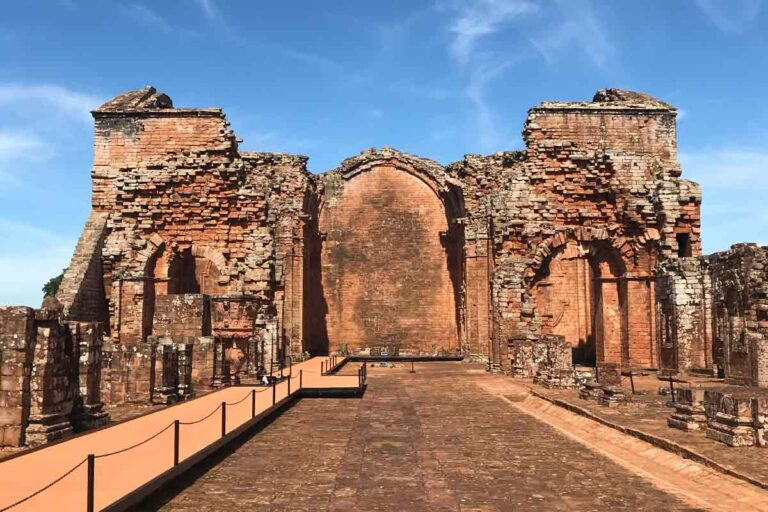
Is Paraguay Worth Visiting?
Paraguay continues to be one of the most mysterious and rarely visited countries in South America. Along with Venezuela, Guyana, French Guinea and Suriname, Paraguay seems to be on the “it’s alright to skip” list, despite the land-locked nation being more or less along the classic backpacking route. Is Paraguay worth visiting? Below, I’m going…
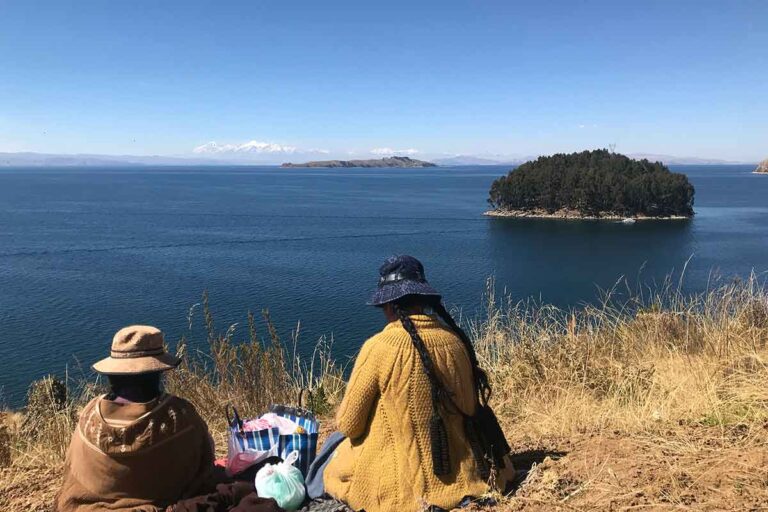
Is Lake Titicaca worth visiting?
Is Lake Titicaca worth visiting? One of the highest altitude lakes on earth, Lake Titicaca is a really special place to visit. The clear blue skies and the rolling hills of the altiplano make for a perfect backdrop, and sailing around you’ll find many incredible ruins and sites to visit. These range from ancient ruins…
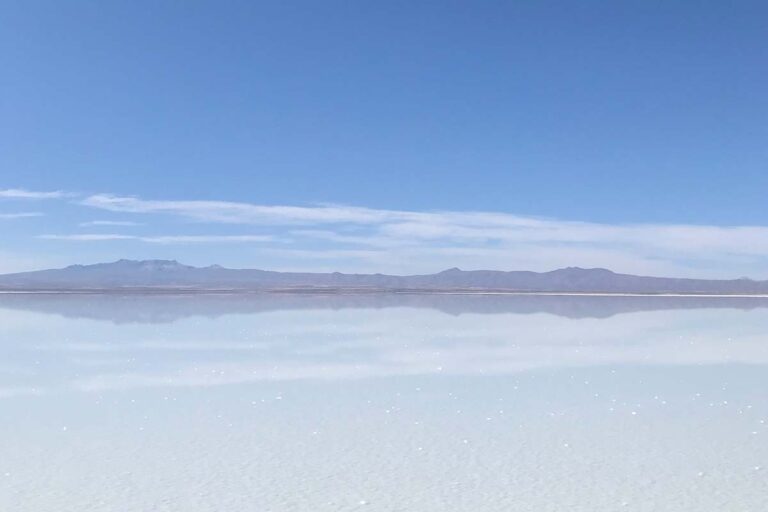
Best Places to Visit in South America
Welcome to our list of best places to visit in South America. Backpacking around South America will reward those who make the trip with a tonne of amazing destinations and one-in-a-lifetime experiences. We’ve compiled 8 of the very best things to do in South America – our bucket list items – which cannot be missed…
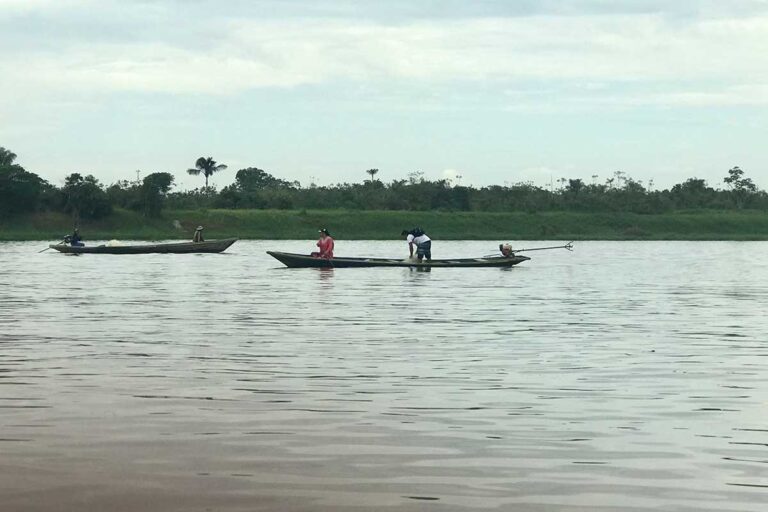
Is Peru worth visiting?
Is Peru worth visiting over other neighboring nations? Let’s be honest, Peru is without a doubt a memorable country to visit in South America. Whilst mostly known for its ancient ruins of Machu Picchu, here you can also find incredible landscapes and some really tasty food. This country is also home to one of the…
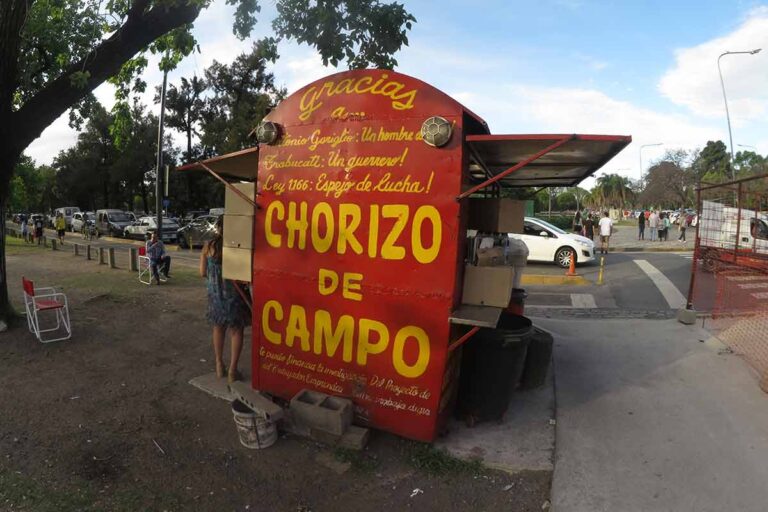
Is Argentina Expensive?
Is Argentina expensive and how much do you need when traveling here? An ever-popular country for travelers to visit, Argentina has lots going for it. Here we can explore the remote wilderness of Patagonia, the desert landscapes near Salta as well as enjoy the electric atmosphere of Buenos Aires. Whilst usually one of the more…
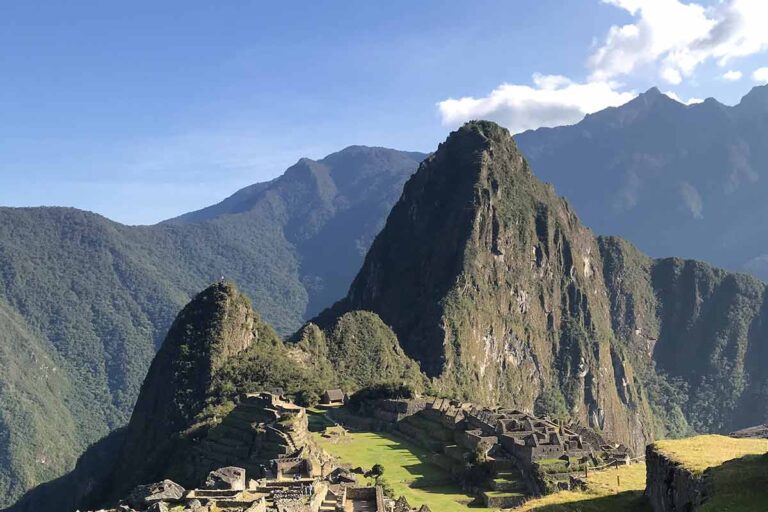
Best time to visit Machu Picchu
When is the best time to visit Machu Picchu? This legendary site has pretty much everything going for it. Not only is it steeped in history and has a mysterious feel to the place, it’s also a real adventure to get to. Visiting Machu Picchu during your trip to Peru is a must, and we’d…

11 Top-Rated Tourist Attractions in Venezuela
Written by Lana Law May 4, 2020
Venezuela is a country of beautiful landscapes and surprising sights, from the coast to the mountain tops. Magnificent waterfalls tumble off table top mountains, and coastal towns and offshore islands offer pleasant escapes and soft-sand beaches.
Inland, the Andes Mountains, soaring to over 16,000 feet, provide a stunning backdrop to colorful and lively cities, and the Orinoco Delta is teeming with wildlife. Caracas, the capital and largest city in the country, offers its own type of adventure, with a number of cultural sites and surrounding attractions.
The best places to visit are not always the easiest to reach, and Venezuela is no exception. Some of these destinations are well off the beaten path. For inspirational ideas, see our list of the top tourist attractions in Venezuela.
1. Angel Falls
2. los roques archipelago (archipiélago los roques), 3. isla de margarita (margarita island), 4. parque nacional morrocoy (morrocoy national park), 5. canaima national park and the gran sabana, 7. orinoco delta, 9. national pantheon of venezuela, 10. parque nacional los médanos de coro (medanos de coro national park), 11. mochima national park.
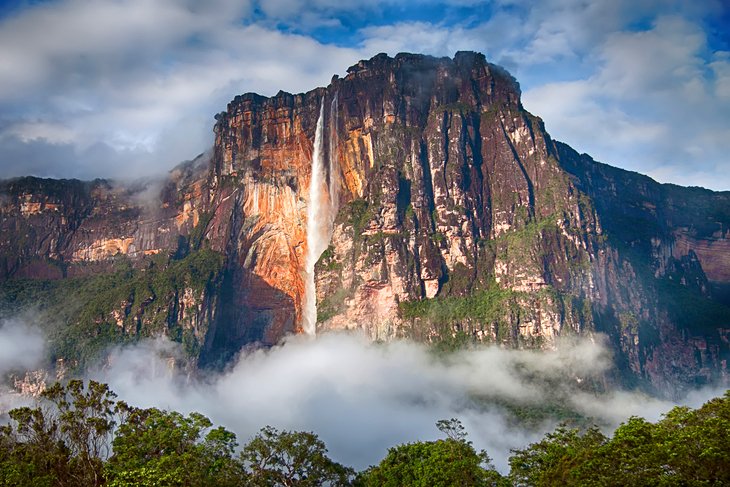
In the heart of the country, where table top mountains rise up like giant monoliths from the surrounding landscape, is Angel Falls. Dropping 979 meters, it is the highest waterfall in the world and one of the highlights of South America.
This stunning site in Canaima National Park is remote and difficult to access, but flights over the falls are easily arranged.
The best time to see the falls is during the rainy season, between May and November, when water is plentiful and the falls do not disappear into a mist before reaching the bottom as they do in the dry season. During the dry season, the falls may be little more than a trickle and you will want to check in advance to see if there is enough water to make the trip worthwhile.
The falls are usually visited by either a sightseeing flight or a three-day boat trip beginning in the town of Canaima. The boat trip, which also includes a hike through the jungle to the base of the falls, is not a luxury tour by any stretch, with basic accommodation along the route. The boat trip may not be possible during the dry season due to low water levels in the river.
Flights over the falls depart from many towns and cities and can be arranged from various places, including Caracas, Ciudad Bolívar, Santa Elena, or Isla Margarita, as well as other major cities, although usually with a connecting flight.
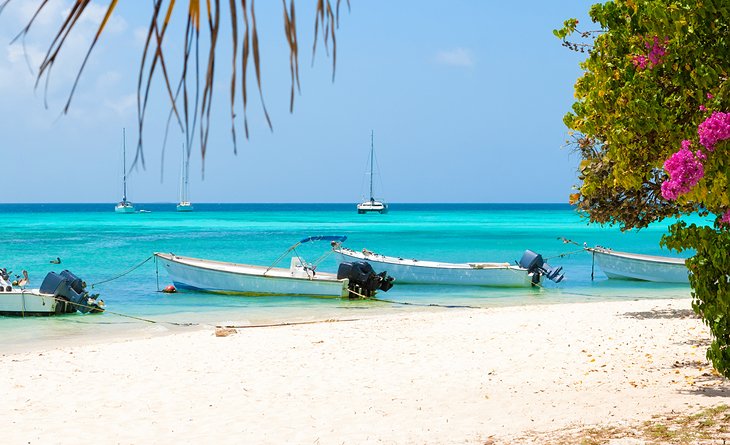
Sun-drenched beaches, turquoise waters, coral reefs, and modest development with no high-rise hotels, are what draw travelers to this beautiful chain of islands 160 kilometers north of the central coast of Venezuela.
The archipelago is Los Roques National Park, but most people refer to the area simply as Los Roques. This is one of the best places to visit in Venezuela. The small seaside fishing village of Gran Roque, on the island of the same name, is the main settlement, with single-story homes painted in the typical bright colors seen throughout Venezuela.
The buildings stretch out along the beachfront, which seems to go on forever. One of the highlights is the little island of Cayo de Agua. Reached by boat, this is one of Venezuela's most beautiful beaches, with shallow turquoise waters, perfect for swimming and snorkeling.
The islands are usually reached by aircraft from Caracas, there is no ferry service from the mainland. The airport is located in Gran Roque. Boats can be chartered from the town's waterfront area for those interested in visiting some of the surrounding islands, diving, or taking a snorkeling trip.
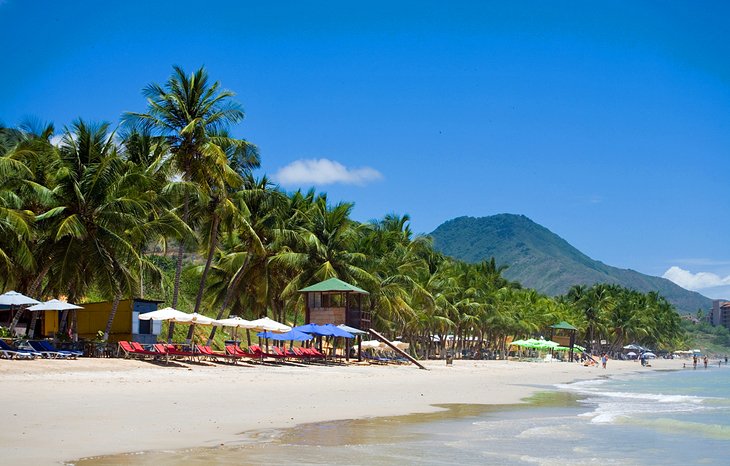
Isla de Margarita is one of the more developed beach destinations in Venezuela. Lying approximately 40 kilometers north of the mainland, this is one of Venezuela's major tourist destinations for sun seekers. The island's main attractions are the beautiful soft sand beaches, which are popular with both foreigners and Venezuelans.
Many charter flights fly directly to Isla Margarita from a variety of international destinations, but it's also possible to take a ferry to the island from Puerto La Cruz on the mainland.
The main city on the island is Porlamar, but the numerous beaches are spread around the island, with some of the best on the north and east side. Many of these are developed, with hotels or restaurants. Some of the most popular beaches are La Playa El Agua, Playa Puerto Cruz, Playa Guacuco, and Playa Manzanillo.
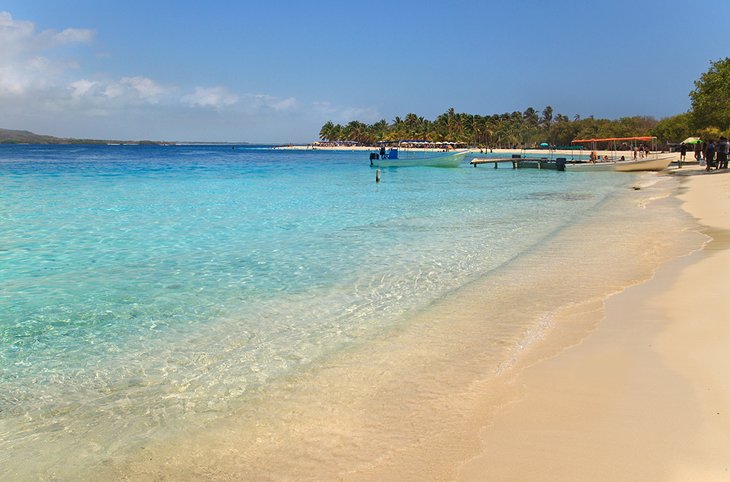
Morrocoy National Park, located along the coast about a two-hour drive west of Caracas, is known for its white-sand beaches and coral reefs, which stretch along the mainland and ring the offshore islands and cays. Diving is one of the main activities for those who are looking for more than simply spending a day on the beach.
The park is also home to a large number of birds, from osprey and parrots to flamingos and scarlet ibis. Some of the most popular islands are Cayo Sombrero, Cayo Borracho, Cayo Sal, and Cayo Peraza, to name just a few.
There are two main access points, one at Tucacas and the other at Chichiriviche, with boat services to the islands available at both of these towns. The park is easily accessible and, as a result, very popular with Venezuelans. It can get extremely busy, particularly around holidays.
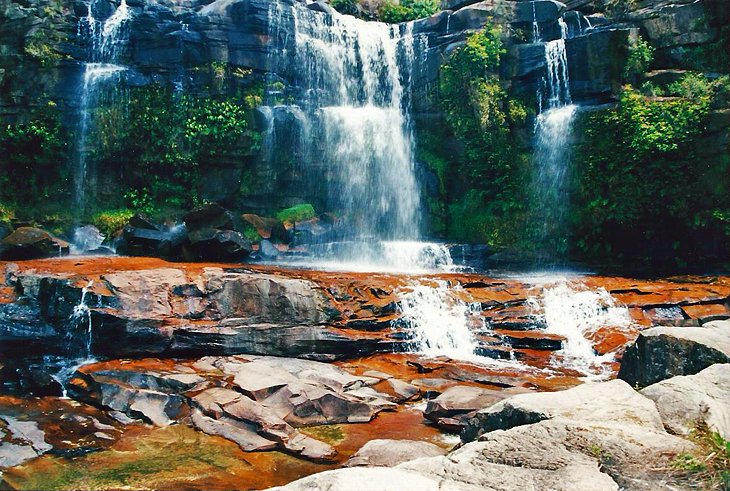
Canaima National Park covers three million hectares and is listed as a UNESCO World Heritage Site. It is usually associated with Angel Falls and the area around the town of Canaima, but this is actually only a small area of the vastly diverse park.
The park also encompasses the high plateau of La Gran Sabana and includes more than 100 tepuis (table top mountains), which rise more than 1,000 meters above the savannahs. A trip through the Gran Sabana and Canaima National Park is a unique experience and does not necessarily even need to be combined with a trip to Angel Falls, particularly during the dry season.
Highlights in this area are the numerous waterfalls spread across the entire area, particularly in the Gran Sabana near the Brazilian border. Swimming at the base of the waterfalls is one of the highlights and can provide a refreshing escape from the heat of the midday sun during the dry season.
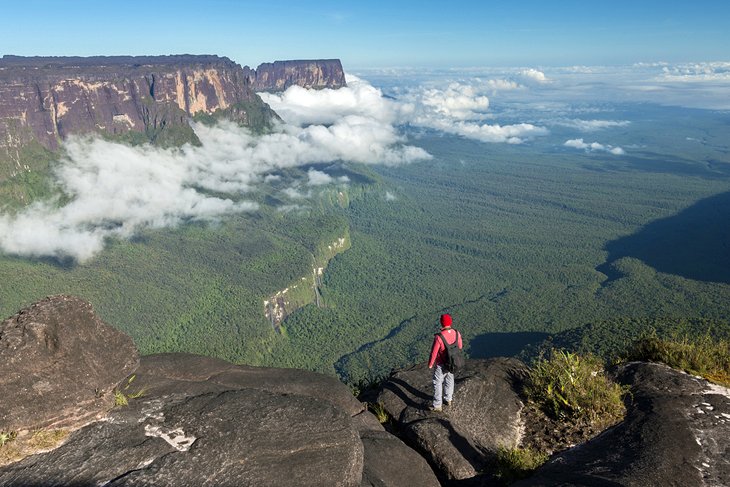
The table-top mountain of Roraima has an alluring appeal for nature lovers and adventure seekers, with an almost mystical Jack and the Beanstalk type of wonder attached to it. Rising up from the surrounding lowlands, Roraima is an island in the sky that has been intriguing people for centuries, with its bizarre rock formations, waterfalls, and meat-eating plants. This tepui (table-top mountain) was even the inspiration for Arthur Conan Doyle's famous novel The Lost World .
Roraima is one of the highest tepuis in Canaima National Park. It is also one of the most easily accessible and a popular hiking destination, although it is a demanding, multi-day hike. The temperature drops as the elevation rises and Roraima is often cloudy, misty, or raining, so hikers need to be prepared to face the elements.
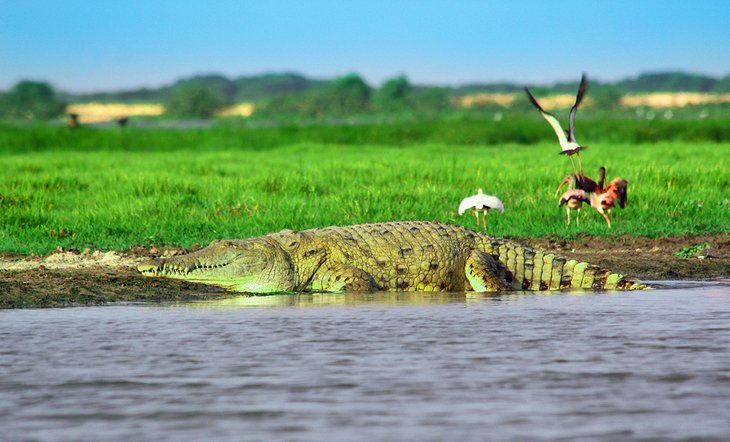
The Orinoco Delta, in the northeast of Venezuela, offers a completely different landscape and experience than other parts of the country. The river delta is home to all kinds of interesting wildlife, from monkeys and macaws to piranhas.
Riverside lodges offer multi-day packages that take guests out in boats for wildlife viewing and visiting local Warao people. Some camps also offer night safaris. The quality of the lodges varies so it's best to do some research in advance. Trips can be arranged from Ciudad Bolivar, Ciudad Guayana (Puerto Ordaz), or from other cities, and can be combined with a larger tour of other areas.
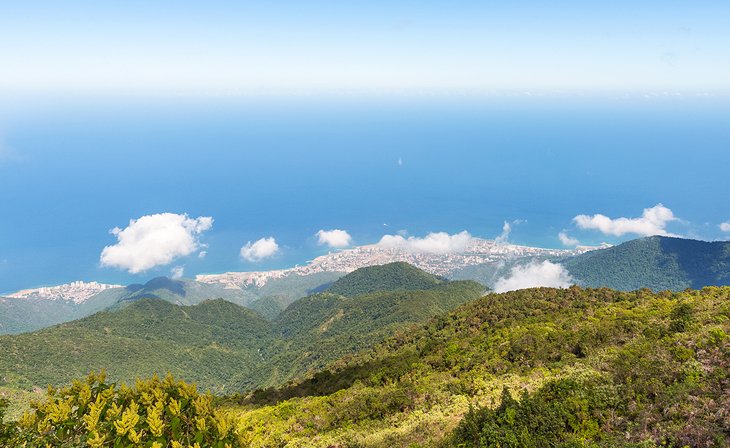
While few people plan to spend much time in Caracas, the city does have a couple of sites worth seeing. One of the highlights is a trip up the funicular to the small town of Galipan on Avila Mountain in northern Caracas.
It is also possible to drive, but this is a twisty road that doesn't lend itself to looking around. The views from the top of the hill are spectacular, particularly on clear days, when you can see Caracas and the coast. At the top are stalls with vendors selling a variety of goods, and a number of decent restaurants offering some tasty treats.
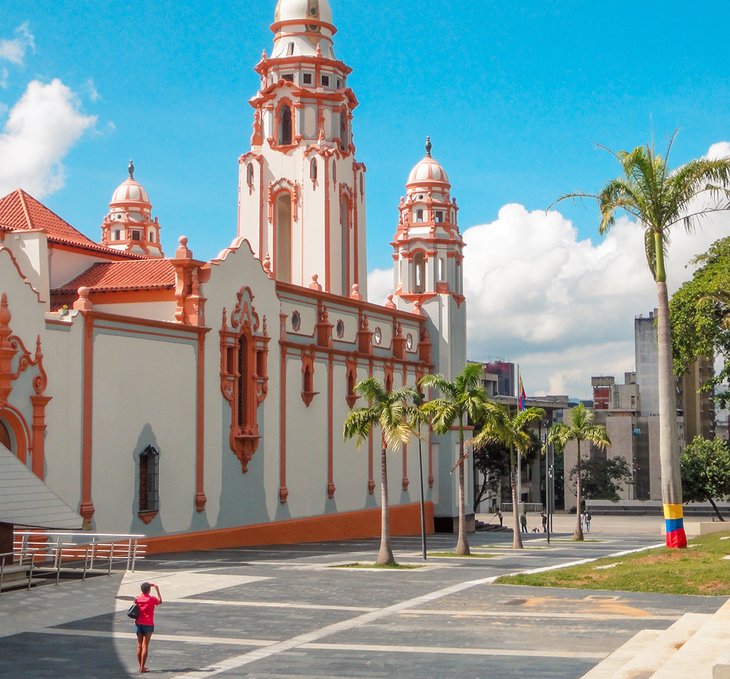
The National Pantheon is one of the most important attractions in Caracas. The building was constructed after the 1812 earthquake when the original church on this site was destroyed. Today, it is the country's most sacred shrine and houses the remains of prominent Venezuelans, including those of Simon Bolívar.
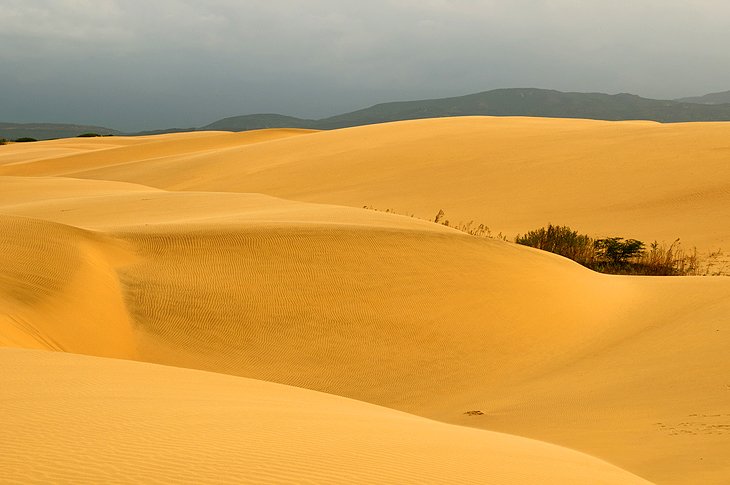
Medanos de Coro National Park offers surprising sights, with rolling sand dunes typical of a desert scene. The sand dunes, known locally as medanos, roll across the landscape, with twisting and curving lines, and some dunes reach up to 40 meters in height.
Dispersed within the hills are a number of lagoons, formed by decades-old flooding. This park is a fun place to wander around, slide down the dunes, take photos, and appreciate the diversity of landscapes that make Venezuela so unique.
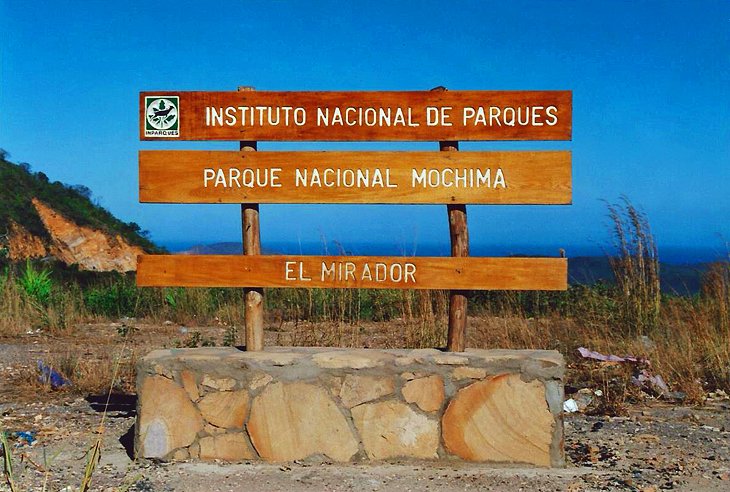
This park covers a portion of the coast and a chain of offshore islands east of Puerto La Cruz to Cumaná. The main attractions here are the beaches and the diving. The islands can be accessed by boat from Puerto La Cruz, Santa Fé, and Mochima.
It is also possible to explore the mainland portion of the park by car or bus, stopping off at small villages and beach-lined bays off highway 9, but this is primarily a place for boating. The area around the park is very quiet and it doesn't see nearly the amount of traffic as Morrocoy. This is a good option for people who happen to be in this area or heading out to the Paria Peninsula.
More Related Articles on PlanetWare.com
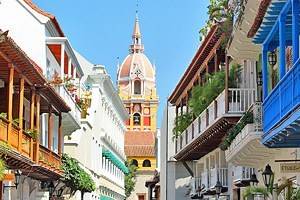
Visiting Neighboring Colombia: On Venezuela's western border is one of South America's hottest new up-and-coming tourist destinations. Colombia's attractions range from historic cities to mountains and beaches. If you have time to see even a couple of destinations in Colombia, don't miss out on a chance to explore the sights of Cartagena or to relax in Medellin .

More on Venezuela
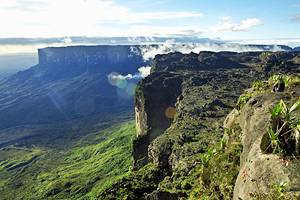
- South America
- The 10 Most Beautiful Towns...
The Most Beautiful Towns In Venezuela

Traveling in Venezuela is not for the faint of heart. Visitors need to be smart about their travel plans, and aware of their surroundings. But for those with the courage to try, there will be great rewards. Expect cities full of history and culture, and a natural world with unparalleled beauties. Discover the most beautiful towns in Venezuela.
Barquisimeto.
Founded in 1552, Barquisimeto is the fourth largest city in Venezuela, and one of the country’s oldest. The city sits on the edge of the Turbio River and has a moderate and pleasant climate. Along with old, Spanish -style buildings, newer modern and experimental designs have become a part of this city’s skyline. The highlight is the Barquisimeto Cathedral, which was completed in 1968. However over the years, a mix of architectural styles have made this city’s landscape unique and endlessly interesting. Barquisimeto is also said to have some of the most beautiful sunsets in the country. So find a romantic spot and enjoy the view.
Canaima is a tiny city, if you can even call it that. Located inside the UNESCO World Heritage site, Canaima National Park , the village mainly serves as an outpost for adventure seekers. From here, visitors can start out on their own hiking or backpacking trip, or hire a tour guide to help them navigate the huge national park. Undoubtedly, the most famous site is the breathtaking Angel Falls: the tallest waterfall in the world. But before you head out for your grand adventure, take in the sights immediately around Canaima. The Carrao river gently curves into the village, with the Laguna de Canaima forming at the base of a handful of small waterfalls. All of this is easily viewable from many of the lodges and camping spots in the town.
Caracas is the capital of Venezuela and is a bustling metropolitan city. It has had some unfortunate bad publicity due to rising crime rates, but don’t let that scare you. With solid research and some savvy street smarts, the city can be safely visited. Even hiring a touring company and going as part of a group may be a good idea. Safety in numbers. But for those willing to look past the potential risks, Caracas is a wealth of history, art, and culture. Geographically, the city rests at the base of a majestic mountain range that sets a stunning backdrop. The Avila mountains are an excellent hiking destination for those wanting to get a bird’s-eye view of the city. For travelers looking for a city experience, there are numerous museums, historical sites, restaurants, and even a zoo.

The Caribbean Sea is said to be one of the most beautiful in the entire world. Tourists flock to its many islands for holidays and relaxation. Venezuela’s Carupano city is situated in the far north of the country, right on the water. This makes for access to amazing beaches and unbelievable vistas. The city itself is moderately sized, with under 150,000 people. Historically, Carupano’s port was important for the exportation of coffee and cocoa products. If you’re planning a trip, the best time of the year may be the month of February. The temperature will be perfect, and Carupano has one of the best Carnival celebrations in the country. So book a ticket and party in the sun.
Another UNESCO World Heritage site on this list, Coro was actually once the capital of Venezuela. What makes this town really beautiful is the architecture that has been preserved since its colonial days. Brightly colored buildings with high detailing feature an Andalusian Spanish style. Many of these buildings are churches or other mission buildings and can be toured or visited by the public. Immediately north of the city, the Paraguana Peninsula is connected by the Medanos Isthmus – a small strip of land that has such an unique geography that smooth sand dunes have formed. The area is the only desert in the entire country, and the dunes can easily be seen from the road driving out of Coro.
Ciudad Bolivar
Remarkably different than Venezuela’s coastal cities, Ciudad Bolivar is nestled farther inland, right next to the Orinoco River. At this point, the river is about a mile wide and very gentle and has been a valuable resource for the town for hundreds of years. The city is in the region that first won freedom from Spanish possession and has been especially well preserved over the years. Museums, architecture, and cobblestone streets all remain to tell the stories of Ciudad Bolivar’s past. One of the best places in the town to visit is the Plaza Bolivar – a public space in the heart of the old part of the city, surrounded by beautiful buildings and statues of important figures in history.
Maracaibo is located in northwestern Venezuela, overlooking the straight that connects Lake Maracaibo with the Gulf of Venezuela. It was once a relatively small town, but a century ago, oil was discovered in the strait, and the city quickly grew in affluence. Today, Maracaibo shows a blend of old architecture that reflects the colonial history of the region and new buildings, built in the wake of the petroleum boom. The wealth that has been found in the city has contributed to a strong music scene, great shopping, and extensive public parks. Verda del Lago is a huge park that is popular with joggers and cyclists and offers panoramic views of the lake, and the bridge over it, which is the largest concrete bridge in the world.

Become a Culture Tripper!
Sign up to our newsletter to save up to $1,395 on our unique trips..
See privacy policy .
Tucked between two large national forests in the Andes Mountains, Merida is a mountain town soaring at over 5,000 feet above sea level. One of the city’s main economic resources is the tourism industry, with many visitors coming for serious mountain climbing and for recreational hiking in the Andes. One of the most beautiful views that the city offers can be seen by taking a cable car, the world’s highest and longest in fact, to Pico Espejo. The point is well over 15,000 feet above sea level and has a large statue of the Virgin of the Snow, which stands to protect the mountains around. The ride up to the point may not be for those with height anxiety, but those who make it to the top will surely be rewarded.
Porlamar sits on the Margarita Island in the Caribbean Sea. Since its discovery by explorers in the 15th century, the island has been known for its abundance of pearls, which is still a part of the economy today. Porlamar is the center of the island’s pearl industry, and of the travel industry, which has seen a rapid increase over the last 40 years. Tourists flock to the beaches for sunbathing and the water for sailing and watersports. With palm trees swaying and white sands, this island is a Caribbean paradise. The city itself also has excellent architecture and historical sites, plus a laid-back, beachy vibe.
West of Caracas, Valencia is one of the largest cities in the country and is a center for business and manufacturing. The city is surrounded by mountains, except for its east side which looks over Lake Valencia. Valencia has several important landmarks and museums, including the Museum of History and Anthropology that houses artifacts from the indigenous people that inhabited the area before colonization. Along with numerous monuments and statues, the city also has over half a dozen extensive public parks for sports and outdoor recreation. With tropical trees and green everywhere, even a city this size seems like it could just be swallowed up by the lush Venezuelan mountains.

Did you know – Culture Trip now does bookable, small-group trips? Pick from authentic, immersive Epic Trips , compact and action-packed Mini Trips and sparkling, expansive Sailing Trips .

See & Do
The top 10 festivals in venezuela.

Top Music Venues In Caracas

The 10 Best-Kept Secrets of Caracas

Restaurants
The top 9 restaurants in maracaibo.

The Best Restaurants In Puerto De La Cruz, Venezuela

Fashion Designer Carolina Herrera's Nephew Found Dead In Venezuela

The Top Things to Do and See in Puerto La Cruz, Venezuela

Film & TV
The 10 best venezuelan movies of all time.

Bars & Cafes
Top 10 bars in caracas, venezuela.

Food & Drink
Top 10 brunch spots in caracas, venezuela.

The Most Beautiful Landscapes In Venezuela

The Best And Wackiest Foods To Try In Venezuela
Culture Trip Summer Sale
Save up to $1,395 on our unique small-group trips! Limited spots.

- Post ID: 629381
- Sponsored? No
- View Payload
- English (EN)
- Español (ES)
- Português (BR)
Is Venezuela Safe? Crime Rates & Safety Report
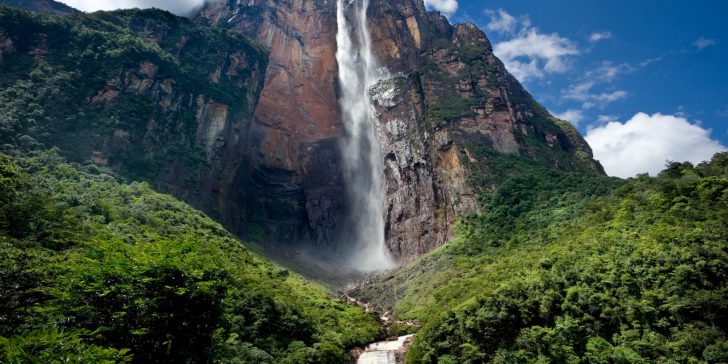
- Venezuela : Safety by City
Venezuela is a country located in South America with a shoreline along the Caribbean Sea and the North Atlantic Ocean.
It shares its borders with Colombia to the west, Guyana to the east and Brazil to the south, and it’s located in a manner that connects North and South America, right on the main sea and air routes.
Right off its coast sit the islands of Aruba, Bonaire, Curaçao and Trinidad, and Tobago.
Venezuela, although not the safest of countries, really has to offer an abundance of gorgeous sights and activities, like the Angel Falls that sit in the Guiana Highlands, and that is the world’s highest waterfall.
It is no wonder that this is of Venezuela’s major tourist attractions.
Tourists also love to visit its coastline which is the longest coastline on the Caribbean sea.
Don’t forget that Venezuela is the world’s fifth-largest oil exporter with enormous reserves of natural gas.
Ecologically, Venezuela is extremely diverse with more than 40% of its national territory being covered by protected areas.
- Warnings & Dangers in Venezuela
OVERALL RISK: HIGH
Venezuela is not safe for foreigners. Keep that in mind while you plan your trip to your country, remain vigilant at all times as both petty and violent crimes exist in abundance here. Apply maximum possible precaution measures.
TRANSPORT & TAXIS RISK: MEDIUM
Pickpockets operate mostly in buses and subway stations so be careful. Know that the roads are also extremely dangerous as carjacking is a regular occurrence. Buses and trains are also known for robberies.
PICKPOCKETS RISK: HIGH
Pickpockets are virtually everywhere in Venezuela. Pickpocketing and bag snatching are the most common forms of petty crime. Refrain from wearing anything remotely valuable outside.
NATURAL DISASTERS RISK: MEDIUM
As for the natural disasters that hit Venezuela, you can expect floods, earthquakes, and hurricanes. Floods are expected mostly in the period between May and December while the hurricane season lasts from June to November.
MUGGING RISK: HIGH
Violent crimes are also the norm here, and kidnappings as well. There's a new expression developed in this country, "express kidnapping" which means foreigners being kidnapped and possibly tortured until they use their credit card to empty their account and give their money to the muggers. Be extremely careful everywhere.
TERRORISM RISK: LOW
There haven't been any terrorist attacks in Venezuela's recent history. However, they shouldn't be ruled out, so be aware of your surroundings at all times.
SCAMS RISK: HIGH
Be wary of the so-called "virtual kidnappings". Locals in Venezuela generally never complete questionnaires or surveys because they're actually scams devised in order to collect information on you and your family members. Also, don't fall for the airport tax scam: be careful not to get overcharged when paying airport tax for both international and domestic flights.
WOMEN TRAVELERS RISK: MEDIUM
Many women have traveled to Venezuela without having negative experiences. The fact is, it is no more dangerous to women than it is to men. However, do not walk alone, especially after dark, as you might be perceived as an easier target to muggers and robbers.
- So... How Safe Is Venezuela Really?
You should know that Venezuela is not safe for tourists.
The US State Department has released an issue for all tourists to reconsider travel to Venezuela due to crime, civil unrest, poor health infrastructure, and detention of U.S. citizens.
There are numerous areas that are extremely dangerous.
Avoid traveling to certain neighborhoods of Caracas due to crime.
Places, where tourists are relatively safe, are the main tourist areas, but that’s it.
The situation is critical in this country: it has one of the top five highest per capita murder rates in the world, kidnappings that have increased as much as 50% within a period of one year, from 2008 to 2009, while armed robberies are the norm.
Kidnappings of foreign nationals also occur and people have been taken from homes, hotels, unauthorized taxis and airport terminals.
In the past couple of years, an expression “express kidnapping” has developed.
The expression basically refers to short-term opportunistic abductions, with a goal of extorting money from the victim.
Victims are selected randomly and held while criminals force them to use their cash cards to empty their bank accounts.
Once they get the money, they release the victim.
It doesn’t last more than an hour, but it is commonly followed by violence and is generally a terrifying experience.
You also have to be extremely careful on the road, where you are more exposed than in your home.
Carjackings happen both during day and night.
Do not rent or drive an expensive-looking vehicle as they are targeted and attract attention.
The carjackings are executed by armed gangs ramming the victim’s vehicle from behind, or flagging them down in order to rob them.
Whatever you do, don’t resist – it can end in them shooting the victim dead.
- How Does Venezuela Compare?
- Useful Information
Most countries do need a visa in order to enter Venezuela and they cannot be acquired upon arrival or at any of the airports. Make sure your passport is valid for at least 6 months from the date of arrival in Venezuela. If you are not sure about your visa status, visit www.doyouneedvisa.com which will let you know whether or not you need a visa based on your nationality and the country you want to visit.
There are two currencies in Venezuela: Venezuelan Bolivar and Petro. ATMs are widespread throughout the country, but they don't all accept foreign credit cards. Banco Provincial and Mercantil accept foreign cards. Credit cards are accepted in most establishments in major cities.
Venezuela has mostly tropical climate, on the coastline and even in the lowland areas. However, the mountainous region of the country is much cooler, with temperatures there dropping to as low as 9°C. Venezuela has a rainy season that lasts from May to December, and a hurricane season that lasts from June to November.
Simón Bolívar International Airport is the main international airport located in Maiquetía, Vargas. It is located about 21 km from downtown Caracas.
Travel Insurance
Just like anywhere else, we recommend getting travel insurance when traveling to Venezuela, since it covers not only the costs of medical problems but also theft and loss of valuables.
Venezuela Weather Averages (Temperatures)
- Average High/Low Temperature
Venezuela - Safety by City
Explore venezuela.
- 11 Cheapest Places to Live in Venezuela
- 10 Most Dangerous Cities in Venezuela
- 12 Best Zoos & Aquariums in Venezuela
- Are There Sharks in Venezuela?
- 10 Best Flea Markets in Venezuela
- 10 Safest Cities in Venezuela
- 16 Pros and Cons of Living in Venezuela
- Top 10 Dishes, Desserts, and Drinks You Should Try in Venezuela
- Where to Next?
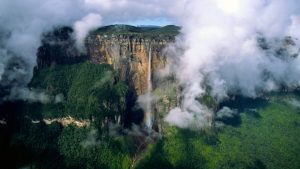
27 Reviews on Venezuela
Calm and tranquil.
Get rid of the e. Hugh Gashol. I like it though.
Woman risk medium?. Few years ago , miss world travel to her own country and her British husband’. Both rubbed and killed . Ultra high risk to get murder ..
MURDER KIDNAPPING DRUG SMUGGLING CORRUPT GOVERNMENT ! GOD BLESS THE VENEZUELAN PEOPLE. I PRAY FOR YOU. MADURO MUST DIE AND ROT IN HELL!!!!
Lived there for a year in 2010. Interrogated at the airport. Airport “official” tried to steal my passport as a I was trying to get back to Canada. Water from taps was brown. No electricity for hours at a time. Rolling blackouts due to corrupt government. Fast forward to 2020 and things are SO SO MUCH WORSE. No food, no medicine, coronavirus outbreak. They will Kill you for money, cell phone, food, car, shoes. Anything that you have, the government run colectivos will Kill you. Maduro will burn in hell along with his cronies and Hugo Chavez. Do not go there until there is a regime change. My wife is Venezuelan and she will never go back. Thank God she got her parents out of there. Most dangerous place on Earth.
Thank you for your honest and by what else I’ve read, accurate review and warning. I have a partner there and I was considering visiting Venezuela, not anymore!
I was thinking of visiting San Felipe Venezuela I am hoping it won’t be that bad… but I will do my research and see how things are down in Venezuela.
Please don’t go. Not safe at all
Yes exactly. PLEASE USE YOUR COMMENT SENSE. LEVEL 4 AVOID ALL TRAVEL.
Worst place on Earth. Do not go there. Zero rating.
Murder Capital of the World.
it’s so sad to see what venezuela’s become 🙁 such a beautiful country with amazing people! but it’s impossible nowadays… just sad
Lived for 3 years. no issues whatsoever, beautul beaches, good rum nice weather.
When was that….back in the 50s?
May he went down further like to Brazil or Argentina. Going to Venezuela it’s just like been in a war zone!

Don’t go here
I only lived here for two years before my family moved to the United States… but the stories my mom tells me are really horrific. It’s really dangerous, and much, much worse with the added coronavirus pandemic. Please don’t go here unless it’s absolutely necessary, or you will leave injured, robbed, or not leave at all (die here).
Amazing place, just be a bit careful downtown & at night
Ay ay ay…..no. It may be dangerous but my family thrives in Venezuela and only die of natural causes. Rlly nice ppl. Im not saying that there are criminals, my grandmas phone got stolen once. But thats IT. As a Venezuelan girl, amazing food,music (listing to it right now & vibing) and we have one of the tallest waterfalls in the world. Our president is TERRIBLE but ye, anything else is amazing. I recommend Arepas!
Don't go to Venezuela
Your family thrives there because they have adapted. The problem is that we as Venezuelans see the crimes as something common, we couldn’t leave the country so we had to comply, WE NORMALIZED CRIME, and you know that!!! but when you live in a first world country you understand that it was never OK, and we were just prisoners in our own country.
It’s either that they have adapted as you said, and they think that atrocities that happen there are expected on this planet because they haven’t lived in a developed country or they are connected “enchufados” somehow with the tyrants that they have in their government and getting benefits from their corrupted system. It seems that his or her family is not getting the benefits of being part of their government because that Venezuelan said that their president was “TERRIBLE” and she or he could be in very grave trouble if their government members are aware of those adjectives that person is using about their dumbass president. With that said, I’m almost sure that they fall in the bracket of those who are prisoners of their lack of knowledge. This would be an excellent example of the Stockholm Syndrom to teach in schools and universities around the world to properly educate human beings to start combating and decreasing this kind of pure anarchic dictatorship. The documentary named “How to Become a Tyrant”, and that Venezuelan individual and his/her family should watch it, of course, if it is available to get accessed in Venezuelan because I bet it’s banned there, played by Netflix explains how these brutal and cruelest geniuses including Lenin in Russia, Joseph Stalin in the Soviet Union, Adolf Hitler in Germany, Benito Mussolini in Italy, Hirohito in Japan, Muammar Gaddafi in Lybia, Saddam Hussein in Iraq, Idi Amin in Uganda, Fidel Castro in Cuba, Augusto Pinochet in Chile, Daniel Ortega in Nicaragua, Chavez and Maduro in Venezuela, Kim Jong Un in North Korea and his amazing granddaddy and daddy, and so on, follow a recipe or playbook for absolute power, outrageously enrich themselves, and rule with an iron fist massacring or eliminating whoever stands in their way. I was born in Venezuela and lived there for 31 years, and the best decision I have done in my life was to get out from there 20 years ago to live in a decent way without the extreme fear of being killed in one of their daily robberies or express kidnappings, or basically die of starvation or from the stress produced by their anarchy, electrical outages, lack of running potable water. My recommendation to that person, if she/he doesn’t mind, is to live sometime in a developed country and to invest a little more effort to get better educated so they can be able to escape from that mental prison. It’s a shame that I cannot grade her comment with something less than terrible or one star. My recommendation to anybody who reads this input is as follows: If you want to get a hell experience in a place where you don’t have any warranties to come back alive or whole, you can go to Venezuela. And, I feel a profound shame because Venezuela was blessed with all kinds of natural resources and it had the biggest oil reservoir in the world, but there is no sack that can withstand the constant theft from their own functionally illiterate government members and whoever clown is connected to that corrupted and atrocious system, and this is why Venezuela is one of the worst places in this planet nowadays. Hope this helps with your travel decisions.
Venezuela needs tourism
I spent 4 years in Venezuela and I was robbed once in my last 3 months. I travelled extensively throughout the country alone as a blonde, blue eyed European. The “Guardia Nacional” and the Venezuelan police were extremely polite and very helpful. I loved my time in this extremely beautiful country. Of course I was extremely aware of my surroundings 24/7. Most of South America is dangerous but Caracas has ALWAYS been extremely dangerous. I was there in the 1980’s and the 1990’s. It really was hell on Earth so I avoided it completely on this 4 year stay.
Is it safe for tourist. we want to travel to Venezuela from Trinidad and Tobago.
It isn't safe right now
It is not safe for tourists. They are currently having a humanitarian crisis. Please reconsider going there!
my mum went to Venezuela she liked it.But she went on an island.
Avoid all travel purposes, essential or non essential. but if you want to go, avoid the slums and risky areas.
Mostly accurate
The article is mostly accurate except for a few points: – Woman safety. By saying that the place is equally unsafe for both genders automatically makes it a high risk instead of a medium. Also, if you’re a remotely attractive woman, get ready for some serious cat calling, just like in your average latin American country – How prevalent murders are should be stressed more, criminals are armed to the teeth and wont hesitate to open fire if they don’t get what they want, or even because of mere sport, it is a cultural thing – Even mentioning the risk of an earthquake is silly, you’ll get mugged a thousand times before feeling a remotely threatening tremor
Bottom line, don’t risk it. Similar natural beauties can be found in the neighboring and (relatively safer) countries, even the typical food is widely available in most Spanish speaking countries as huge Venezuelan colonies have been established by the more and more migrants running away from the unbearable situation there
Source: Venezuelan
It gets worse as time goes by
This is one of those cases where you should believe all the red flags. We’ve only had the misfortune of visiting it once, four years ago, but I wouldn’t go back unless it’s an island or the Guianan savanna ecoregion! I know it’s home to lots and lots of tourist attractions but I find it horrible trying to enjoy a foreign location when I have to constantly watch over my shoulder.
Slums should be absolutely no-limits zone, no matter where you find yourself in Venezuela, this is the first thing the guide told us.
Tourists are usually the go-to target, either for hefty ransoms or just for an armed robbery. Luckily this wasn’t the case but I got horrible notifications in the four days we’ve spent in Caracas. Local police have little to no interest in helping you; I’ve lost a film camera which I’m sure was somehow swiped from my backpack but they just told me to give it up after waiting almost two hours to fill a police report. Seriously? They looked like they all wanted to be somewhere else…
ATMS? Not safe, we were warned to use only the ones located inside banks or in very populated areas.
TAXIS? Overpriced, unpleasant and you risk being stopped by robbers.
We then went on to spend a full week in Los Roques which made it seem like we were in a whole different country. The place has almost zero crime, we weren’t disturbed by beggars, the water and the staff was incredibly helpful and accommodating.
Don’t be naive, don’t imagine that this sort of thing only happens to others, Venezuela is a very dangerous place. You might have more luck moving around if you have a friend/relative there but otherwise I would just stick to visiting from the myriad of islands.
Sure, it’s a dangerous country and the government is corrupt, but it’s not a war zone. Due to the current anarchocapitalist model and heavy money laundering by government officials, as of 2022 there has been many new businesses and the economy is slightly better. There are no more food shortages anywhere, they’re just expensive for the lower class. Caracas is very dangerous at night, but the rest of cities suffer from less crime. (personally, i’m from San Cristobal and I have never gotten robbed at gunpoint in my entire life) Of course, if you go around looking like a tourist from a first world country, the chances of something bad happening tend to elevate. Stick to places like Margarita (specifically El Yaque, crime is almost non existant there because they kill criminals to keep that place safe) and Los Roques (the most expensive destination in the country but also the most beautiful and safe) You’re more likely to be a victim of corruption and authority abuse than robbery or murder, honestly. Be wary at Maiquetía. A good option might be to record any violations, as the current modus operandi is “whatever crime goes viral on social media must be punished”, and they might be scared of that. Plus, always be with someone who speaks spanish. Enjoy the adventure if you come. Sure, it’s kind of dangerous and every living being related to the government is a piece of garbage, but the people here are incredibly nice to tourists since we don’t get so many, the beaches are incredible, and the food is superb. Plus the women are gorgeous, too.
Has anyone recently (2022) been to Valencia in Venezuela? I’m thinking about going to see a friend before the end of this year?
I lived here for 8 years, everything was bad
I used to live in venezuela from 2010 to 2018, im now almost 13 and boy, Venezuela want really good. sure, it has great food, great culture and beautiful scenery, but over 95% of venezuelans (including me back then, now im in USA) deal with economic struggle. Most of Venezuela is extremely unsafe, and Caracas has more crime than all the other cities. The healthcare is also horrible, once I got a really bad sickness and the medicine I got from there made me feel worse, I feel really bad for my relatives who live there, may Venezuela be better in the future 😢🇻🇪
Share Your Experience Cancel reply
Your Review
Title of your review
Article Contents
- Overall Risk
- Transport & Taxis Risk
- Pickpockets Risk
- Natural Disasters Risk
- Mugging Risk
- Terrorism Risk
- Women Travelers Risk
- Weather Averages (Temperatures)
- User Reviews
- Share Your Experience
Popular Destinations

Safety Index
Recent reviews & comments.
- Ty on Sao Paulo
- Samuel Lewis on 10 Safest Cities in Malaysia
- Albert Smith on 10 Safest Cities in Malaysia
- Mikael Henderson on 10 Safest Cities in Malaysia
- Nii on Guinea
Popular US States
- Pennsylvania
Must-see attractions in Venezuela

Museo de Arte Contemporáneo de Caracas
Occupying the eastern end of the Parque Central complex, the Museum of Contemporary Art is by far the best in the country, though it can be a little…

Salto Ángel (Angel Falls)
Thundering Angel Falls is the world's highest waterfall and Venezuela's number-one tourist attraction. Its total height is 979m (3211ft), of which the…

Iglesia Santa Capilla
This neo-Gothic church, one block north of Plaza Bolívar, is modeled on the Sainte Chapelle of Paris. It was ordered by General Antonio Guzmán Blanco in…
Plaza Bolívar
This leafy square is the nucleus of the old town. It's always alive with huddled groups of caraqueños engaged in conversation and children feeding freshly…
Fundación Bigott
If you’d like to dig a little deeper into traditional Venezuelan culture – perhaps learn to play joropo music with the bandola llanera (a string…
Parque Nacional Sierra Nevada
The most popular high-mountain trekking area is the Sierra Nevada national park, which has all of Venezuela's highest peaks, including Pico Bolívar (5007m…
Iglesia de San Francisco
Just south of the Capitolio Nacional, the Church of San Francisco was built in the 1570s, but was remodeled on several occasions during the 17th and 18th…
Gran Roque is the main island and population center, and exudes a distinct Caribbean feel. The sandy streets of the fishing village are lined with single…
Castillo Libertador
North of the old town, and separated from it by the entrance channel to the harbor, is colonial Fortín San Felipe, later renamed Castillo Libertador. It’s…
Set on the eastern side of Plaza Bolívar, Caracas' cathedral started its life in the mid-16th century as a mere mud-walled chapel. A church later replaced…
Centro de las Artes
On the southern edge of the colonial sector is the tree-shaded Plaza Miranda. Positioned at the halfway point between the cathedral and the cemetery, it…
Iglesia de San Antonio
The Iglesia de San Antonio is at the upper end of the historic town of Clarines. Built in the 1750s, the church is a massive, squat construction laid out…
Teatro de la Opera
Commissioned by Gómez in 1934, this Soviet-esque theater was intended to be the best in the country, to match the capital status of the city. An immense…
Statue of the Virgin Mary
This gigantic, 47m-high monument is said to be the world’s tallest statue of the Virgin Mary. Frankly, it bears an eerie, uncanny resemblance to Darth…
Kamarata is an old Pemón village on the Río Akanán, at the southeastern foot of Auyantepui. Since being discovered as an alternative access point for…
Centro de Investigaciones de Astronomía
North of San Rafael, at an altitude of about 3600m, is the Centro de Investigaciones de Astronomía, an astronomical observatory with four telescopes and a…
This fishing town is popular with international backpackers for its proximity to the islands of Parque Nacional Mochima. Travelers spend their days island…
Jardín Botánico
Not far from the zoo is the Jardín Botánico. Inaugurated in 2000, the botanical garden is still young, and only a portion of the total 44 hectares is open…
Parque Nacional Médanos de Coro
Mesmerizing zebra stripes of sand shimmer in the breeze at the Parque Nacional Médanos de Coro, a spectacular desert landscape with sand dunes of 30m in…
Simón Bolívar Mausoleum
After a 2010 exhumation to confirm cause of Bolívar's death, Chávez built his hero this grand new mausoleum, which opened in 2013. The US$140 million…
Cueva de Kavac
Near the purpose-built tourist village of Kavac, Cueva de Kavac is not a cave but a deep gorge with a waterfall plunging into it. There's a safe, natural…
Museo Diocesano Lucas Guillermo Castillo
For an insight into the colonial past, go to the Museo Diocesano Lucas Guillermo Castillo which is named after a local bishop. Accommodated in 15 rooms of…
Concejo Municipal
Occupying half of Plaza Bolívar’s southern side, the city hall was erected by the Caracas bishops from 1641 to 1696 to house the Colegio Seminario de…
Museo Marino
This good Marine Museum is worth the trip across the island, especially for families. It has a shallow pool of safe-to-handle starfish, snails and other…
Galería de Arte Nacional
Venezuela’s largest museum began construction in 1989 but was abandoned in the mid-’90s. Architect Carlos Gómez persevered though and construction resumed…
Casa de la Estrella
The sovereign state of Venezuela was born in this historic house on May 6, 1830, when Congress convened here and decreed secession from Gran Colombia…
Parque Nacional Cerro El Copey
If you have your own wheels (or are willing to hire a taxi) and want to leave the crowds behind, head up into this fresh, hilly national park, southwest…
The eastern end of the Paseo de las Ciencias is bordered by the 19th-century catedral. The most revered image in the cathedral is the Cristo Negro, or…
Campo Carabobo
For a taste of unadulterated Venezuelan patriotism, visit the Carabobo Battlefield, 32km southwest of Valencia. This is the site of the great battle…
Museo Trapiche de los Clavo
The Museo Trapiche de los Clavo occupies the walled-in compound of a 19th-century hacienda. The core of the museum is the original trapiche (sugarcane…
On the northern side of the plaza is the Casa Piar, where General Manuel Piar was kept prisoner in October 1817 before being positioned against the…
Complejo Turistico El Morro
This large, modern waterfront complex is one of the most ambitious urban projects ever to be carried out in the country - a 20th century Venezuelan Venice…
Museo de Bellas Artes
The Museum of Fine Arts is a beautiful museum with lots of breathing room housed in two buildings, a functional modern six-story building and a graceful…
La Estancia
This renovated fragment of a 220-year-old coffee hacienda houses a fine museum with rotating works by Venezuelan artists. Property of the Simón Bolívar…
Museo Arquidiocesano
Next to the cathedral, the Museo Arquidiocesano features a fine collection of religious art. Note the Ave María bell cast in AD 909, thought to be the…
Río Caroní Airplane
If you’re passing through the city’s airport, don’t miss the Río Caroní airplane, conveniently parked in front of the terminal building. This is the part…
Panteón de Gómez
In typical dictator style, once Gómez had taken a firm grip of Venezuela, he set about building himself a grandiose mausoleum. Finished in 1919, this…
Casa Natal de Bolívar
Bolívar’s funeral took place just two blocks from the house where, on July 24, 1783, he was born. The interior of Bolívar’s birthplace has been…
Paseo Colón
The lively waterfront boulevard, Paseo Colón, is the place for a late afternoon or evening promenade. This seafront and beach area comes to life when a…
The nearest island to Gran Roque, Madrizquí is only about 1km (0.6mi) to the southeast. It was the favorite island of affluent caraqueños (people from…
More destinations you need to see

Matador Original Series
Dear travelers to venezuela: please don’t come visit until you’ve understood these 7 things, 1. venezuela is a cheap destination for foreigners at the moment… as long as they are willing to negotiate in the parallel currency market..
In Venezuela, there’s an (unfortunate) exchange control that prevents the free flow of foreign currency. This creates an official exchange rate and a “parallel” one, that we called black dollar ( dólar negro ). A dollar-holder traveler can benefit from it: with a handful of dollars, you can get many Venezuelan bolivars, making the country particularly cheap. Though this parallel market is not legal, anywhere in the country you’ll meet people willing to do the exchange. For instance, a meal in a very good restaurant could cost 7.000 bolivares and it represents just USD$7 with the current parallel exchange rate. It’s an extremely expensive meal for a Venezuelan, considering the minimum salary is only 15.000 bolivars monthly. Similarly, spending 6D/5N exploring the Roraima (a must in the country) has an approximate cost of 200,000 bolivares (only USD$ 200 at the black market). Beware that some tour operators require the payment directly in dollars to foreign tourists to go to more remote areas like Canaima and Los Roques.
2. You can’t just improvise.
Venezuela is not the type of country where you can land without knowing where you’ll spend the night. Due to safety reasons, you can’t just wander around the cities with your backpack, looking for accommodation. You should book your hotels — at least — three days in advance. Secondly, you can’t visit the main natural landscapes on your own: you need to hire a tour operator, not only to guide you but to ensure your safety as well.
Thirdly, and going back to the exchange issue, it requires being thoughtful too. Regarding the currency of online reservations, you will have to pay a small fee at the official exchange rate. Once in Venezuela, you can then cancel the rest of the payment with bolivares that you obtain at a much convenient rate. In addition, travelers should travel with cash and change it in Venezuela… if they use their credit cards to withdraw money from ATMs, they’ll get the official rate. To make the process easier, visitors can ask tour operators for help in exchanging money and negotiating a good price.
Another aspect that needs planning is arrivals to and departures from the country. Though it’s a mistake to believe that “if you enter Venezuela, you can’t leave the country,” it is true that air tickets aren’t cheap, so you need to plan in advance. If you are traveling by land, the only option is to get in and out through Brazil, because Colombia’s border is closed. You can also get in and out via a cruise ship (from the port of Guaira, 30 minutes away from Caracas), but this is not the best option for foreigners.
3. There’s so much more to Venezuela than Caracas and Angel Falls.
Venezuela’s landscapes are stunning and adventurer travelers are doomed to falling in love with them. We have it all, including but not limited to the highest waterfall in the world (Angel Falls) and a capital city that is known as the largest open-air museum.
When you think of Venezuela, you should think of the Gran Sabana with its millenary tepuyes , the greenness of the plains, the desert of Médanos de Coro National Park . Los Roques, Margarita Island, Morrocoy National Park and the coast of Paria have nothing to envy to Caribbean or Southeast Asian beaches. If you are a mountain person, don’t miss the cold peaks of Mérida, and if you are not afraid of storms, you should definitely see the Catatumbo Lightning, south of Lake Maracaibo. Venezuela is a natural paradise!
This doesn’t mean you have to avoid Caracas either, though you have to be cautious. It’s one of the most violent cities in the world in terms of murder rate, but so are Baltimore and St. Louis (USA), Acapulco (Mexico), and several cities in Colombia and Brazil that are totally worth a visit with adequate safety measures.
When you see the love the “ caraqueño ” feels for the city and when you visit those places that they adore, then your whole vision will change. You must be careful: it is best if a local ( a caraqueño ) shows you the jewels of Venezuela’s capital, like street art and sculptures.
4. Be patient: public transportation to reach those natural wonders is not easy, but it’s manageable.
There are very few private bus terminals in the country and almost none allows to buy tickets online. So if you are in remote places, you must stand in line from dawn to buy your ticket for the same day and be willing to wait a few hours. When you arrive at your breathtaking destination, you’ll know it was worth it.
You can also find private drivers on the terminal, with whom you have to pay a little more to go to another city. Overall prices are low, in part because the price of gasoline in Venezuela is the world’s cheapest (USD$ 0.03 per liter). These private drivers are like a taxi or sharing an Uber car, because you are going with other passengers. For instance, if the price of the bus ticket is USD$1, you need to pay USD$3-4 for a seat on the private car. You pay this in bolivares and there’s no fixed price: it depends on the day and your negotiating skills. Private drivers charge what they consider fair.
5. Shortages are a daily reality, and the way you can help alleviate the demand is by bringing some products for yourself with you.
The country is going through a difficult political and economic situation and sometimes it’s not easy to access food and personal-hygiene products. You will see long lines at supermarkets: those are locals waiting to purchase goods under government-regulated prices (they can do so once a week, as long as they bring the proper ID). You will also witness the “ bachaqueros ,” people who sell everything at unusually high prices.
Sad, but true, you can’t simply enjoy your shopping experience in Venezuela at the moment. Travelers can buy goods, as long as they are not under the regulated prices scheme. Many travelers come prepared with an alternative: they bring all hygiene products they need and some snacks of their choice for the excursions, for example. Hotels and guesthouses will be able to serve meals, drinks and all the basic stuff, even personal hygiene products.
Regarding bringing donations for Venezuelans, it’s a sensible topic. If you are coming to Venezuela, you may bring some small items you can then give as a gift to people you meet in your journeys. A visitor should come with an open mind to understand what happens in Venezuela, living their pity and judgements on the side.
6. Do go out at night or go camping… just take safety precautions.
In the big cities, there will be plenty of excuses to go out. Most likely, locals will invite you to join them for a drink and share with you their vision of the country. For safety, just take only the necessary stuff: some local cash and a photo ID like your driver’s license. Should you go back to the hotel early in the night? Yes, definitely. Good news is that in the smaller towns, the atmosphere is always much more peaceful and secure.
Regarding camping sites, there are many locations by the beach where you set up your tent, usually near villages or kiosks. It is recommended that you are not totally alone, but you CAN do it and it’s an economical way to travel in Venezuela.
7. You must be careful in public areas, especially with people on motorcycles, but do NOT think badly of the general population.
This is true in any new country you visit, and more so in Venezuela. To prevent thefts, you must avoid showing off your personal belongings: don’t wear expensive watches or rings, and don’t hang your camera around your neck. Locals and foreigners here have to redouble safety measures when walking down the streets in Venezuela due to thieves running around on motorcycles.
Now, please don’t be afraid of Venezuelans as a whole. The worse kind of advice you can receive is “please, don’t talk much with random Venezuelans you meet on the street, because they are going to notice you’re from another country and try to take advantage of you”. This is wrong because, firstly, we recognize foreign tourists from miles away. But mostly, it’s a mistake because the essence of traveling through Venezuela is meeting its people. You will be impressed by how much they are willing to help you out.
Trending Now
22 airbnbs in austin for a bbq- and music-filled trip, where to play, eat, and stay in virginia beach, home of the world's largest 'pleasure beach', how to take a family trip to ocho rios, jamaica, filled with nature, adventure, and culture, where to eat, stay, and play in mallorca, spain, where to wine and dine in healdsburg, sonoma county's coolest town, discover matador, adventure travel, train travel, national parks, beaches and islands, ski and snow.
We use cookies for analytics tracking and advertising from our partners.
For more information read our privacy policy .
Matador's Newsletter
Subscribe for exclusive city guides, travel videos, trip giveaways and more!
You've been signed up!
Follow us on social media.

Touropia Travel
Discover the World
10 Top Tourist Attractions in Venezuela
By Carl Austin · Last updated on May 6, 2024
Venezuela is a country of many faces. It has Caribbean coastal beaches, Andean peaks, wetlands teeming with piranhas and anacondas and inland sand dunes. It is a tropical country that has great biodiversity. It is also the country of oil exports, beauty pageant winners, and the birthplace of Simon Bolivar, who liberated many South American countries from Spanish rule. Indeed, most cities, regardless of size, have a plaza honoring the great liberator. An overview of the most popular tourist attractions in Venezuela :
10. Morrocoy National Park [SEE MAP]
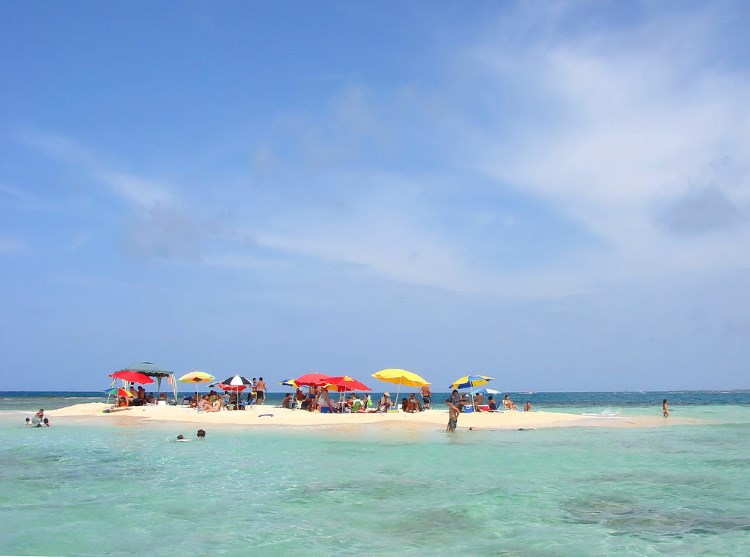
Morrocoy National Park is located in the northeastern part of Venezuela. It contains an area of mangroves and numerous islets and cays with beautiful sandy beaches. Coral reefs and tropical fish are abundant in the waters around the cayos. Dolphins, marine turtles and even some coastal caimans live in the remoter mangroves. Birds include pelicans, flamingos, egrets and the colorful scarlet ibis. On the islands, vegetation is sparse and generally adapted to the dry, salty environment.
9. Medanos de Coro [SEE MAP]
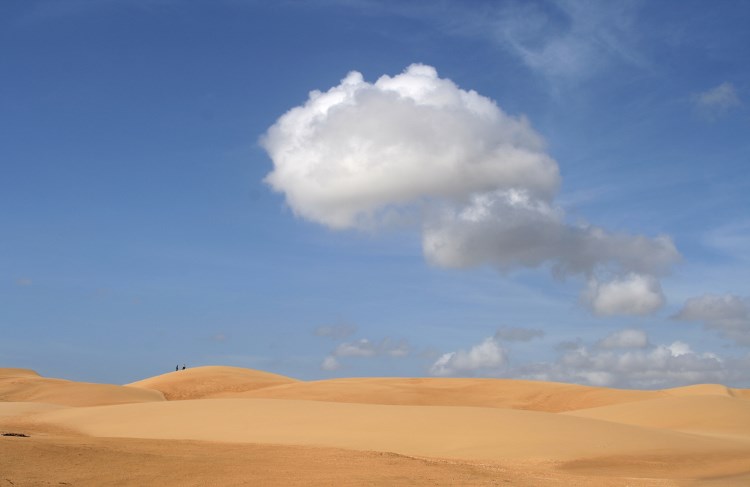
The sand dunes at Medanos de Coro National Park are a spectacular sight, especially since they’re located in what is essentially a tropical country. The dunes, some of which are 40 meters (120 feet) high, are in colorful shades of orange and yellow. High winds mean they are always changing shape. The area is quite dry, so there’s limited vegetation and wildlife to see. The dunes are a popular place to go sand boarding, and can also be explored on hired camels. The national park is easily reachable by bus or taxi from Coro.
8. Mochima National Park [SEE MAP]
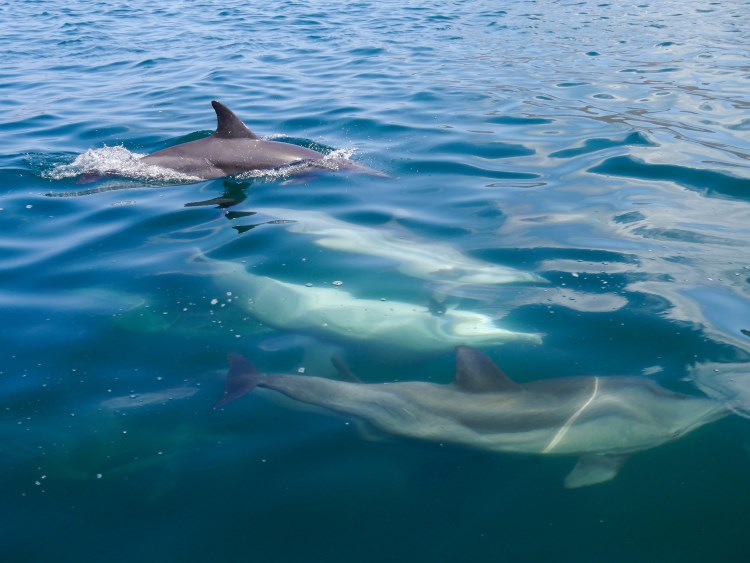
Mochima National Park is located on the northeastern coast and is designed to protect the marine environment as well as the forests of the Turimiquire mountains. Venezuela’s second marine park, created in 1973, takes in the shoreline from Puerto la Cruz to Cumana, as well as 32 offshore islands. Pelicans nest at La Ciena Cove while dolphins prevail at Isla Cachicamo. The park, named after a nearby town, is also popular with snorkelers and divers with excellent underwater spots, including exploring three ship wrecks, within a 30- to 40-minute boat ride from Puerto la Cruz.
7. Isla Margarita [SEE MAP]
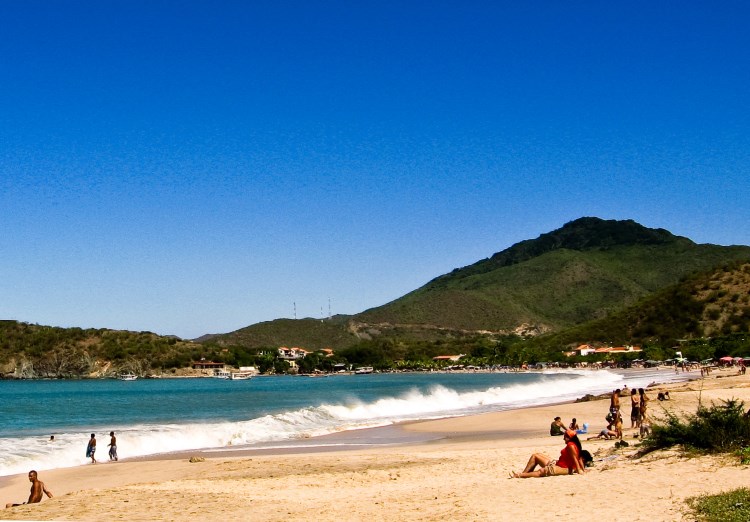
Isla Margarita, the largest island off the northeastern coast of Venezuela, is a great place to do some beachcombing. With 50 beaches strung out over the coastline, popular activities include wind- and kite-surfing, especially at Playa el Yaque. Isla Margarita is a popular vacation destination with Venezuelans, partly because of shopping at the duty-free port. It has several large cities, including La Asuncion, the capital of the Venezuelan state of Nueva Esparta. FYI: Christopher Columbus was the first European on the island, way back in 1498.
6. Mount Roraima [SEE MAP]
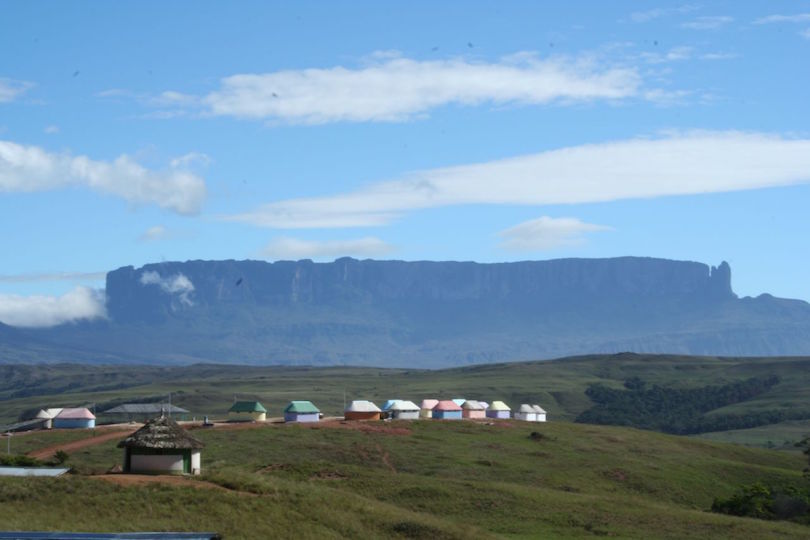
Mount Roraima is a tabletop mountain (or tepuy) than sits at an elevation of 2,810 meters (9,220 feet). While most of Roraima lies in Venezuela , it also marks the point where Brazil and Guyana join that country. The only way visitors can climb to the plateau however is from the Venezuelan side. It also is the centerpiece of Canaima National Park, where geologic formations date back two billion years. It rains almost every day on the plateau, which is home to some rare plants and animals. The plateau inspired Sir Arthur Conan Doyle when he wrote his 1912 fictional novel entitled The Lost World.
5. Merida Cable Car [SEE MAP]
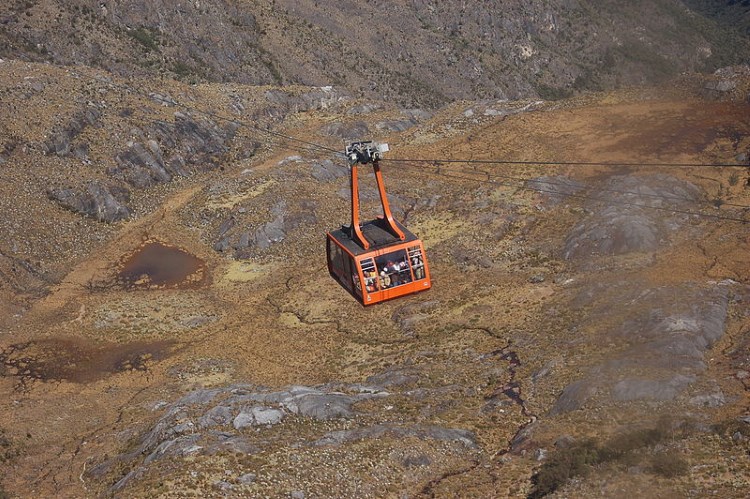
Riding the Merida Cable Car (called the Teleférico) is something that every visitor to Venezuela simply must do. Why? Because it’s the world’s longest and highest cable car. The cable car route is almost 12 km (7.5 miles) and soars more than 4,700 meters (15,600 feet) in the air. The cable car stops along the way, so visitors can get out and maybe do a little trekking; the stops are named after the views and other sights that are seen along the way. December to February is the best time to make the ride because there’s no fog.
4. Choroni [SEE MAP]
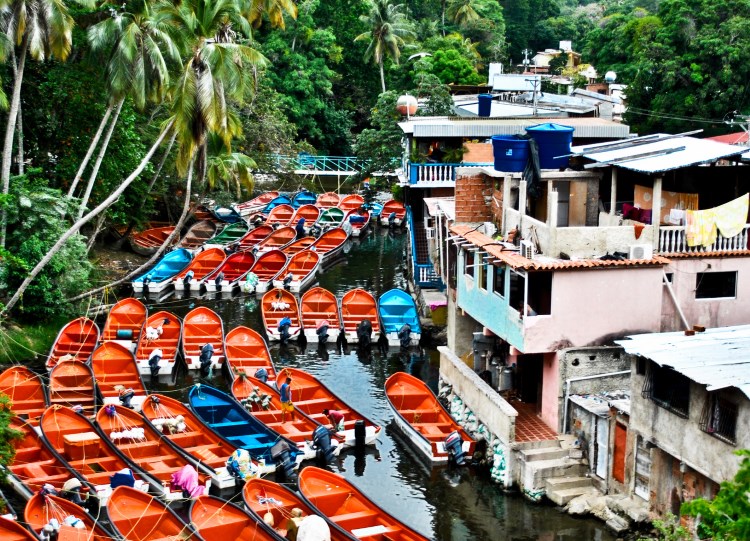
Choroni is generally known as one of Venezuela’s best Caribbean beaches, though the town itself actually sits slightly inland, boasting some fine colonial houses around a quiet central plaza. Choroni also makes a good base for bird-, plant- and wildlife-watchers who want to explore the cloud forest and lowland jungles of Henri Pittier National Park. Besides monkeys, snakes and deer, the park has 500 bird species and 200 kinds of butterflies. Venezuela’s first national park was originally known as Rancho Grande but the name was later changed to Henri Pittier, in honor of the scientist who proposed it.
3. Los Roques [SEE MAP]
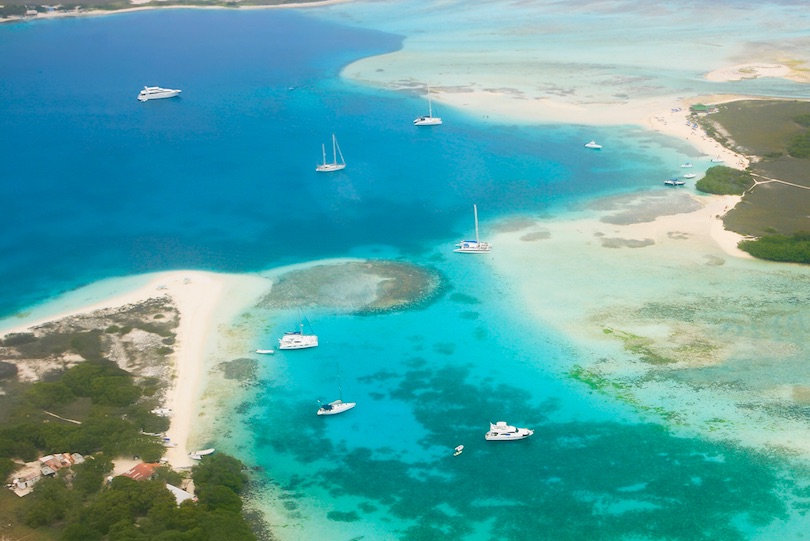
Los Roques Archipelago National Park was created in 1972 by the Venezuelan government to protect a marine ecosystem of exceptional beauty and ecological . It is the largest marine park in the Caribbean Sea. The almost untouched coral reefs host some of the most beautiful underwater fauna and flora of the Caribbean. The park has exceptionally beautiful beaches of white sand and multicolor, crystalline warm waters which make it a diving, sailing and fishing paradise. The main island is Gran Roque, which has a few small villa-style hotels that are small but comfortable.
2. Los Llanos [SEE MAP]
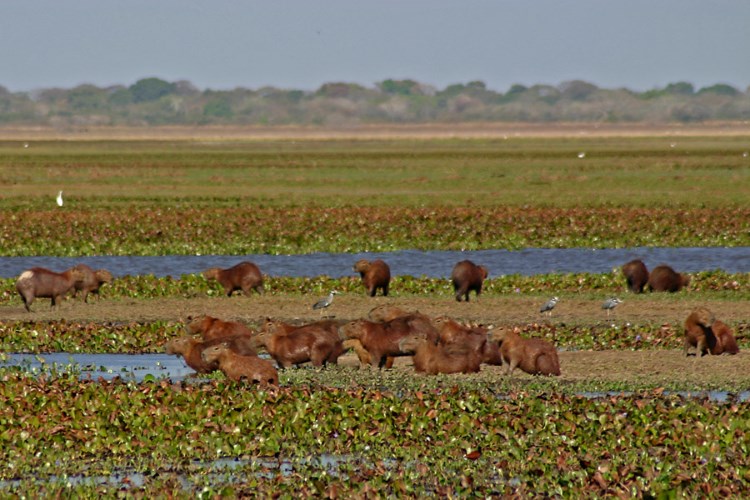
Los Llanos, or The Plains, is a vast grassland that straddles Venezuela and Columbia. The Orinoco River that runs through it forms the border between the two countries, and is the main river in Venezuela. Los Llanos generally floods during the rainy season (May to October), turning into a birdwatcher’s paradise. Sometimes called the Serengeti of South America, it’s the place to see wildlife in the dry season, when animals flock to the areas that do have water. Besides being the last stronghold for the Orinoco Crocodile, Los Llanos is also home to anacondas, capybaras, jaguars and caimans.
1. Angel Falls [SEE MAP]
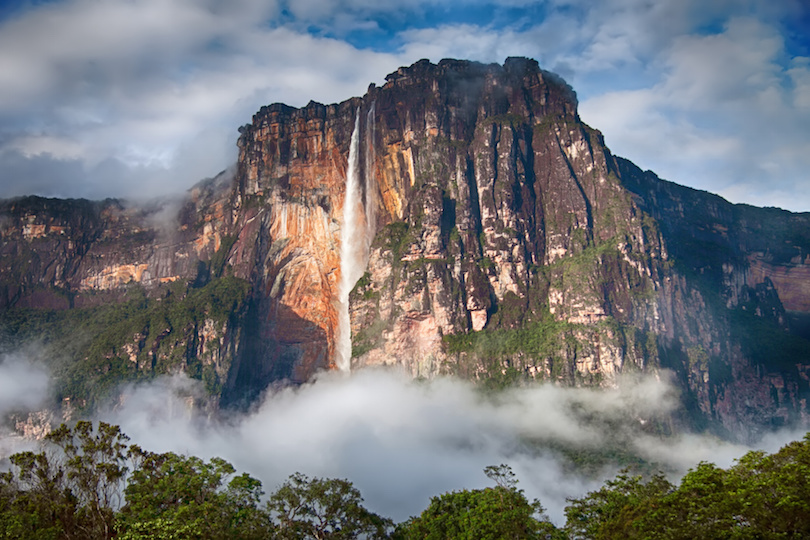
Angel Falls is one the most popular tourist attractions in Venezuela as it is the highest uninterrupted waterfalls in the world. It is 978 meters (3,208 feet) tall, and drops off the side of Auyantepui Mountain in Canaima National Park in Bolivar State. Located on the Gauja River, the falls were originally known as Kerepakupai Vená, or “fall from the highest point” by the local natives. The name was later changed to Angel Falls to honor Jimmie Angel, a U.S. aviator who was the first to fly over the falls. The waterfall is at its highest June to December.
Share this post:
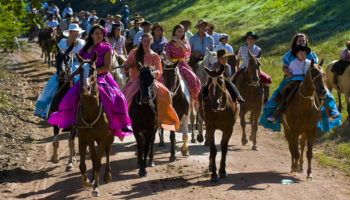
10 Best Places to Visit in Uruguay
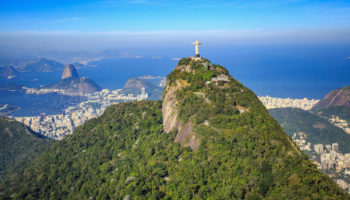
21 Best Places to Visit in South America
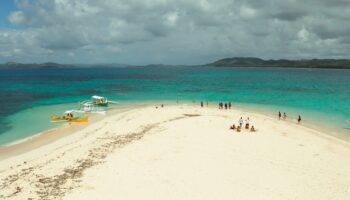
23 Most Beautiful Islands in Asia

A Guide to Climbing Santa Ana Volcano in El Salvador
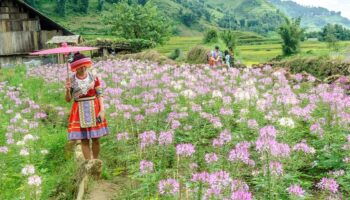
29 Best Places to Visit in Southeast Asia
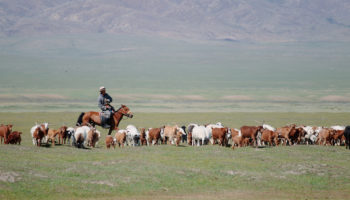
10 Best Places to Visit in Mongolia
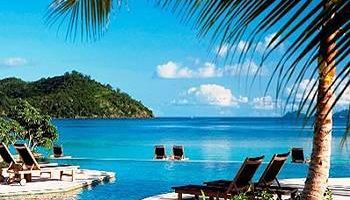
10 Best All Inclusive Resorts in Fiji
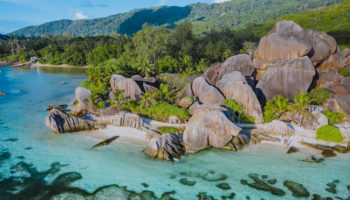
15 Best Things to Do in the Seychelles
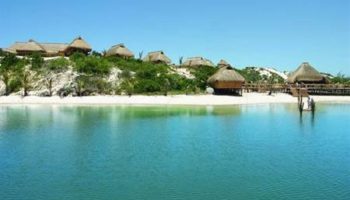
8 Best Mozambique Beach Resorts
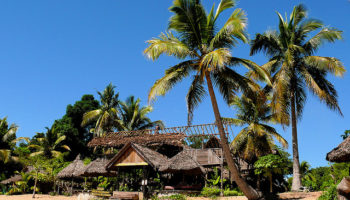
10 Most Beautiful Islands in Africa
Reader interactions.
January 23, 2021 at 12:10 am
Venezuela is such a beautiful country. But the government has destroyed the economy and tourism is at its worse.
December 17, 2019 at 12:17 pm
truly great pictures of initially speaking of a great destination however not possible due to many political and economical problems
Leave a Reply Cancel reply
Your email address will not be published. Required fields are marked *
This site uses Akismet to reduce spam. Learn how your comment data is processed .
UK Edition Change
- UK Politics
- News Videos
- Paris 2024 Olympics
- Rugby Union
- Sport Videos
- John Rentoul
- Mary Dejevsky
- Andrew Grice
- Sean O’Grady
- Photography
- Theatre & Dance
- Culture Videos
- Fitness & Wellbeing
- Food & Drink
- Health & Families
- Royal Family
- Electric Vehicles
- Car Insurance Deals
- Lifestyle Videos
- UK Hotel Reviews
- News & Advice
- Simon Calder
- Australia & New Zealand
- South America
- C. America & Caribbean
- Middle East
- Politics Explained
- News Analysis
- Today’s Edition
- Home & Garden
- Broadband deals
- Fashion & Beauty
- Travel & Outdoors
- Sports & Fitness
- Sustainable Living
- Climate Videos
- Solar Panels
- Behind The Headlines
- On The Ground
- Decomplicated
- You Ask The Questions
- Binge Watch
- Travel Smart
- Watch on your TV
- Crosswords & Puzzles
- Most Commented
- Newsletters
- Ask Me Anything
- Virtual Events
- Betting Sites
- Online Casinos
- Wine Offers
Thank you for registering
Please refresh the page or navigate to another page on the site to be automatically logged in Please refresh your browser to be logged in
Is tourism bouncing back to ‘no go’ Venezuela?
Exclusive: while uk foreign office warns against travel to the troubled south american nation, package holidaymakers from europe are flocking there, article bookmarked.
Find your bookmarks in your Independent Premium section, under my profile
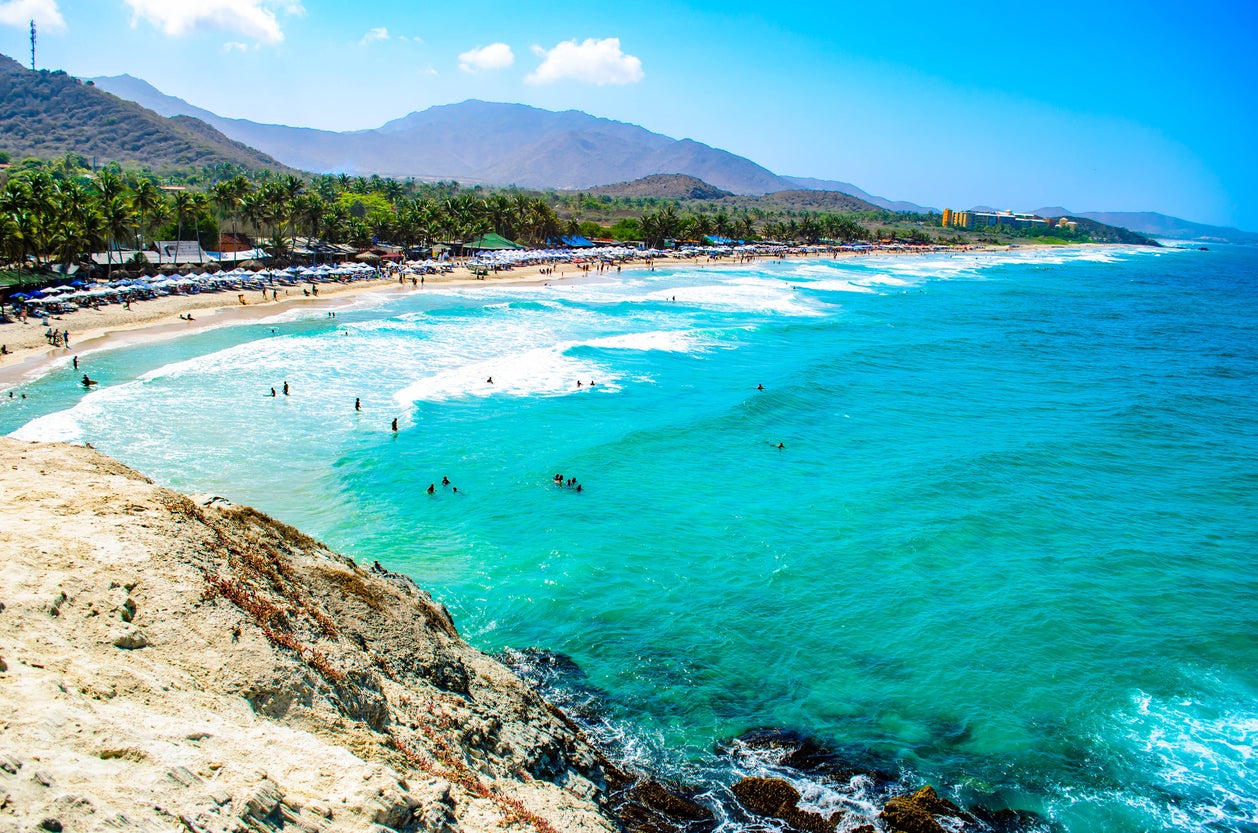
Sign up to Simon Calder’s free travel email for expert advice and money-saving discounts
Get simon calder’s travel email, thanks for signing up to the simon calder’s travel email.
“Armed robbery, mugging, carjacking and burglary are all very common and often accompanied by extreme violence” – so warns the UK Foreign Office in its travel advice for of Venezuela .
The FCDO warns against travel to the the troubled South American nation.
Yet package holidaymakers from Europe are flocking to Venezuela’s Caribbean beaches, mountains and wilderness – with tourism operators assuring prospective visitors they will be safe.
“Venezuela is completely open for tourism all around the country,” said Blas Fabian of HoverTours – a long-established tour operator based in the capital, Caracas.
Mr Fabian was speaking to The Independent at the Latin American Travel Association’s Expo 2024 in Windsor.
“We are running an operation from Poland ”, he added. Charter flights are operating from Warsaw and Katowice to Caracas, with 11 different tour options.
“Now we are also handling people from Spain and Portugal . We are reopening tourism all over Venezuela.”
In the 1990s, Venezuela was the first South American destination for many British holidaymakers – partly because the now-defunct national airline, Viasa, offered the most competitive fares from the UK to the nation.
But as the economy slumped and crime increased, tourism collapsed. Many travellers have switched from Venezuela to neighbouring Colombia , which is now seen as a relatively safe country.
At the same event, Daniel Santin from the destination marketing company Inspiring Destinations said tourists could help with Venezuela’s recovery.
“Without the support of the travellers in the destination, there’s more and more struggle,” he said.
“So travelling to Venezuela will enrich your life, plus enrich people’s life on the ground.
“Safety comes first. We know where to take people. We know the places to avoid.”
The attractions of Venezuela range from superb beaches and rich heritage to high-altitude adventures – including Roraima, the inspiration for Sir Arthur Conan Doyle’s The Lost World . This is the location for the Angel Falls – at 3,211 feet, the world’s highest waterfall.
But normal travel insurance will not be valid due to the Foreign Office “no-go” warning. The current travel advice warns of several particular perils:
- Basic public services including health care and security, and the supply of electricity, water and fuel, have deteriorated.
- Venezuela has one of the highest murder rates in the world.
- Armoured vehicles are commonly used in Caracas, especially after dark and for transport to and from the airport.
- Fuel shortages are common across all parts of the country.
The Wigan-based adventure operator, Lupine Travel, is planning its next departure to Venezuela in October. The 12-day trip costs £2,195, excluding air fares.
Join our commenting forum
Join thought-provoking conversations, follow other Independent readers and see their replies
Subscribe to Independent Premium to bookmark this article
Want to bookmark your favourite articles and stories to read or reference later? Start your Independent Premium subscription today.
New to The Independent?
Or if you would prefer:
Want an ad-free experience?
Hi {{indy.fullName}}
- My Independent Premium
- Account details
- Help centre

7 Exciting Things to Do in Venezuela (If You Dare To Go)
Venezuela; just the mention of this misunderstood country is enough to get your blood pumping. Express-kidnappings, spiraling inflation, tropical diseases, and an unstable government.
It’s no wonder that most people give Venezuela a very wide berth when traveling in South America.
Little do they realize that Venezuela is actually one of the best countries in the whole world for budding adventurers, especially if you’re on a budget. So, I wanted to share some of the top things to do in Venezuela to show you what makes it so special.
7 Things to Do in Venezuela
Table of Contents
Roraima is the highest table-top mountain in the world and straddles the Venezuelan-Brazilian border.
It’s a tough seven-day hike through the sweltering plains and up muddy trails but the stunning views are well worth it.
Strap on your pack, be sure to take warm clothes and journey off to find your own little corner of the mountain which inspired Arthur Conan Doyle’s ‘Lost World’.
You can bathe in freezing pools, hunt for crystals or simply soak in the tantalizing views of other nearby tepuis through the dancing mists…
2. Los Llanos
Keen to catch Piranhas? Want to wrestle an anaconda? Bought your bird-spotting binoculars? A 4 day, all-inclusive, wildlife tour of Los Llanos costs just $70 and you are pretty much guaranteed to see more wildlife than you can shake a stick at.
Explore this stunning national park by jeep, horseback, canoe and on foot – it’s a wildlife tour with a difference in that, chances are, you will be the only person there.
3. Spend Money Because It’s Crazy Cheap
20 beers for a dollar. 60 liters of gasoline for 2 cents. A five-star hotel room for four bucks… these are not exaggerations. Venezuela is by far the cheapest country I have ever visited, perhaps a tenth of the price of nearby Colombia .
If you change just one hundred bucks on the black market here you shall be presented with a literal wad of cash and can effectively live like a king.
4. Utilize Couchsurfing
Believe it or not, Couchsurfing is BIG in Venezuela I’ve been surfing for years and whilst I have noticed a steady decline in some countries this is definitely not the case in Venezuela.
It’s very easy to meet some truly cool people and save some pennies by crashing on someone’s couch for the night… best of all, your new friends can show you some real hidden gems!
5. Drink Rum!
Venezuela undoubtedly has the best rum in the world. Best of all, you can buy a bottle of $300 rum for about $4… so you can drink in style in a way that you probably never have before!
For me anyway, being in Venezuela was amazing; I constantly ate in good restaurants and drank super tasty rum, all for just a couple of bucks.
6. Angel Falls
If you’ve seen Pixar’s’ ‘Up’ then you almost certainly know what I am talking about… Angel Falls; the world’s highest waterfall and a truly stunning place to sit back with a beer after a couple of days hiking through the jungle!
I desperately wanted to visit with a bunch of red balloons but sadly didn’t get around to it.
7. Enjoy the Lack of Crowds
Currently, backpacking in Venezuela is a really well-guarded secret. There are very few backpackers there at all, in over a month I met under ten, but those who do go are in for a real treat.
Venezuela is so much cheaper than South America and although it may be a bit more dangerous it is nowhere near as bad as people make out; in my opinion, it was well worth the risk.
Choosing to go to Venezuela, despite everybody telling me not to, was one of the best decisions I have ever made. You may hear a lot of misinformation before you travel to Venezuela, I certainly did but don’t let it bother you; take the plunge and head out on an adventure unlike any other!
About the Author
Will Hatton. Writer and photographer. Adventurer and vagabond. Master of the handstand pushup. Conqueror of mountains, a survivor of deserts and crusader for cheap escapades. Will is an avid hitch-hiker, couch-surfer, and bargain-seeker. He is a devout follower of the High Temple of Backpackistan and the proud inventor of the man-hug. Will blogs over at www.thebrokebackpacker.com about his adventures around the world.
More on South America:
- Best Places to Visit in South America (Plus 34 Epic Adventures)
- Two Week Trip to Brazil Itinerary for Any Traveler
- 40 Bucketlist Things to do in Rio de Janeiro
- The Best Favela Tour in Rio: Defeating the Stigma
- 16 Epic Things to do in Bogota
- 10 Essential Things to Do in Lima, Peru
Did you like this story? Share it!
Travel planning resources, about guest writer.
Guest writers for Divergent Travelers offer insider tips and information on destinations that they are experts in. It is important to us that we are able to have the highest level of travel information available to you from local writers and experienced travelers.
9 thoughts on “7 Exciting Things to Do in Venezuela (If You Dare To Go)”
Venezuela is my favourite country. I have seen most of it and visited three times, once solo. Always felt safe, people were so kind and helpful, I can’t wait to go back.
Always find that corner of South America fascinating,. we can talk about express-kidnappings, spiraling inflation, tropical diseases and unstable governments until the cows come home but it can also happen to you in New York city. Fabulous post you guys and the wad-of -cash-dollar-exchange photo… priceless!..
keep on rolling. Cheers!. German
Hi guys! Venezuela is truly an amazing country; sure, its statistically more dangerous than anywhere else in South America and let’s not beat about the bush; it can be a tad dodgy but the places, and prices, make it well worth the risk in my opinion. I have been to over fifty countries and this is without a doubt the most beautiful! Regarding travelling there alone, I think it’s fine but you MUST speak at least some basic spanish or I think you could get in trouble. Visiting Venezuela is pretty easy, cross the land border at Cucata from Colombia, don’t fly into the country directly, it’s too expensive… you can catch a cheap flight to Colombia from Europe, have a bit of a wander there, and then head on over to Venezuela… safe and happy travels! Peace and out, Will @ The Broke Backpacker.
That’s interesting that you say Venezuela is cheap. Everybody I met while travelling through South America told me that compared to other countries it is really expensive. But maybe that changed as a result of the political turmoil. Would definitely love to visit it one day. Roraima looks amazing!
Hi, I was born in Venezuela and have family living there. It is cheap when you’re converting dollars to bolivares, so it is great for tourists traveling there. However, the cost of living for those residing in the country is very expensive, that’s why you may hear so many comments about basic products etc being expensive. Inflation is through the roof. But it is a beautiful country, so as long as you can afford the plane ticket (it’s around one grand from Miami to Vzla right now), you should be set.
Wow thanks for sharing never knew the exchange rate was like that sounds like lots of fun at a low price!
Hi! What do you think about the expensive visas? As a young, solo, female traveler, do you think Venezuela is possible or best to wait until I have at least one other travel partner?
Venezuela has always fascinated me – like you, I have heard so many bad things about it but the few people I know who have visited have loved it. When I finally make it to South America, I will definitely be making sure it is on my itinerary – it sounds like a place that can’t be missed.
You can’t go wrong with cheap quality rum!
Hi Will, Interesting read… I was in Venezuela back in 2007, before the economy of the country completely collapsed. At that time, exchange rates on the Black Markets were 1 to 2 compared to official rates. It seems that now the actual exchange rates have gone through the roof. My memories are of a quite unsafe place, where I had a very weird feeling, and definitely the only country in South America (I have visited Colombia, Peru, Bolivia, Brazil, Uruguay, Argentina & Chile so far) were I felt unsafe at night, as streets were completely deserted. Yes, Roraima is amazing, but do not do it in the rainy season! I would definitely add the Orinoco Delta, one of the highlights of the trip for me. I didn’t know couch surfing was that big there. Cheers, Gilles
Leave a Comment Cancel reply


- DESTINATIONS
- EXPERIENCES

Venezuela is Open for Tourism: 8 Unbelievable Places to Visit in 2022
Venezuela is often skipped by travelers who are taking their grand tours of South America. Countries that are deemed safer and more politically stable – like Brazil and Chile – are normally the first choices for folks heading to Latin America. But for the experienced and adventurous traveler, there is no better country to visit on the continent than Venezuela. It’s so remarkably beautiful, home to some of the best places to visit on earth.
Despite political turmoil, the people here look on the brighter side of life and the incredible landscapes dotted across the country make that a lot easier. From Angel Falls to Los Roques, Venezuela is easily one of the most beautiful countries in South America. If visiting this gem of a country is on your bucket list for 2022 then we have some important tips for you.
Firstly, to book your travels with confidence, contact the team at Osprey Expeditions (founded by Ben Rodriguez). They have over 20 years of experience running tours and expeditions in Venezuela and Colombia – catering for solo backpackers, group trips and tour agencies. Osprey Expeditions has been recommended by the likes of Lonely Planet and the reviews of this company are simply the best you will find in Venezuela.
Secondly, you should know that Venezuela has an endless amount of places to visit, so narrowing down your selection is crucial. Along with the team at Osprey Expeditions, we have put together the 8 best places to visit in Venezuela for 2022. These destinations range from waterfalls to mountain tops to islands, and everything in between. With the country open again after the pandemic, there has never been a better time to go!
8 Best Places to Visit in Venezuela
1. angel falls, canaima national park.
Angel Falls needs no introduction. It’s the tallest waterfall in the world and a true wonder of the world. Standing at 979 meters, the majesty of this place will take your breath away! Combine the nature of Angel Falls with the surrounding beauty and ancestral culture found in Canaima National Park, and you have yourself one of the world’s greatest destinations.
Being at Angel Falls gives you the chance to reflect on this planet and your role in it. This park is one of the oldest places on earth – with pure and pristine nature found around every corner. The energy of the waterfall itself is electric. No photograph can do this place justice, you simply have to see it and feel it for yourself to appreciate this giant of Venezuela.
You can book an Angel Falls Expedition with Osprey Expeditions. They offer three itineraries for experiencing this waterfall: a 4-day, 5-day or 16-day trip (the 16-day itinerary includes Angel Falls, Mount Roraima and the Orinoco Delta). These trips involve everything from dense jungle walks, to river boat trips, to eating food with local tribes, to sleeping in hammocks. You will also get to visit other waterfalls along the way such as Hacha and Ucaima.
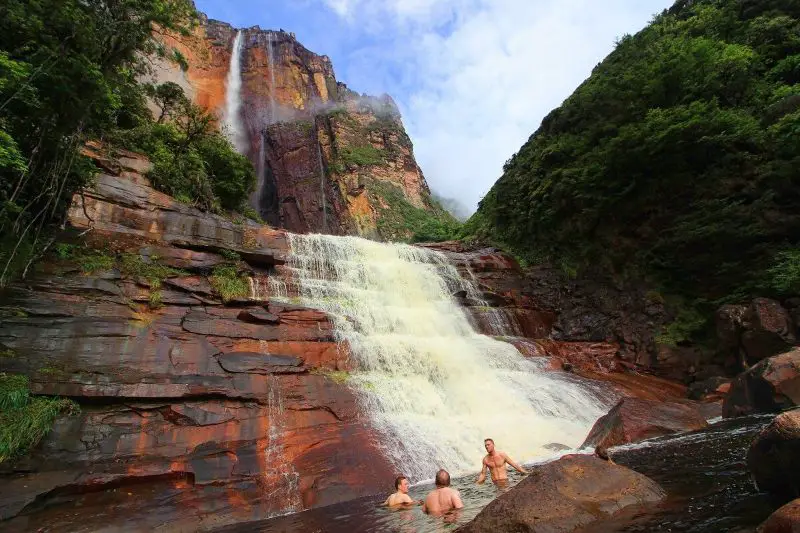
2. Mount Roraima, “The Lost World”
Mount Roraima shares a border with Venezuela, Brazil and Guyana. It has a sacred energy to it very much similar to Angel Falls. Roraima is the tallest table-top mountain in South America (known as tepuis , meaning “house of gods”, to the native people). This mountain reaches over 2,800 metres in height and is a whopping eight kilometers long!
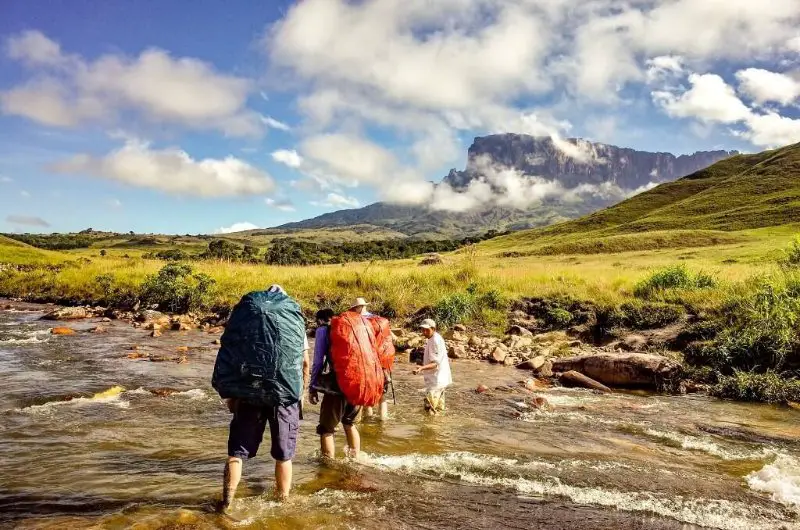
3. Los Roques National Park, Archipelago
Did you know that Venezuela has the longest Caribbean coastline in the world? This makes it a beach-lovers paradise! One of the best places to visit in Venezuela in the Caribbean Sea is Los Roques. This archipelago/national park is home to roughly 350 different islands, cays and islets – all boasting beautiful, white-sand beaches and shimmering turquoise waters.
You can take a flight to Gran Roque where the airport is located and then go island hopping. Some of the best islands to visit are Francisqui, Noronkey, Madrisqui, Crasqui and Dos Mosquises Islands. The weather is warm, the sun shines daily and the waters are perfect for snorkeling!
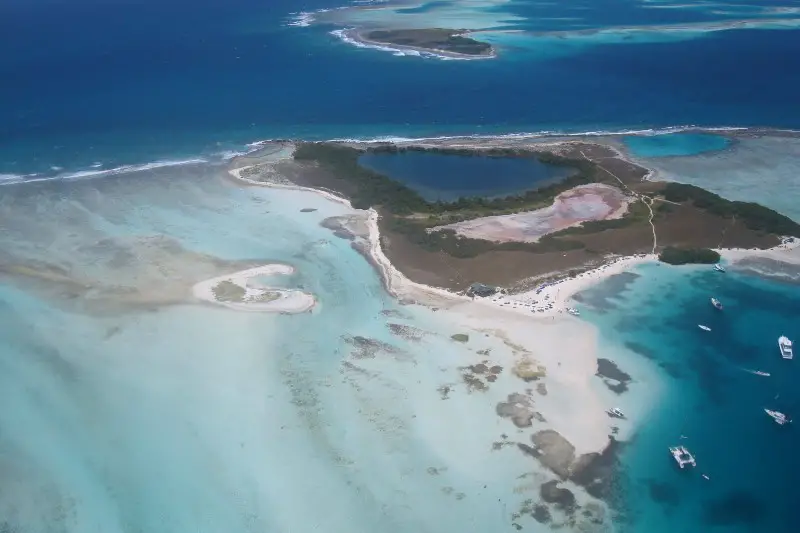
4. Orinoco Delta, Eastern Venezuela
The Orinoco Delta is one of the most unspoiled regions in the world. It’s a rich ecosystem of wetlands, wildlife and tribes. The indingeous people who call the delta home live in thatched huts which are all dispersed throughout the area. Development is almost non-existent. The only way to get around in Orinoco is on the river by boat or traditional canoe.
The most unique wildlife species here include Red Howler Monkeys, Giant River Otters, Toucans and Caimans. The variety and sheer number of different birds you will see in the delta is nothing short of remarkable! So as you can probably tell by now, the Orinoco Delta is a wildlife-lover’s dream.
Book your Orinoco Delta adventure with the team at Osprey and experience all the magical wildlife mentioned, and immerse yourself in the culture of the Warao communities – meeting villagers and craftsmen along the way. Your amazing Warao guide will give you the chance to try edible plants and juicy grubs of the delta (which is an experience in itself). Although, you will need to have a strong stomach for this!
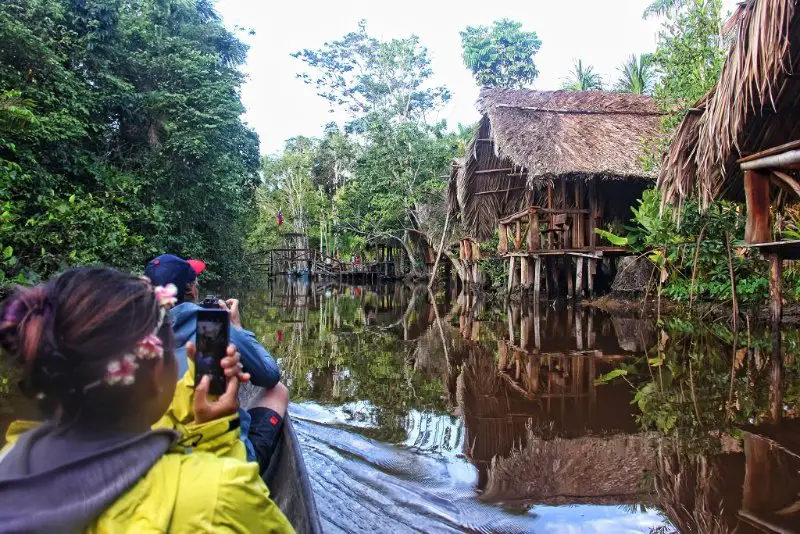
5. Catatumbo River, Near Lake Maracaibo
For a truly unique sight head to the Catatumbo River where it flows into Lake Maracaibo. It’s in this corner of the country where you find Catatumbo Lightning raging for 160 nights of the year, for 10 hours at a time. This is known as the “Relampago del Catatumbo”. Considered the most electric place on earth, this slice of Venezuela should definitely be on your list!
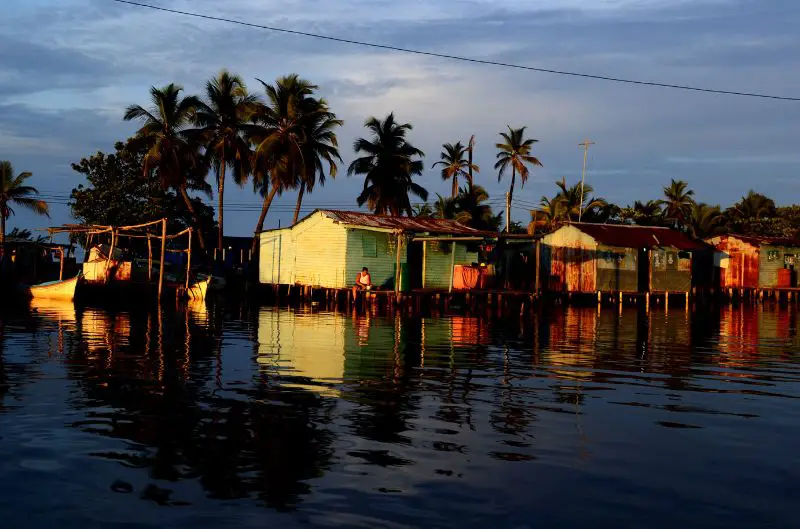
6. Caracas, Capital City of Venezuela
Join Osprey Expeditions for an exciting day tour of Caracas, the capital home to 2 million Venezuelans! On this day trip you will visit famous sights such as Simon Bolivar house, Plaza el Venezolano (San Jacinto) and the Panteon Boulevard situated in the Altagracia District. This can include pick-up at Simon Bolivar International Airport and transfers to your next tour, so you are fully looked after as soon as you arrive in the country.
7. Margarita Island, Caribbean Sea
If you’re looking for more beaches in Venezuela then head to Margarita Island! The beaches here are lovely but that’s not the only reason to visit. The island is also home to intricate mangroves, awesome little coastal towns and colonial old villages where the Spanish past is still felt today. In the interior of the island, you will discover high hills and lush vegetation – perfect for taking a hike or for a horseback riding adventure.
Indeed, by booking your Margarita Island trip with Osprey Expeditions you will be able to enjoy horseback riding, snorkeling and kayaking. The minimum stay here is for two days but you can always extend your trip for a few more days if you fall in love with this slice of Caribbean paradise.
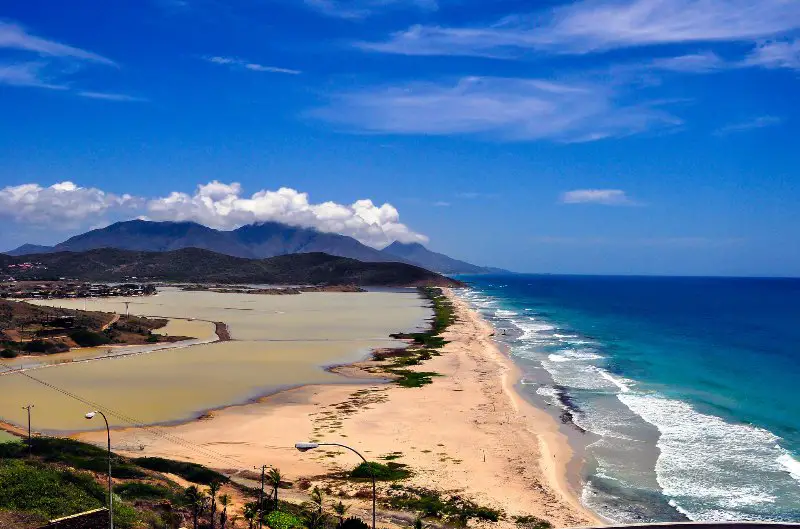
8. Choroni Locality, Northern Venezuela
Choroni is a coastal locality located in the north of Venezuela. This destination is well off-the-beaten-path and offers travelers a truly authentic experience. Beaches, waterfalls, hikes and more can all be enjoyed. The locals are notorious for their hospitality too. Ben Rodriguez, Director of Osprey Expeditions, recommends this as the perfect ending to your trip:
“Not only are the beaches great but the people are friendly. Here you can see how the local fishermen live. You should visit the pier and see how the fresh fish arrives to get traded. Also, if you have the energy, swim at Playa Grande by 6:30am to enjoy the dawn with clear waters. To me this is the ultimate way to finish a trip in Venezuela, it’s pure relaxation”.
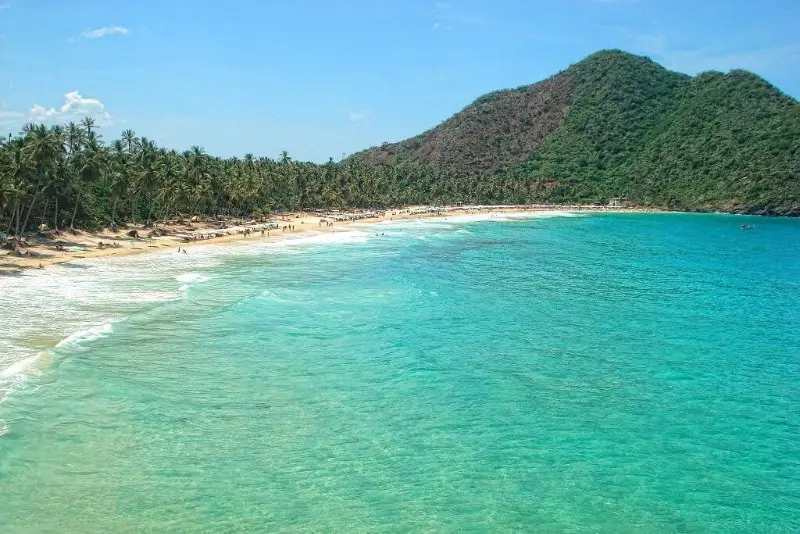
Need to Know Before you Go
Booking with a reputable company like Osprey Expeditions will give you a boost in confidence to travel to Venezuela for the first time. Their English speaking staff will meet you at the airport and look after you from start to finish, so you can focus on experiencing all of those epic places that Venezuela has to offer (instead of worrying about safety or logistics).
While the news media and government agencies paint a dark picture of Venezuela, the reality on the ground is that Venezuela is a safe country as long as you practice common sense. If you have trepidations about your safety, you should get out of the cities (like Caracas) and head to nature. You will find Venezuelans to be just as friendly as any other nation.
Most Venezuelans speak Spanish so if you took Spanish classes at school, make sure you brush up on it before you go! This will make a big difference to your experience as most people here don’t speak a word of English. But remember, the staff at Osprey Expeditions can speak English.
One of the biggest questions people have about Venezuela is visas and this changes depending on your nationality. The best option is to do extensive research online or call up the nearest Venezuelan embassy. They should be able to provide information on visa applications. Apart from that, just book your flights and tours with Osprey Expeditions, and then this gem of South America is waiting to greet you with open arms!

Author: Cameron Kennedy
Related posts.

Leave a Reply Cancel reply
Your email address will not be published. Required fields are marked *
Save my name, email, and website in this browser for the next time I comment.
Post comment
Travel experiences
Accommodation.
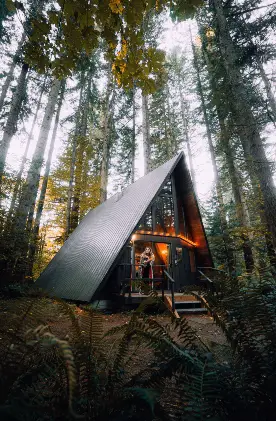
Beaches & Islands
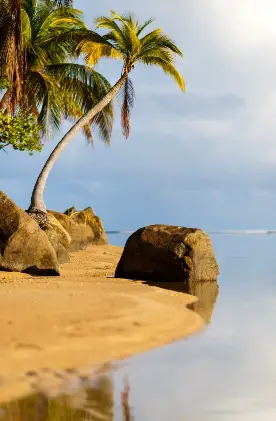
Food & Drink
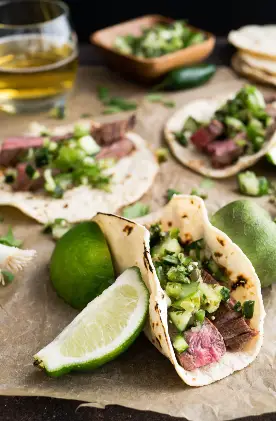
Historical Sites

Living Abroad
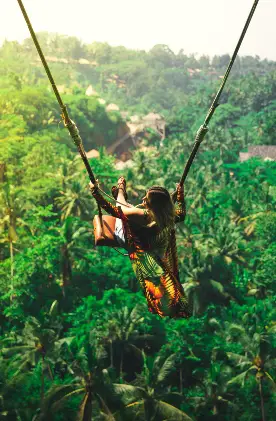
National Parks
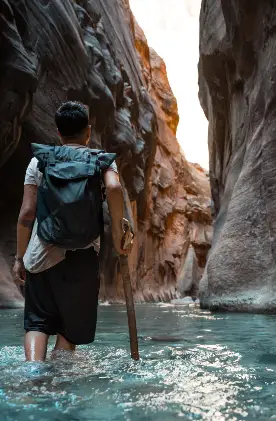
Towns & Villages
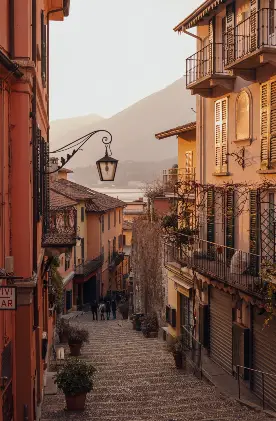
Travel Tips
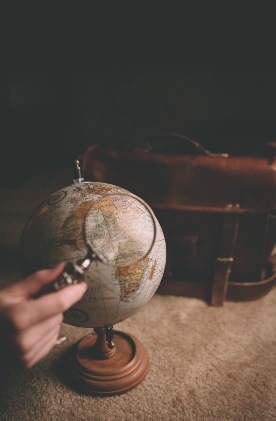
Sign up to our newsletter
Best attractions in Venezuela: Top 15

Venezuela is the most colorful country in South America with pristine nature that has preserved its pristine beauty and exuberant colors. Tourists flock there year-round, and even seasoned travelers will find something to see in Venezuela. A visit to this small Latin American country will allow you to explore Venezuela’s unique natural attractions.
What to see first in Venezuela
Here is a list of the main historical and architectural monuments, as well as natural wonders that are advertised by literally all guides in Venezuela. Based on the information received, each traveler will have a chance to make an individual plan of excursions for the time of stay in the country of gastronomic pleasures and incredible scenery.
1. Angel Falls (Canaima Venezuela National Park)

What to see in Venezuela while traveling? Of course, take a trip to a huge mountain 807 meters high, from the top of which water rushes down. The water stream traverses several cascades, the largest of which is about 400 meters long. At the base of the mountain is a lake. The mountain is located in a wild tropical forest and people get here quite rarely. And asphalt roads are not provided in this mountainous area.
Angel Falls is one of the greatest waterfalls on the planet. The path to it is not easy, but the effort is worth it. You can get here by traveling by river or by air. Most often tourists get to the falls by plane. In the small town of Canaima there is an airport, which sends tourists who want to admire the falling from a great height water. To do this, you need to choose the right time for the trip - if there is increased cloudiness, visibility will be poor, and to see the waterfall will not work. Therefore, it is better to plan a trip to this remote place of the planet in the dry season, which lasts here from June to December.
Venezuela | Save on hotel reservations
2. canaima national park (bolivar state).

The natural attractions of Venezuela are very diverse, and the Canaima Reserve stands out among them. It is a world of wildlife, unique landscapes, and mystical secrets.
In the park there are mountains of unusual shape with cut off tops, which are called tepuis. These are the oldest mountain formations, resulting from the destruction of a huge plateau. The steep slopes of the tepuis are made of hard sandstone. At the top of the mountains there are many sinkholes, the size of which reaches 300 meters.
Indian tribes believed that on the tepui, surrounded by fluffy clouds, the gods lived. At the foot of the mountains stretched amazing waterfalls and impenetrable jungle. Their inhabitants are carnivorous plants, exquisite orchids, monkeys of all kinds, huge ants and other representatives of flora and fauna.
Visitors to the park are invited to take a canoe ride or view its beauty from an airplane. On the territory of the park there are several settlements of Indians. Unforgettable impression is made by the famous Angel waterfall. Its height is so great that the water flow turns into a mist when it reaches the ground.
The trip will be impressive for connoisseurs of wildlife and those who want to open the door to an amazing world.
3. Morrocoi National Park (Falcon State)

If you’re wondering what to visit in Venezuela to make your trip memorable, go to Morrocoi National Park. It is a continental part and a complex of small islands. Scattered along the coast are beautiful coral reefs. In the water you can find a wide variety of fish and crustaceans. Exotic beaches are full of vacationers, and if you want peace and quiet, you can rent a boat or a boat and sail to the pristine island.
The national park provides rental equipment for diving and fishing. After your trip, you will be left with many photos of the vibrant underwater world. In Morrocoi Park, there is an opportunity to visit the Indian village of Cuare. The village is notable for a large canyon with ancient Indian inscriptions. Not far from the canyon is the bird sanctuary of the same name, the largest in the world. These attractions in Venezuela will make you forget everything. After enjoying the beauty of the flamingos, sea turtles, and pelicans, it’s easy to find a place to eat and stay overnight. The park’s infrastructure is excellent.
Official website : https://morrocoy.travel
4. Mount Roraima (Canaima Reserve)

Venezuela is the most picturesque and colorful country in South America. Since the time of the Spanish conquistadors, interest in it has been constantly growing. The pristine nature, tropical forests, highest mountains and plateaus, numerous rivers and waterfalls, unique fauna and flora - all this attracts explorers and tourists from all over the world.
The huge Roraima Plateau, the grandiose Angel waterfall falling from a height of more than eight hundred meters - these and other attractions of Venezuela can be found in the immense Canaima National Park, the largest by area in Venezuela, which is included in the UNESCO World Heritage List.
The Rock of Roraima, a blue-green mountain, according to the legend of the Indians (who, incidentally, still live there) is not a mountain at all, but the stump of a mighty tree of plenty, the “center of the Earth”, where the goddess Quin - the foremother of men - still resides.
The Roraima Plateau, which looks like a pyramid with the top cut off, is riddled with numerous rivers and waterfalls, stone labyrinths and caves. More recently, a karst cave called Crystal Eye was discovered here. It turned out to be the largest from all the caves discovered before. Guides will lead you to the “lost world”, described by Conan Doyle, where the still untouched landscapes amaze with their fantasy.
5. The cable car in Mérida

What to visit in Venezuela? The answer is simple - everyone who comes should see Telerifico de Merida, the most interesting and exciting place. Here is a cable car, which has no equal in the world. Its total length is 12.5 km. The guides will tell you about the peculiarities of its construction, show some sights of Venezuela from the bird’s eye view, and offer to take a walk and make unforgettable photos against the background of snowy slopes.
The route runs from Barinitas to Mount Espejo (altitude 4.7 km) and is divided into 4 parts (La Aguada, Pico Bolivar, La Montana, Loma Redonda). The best time to travel is in the morning, before fog or clouds form and hide the mountain scenery.
The sudden change in climate (altitude and oxygen concentration in the air) can have an adverse effect on the well-being of the tourist. For people who are prone to meteorological dependence, there is a cable car up to 1 or 2 sections of the route. Thrill seekers are offered hikes, but experienced travelers are advised to order the services of a guide, as in the mountains it is easy to go astray and get lost.
6. El Guacharo Park (Monagas)

Anyone planning to visit the sights of Venezuela can’t ignore the El Guacharo National Reserve Park. The park is divided into two parts: the mountainous part (Black Mountains) and the lower part (Media Caripe River).
The area of 627 square kilometers has a lot of interesting places for both explorers and tourists. One of them is the Guacharo Cave, which is 10.2 km long, but only 1.2 km is accessible to visitors. This karst cave consists of many corridors with stalagmites and stalactites. These caves are home to the nocturnal guajaro “wonder birds” that fly out of their shelters by the thousands at night in search of food. Guacharo was first seen and described by the scientist Humboldt (1799), so the second name of the cave - the name of Humboldt.
There are other attractions available for viewing in the park. For example, the waterfall of Salto La Paila, with picturesque scenery around it. The flora and fauna of El Guacharo is rich in diversity, unique and rare species. The excursion route will take 8-10 days. It is recommended to visit the National Park from December to April.
7. The Orinoco River and its delta (the Atlantic coast of Venezuela)

One of the largest and most abundant rivers on the planet originates at the Brazilian border and flows into the Atlantic Ocean, forming a unique delta in its natural riches on a vast coastal area. The main attractions of Venezuela in the Orinoco Delta are the fabulously rich natural world, flora and fauna of virgin forests, original culture of ancient Indian tribes living on numerous islets of the delta.
Each of the tributaries and arms of the huge river is a unique natural zone, a unique ecological system. The tributaries differ in color and composition of water, and the entire ecosystem as a whole counts a huge number of species of birds, animals, plants, fish, and reptiles. Among them is the most enormous snake on the globe, the anaconda, which terrifies all living things.
And another attraction of the Orinoco Delta is the historic center of Ciudad Bolivar, a city attracting tourists with the splendor of colonial architecture, which was the capital of Venezuela during the time of Simón Bolívar.
8. Margarita Island (Nueva Esparta State)

Margarita Island, awarded the title “Pearl of Venezuela,” was discovered by Christopher Columbus and colonized by the Spaniards because of its pearl placers. Located among the reefs of the archipelago, which includes several other islands. A true paradise for tourists - upscale fashionable hotels, miles of sandy beaches, lots of orchids, hundreds of flamingos and parrots, comfortable and relaxing vacation.
To enjoy the relaxation, to see the colorful sights of Venezuela, you should drive along the coast of Isla de Margarita, plunge into the nightlife suburb of the capital - Costa Azul, visit the remarkable, inimitable forts, forts and charming villages, buried in the luxuriant green parks and gardens, visit historical museums, plantations of cocoa beans, unique thermal springs.
For special guests, there are miles of luxurious beaches with pure white sand and huge palm trees, some beaches for surfing, colorful hotels and pensions, which are located in private estates and isolated from the rest of the beaches. And another jewel of the island is the cosmopolitan city of Puerto de la Cruz, a resort and tourist center of leisure and entertainment.
9. The Caribbean Andes (western Venezuela)

The Andes are the longest mountain range, stretching all along the west coast of South America, and part of it crosses western Venezuela from the Colombian border to the Caribbean. The highest point, Bolivar Peak, is just over five thousand meters above sea level.
The northern foot of the mountains is washed by the warm Caribbean Sea. The capital of hiking, Mérida, is high in the mountains, just below Bolívar Peak. From here come dozens of hiking trails and paths, attracting hiking enthusiasts like a magnet.
The picturesque sights of Venezuela will open the eyes of tourists: charming historical towns with lush colonial architecture of buildings, churches and museums, parks and gardens buried in the green trees and luxurious orchids, waterfalls and mountain lakes with a lot of fish, which jump into your hands.
A high-altitude observatory with a Schmidt telescope, a national park guarding the famous eagles-condors, coffee factories-all the diversity of the colorful world you will find as you wander through Venezuela’s countless hiking trails.
10. Puerto de la Cruz Beach (Margarita Island)

What to visit in Venezuela if you want not only to walk around the local museums and interesting places, but also to sunbathe? If so, head to Puerto de la Cruz beach, located on Margarita Island. It is considered one of the best. Not without reason it is called the pearl of the Caribbean Sea. Surprisingly dry climate and sun - all this attracts vacationers.
The romantic place is located in the bay, which is reliably protected from the wind. There is a sandy bottom and white sand. The island has a well-developed infrastructure, and to book a comfortable hotel is not a big difficulty. However, it is better to do it in advance if a trip to Margarita is planned in the summer season, when there are a lot of holidaymakers. In the winter months, when the rains start, you can rent a room at any time. You can get here by plane, which has regular flights from Caracas airport, and then go to the island by ferry or on a real liner. You can diversify your vacation by going to see the local attractions of Venezuela in the national parks located on the island. It is home to rare parrots and other feathered birds. There are also discos and restaurants. You will not be bored!
Sightseeing in Venezuela: What else to see while in Venezuela
Incredibly intense and sometimes even extreme excursions in Venezuela beckon many travelers. To make every moment filled with vivid emotions, see photos and read about the most popular sights, worthy to become an addition to your excursion program.
11. El Guacharo Cave (El Guacharo National Park)

What to see in Venezuela when planning a vacation here? Of course, you must go to see the legendary El Guacharo Cave, which is located in the national park of the same name. It is located at an altitude of 1065 m above sea level. Its temperature inside is about 21 degrees and it is about 10.5 km long. The cave has several halls and many corridors.
Here you can meet the attractions of Venezuela in the form of a rare nocturnal bird guajaro. Its appearance is quite ordinary, something it resembles a chicken. However, it is a carnivore, as evidenced by the curved eagle’s beak and the wings of a large size. For tourists in the national park there are several routes. You can order a tour of 10 days. In addition to your impressions will be a climbing route, which has a length of about 250 meters. It is located near the Miraflores mountain. Here you will also have the opportunity to see the waterfall of Salto La Paila. You can get to the national park from Caracas. To camp in the reserve, you must obtain a special permit. Tourists are also offered a trip by plane, which takes flights from Maturina Cumana Airport.
12. Temple of Vinger de Coromoto in Guanara (Portuguesa State)

What to visit in Venezuela when going to the city of Guanare, located in the state of Portuguesa in the northwest of the country? There are several universities and a monument dedicated to the national hero Simon Bolivar. But the main attraction is the Church of Vinger de Coromoto, erected in honor of the Virgin Mary de Coromoto. This saint is considered the patroness of the country. There is an ancient Indian legend according to which one of the local chiefs, who tried to hide from baptism in the local jungle, the Virgin Mary appeared and offered to be baptized. Some of his tribesmen accepted the rite, but the cacique himself, fearing for his own power, continued to persist and even tried to shoot the saint with a bow. Strangely, however, the weapon fell out and the image of the Virgin Mary appeared in his hand. Subsequently, the chief was bitten by a poisonous snake, so he returned to Guanare, where he was baptized, after which he became a preacher.
You can see these sights of Venezuela with your own eyes when you visit this amazing city. The temple of the Virgin Mary is not the only place in town that will be interesting to visit the tourist. There are theaters, museums, restaurants, and nightclubs. You can stay at a local hotel and get acquainted with it.
13. Lake Maracaibo (northern Venezuela, Maracaibo)

What to see in Venezuela is the question every tourist planning a trip to this country is asking, because there is so much to see here. One of the oldest lakes on the planet is Lake Maracaibo, located in the northern part of Venezuela. Its water is salty, but this largest body of water in Latin America is attracted by its unusual lightning, which can be seen here 160 days a year. In the language of the indigenous people, it is called the “Snake Place.” Many ancient Native American legends are associated with it. Scientists say that even its name the country owes its main attraction.
The Yupa, Guajiro, and Parahuano Indian tribes living here add special color to the area. The unique natural landscape, representatives of flora and fauna, which can be found only in the National Park Cienagas del Catatumbo, part of which is a lake, all this attracts crowds of tourists from around the world. Boat rides on the vast natural body of water will be fascinating. You can even stay here for a few days, renting a small house of those that are built especially for tourists. Going to see the sights of Venezuela, it is worth visiting this exotic place.
14. Bolivar Peak (Mérida National Park)

If you have had your fill of the exotic beauty of this Latin American country and don’t know what else to see in Venezuela, we suggest you visit Bolivar Peak. It is the highest mountain in the country and is part of the Sierra Nevada system of peaks located in the Mérida National Reserve. Several expeditions tried to conquer the mountain from 1897 to 1922, but they failed. And only in 1935 a man was able to climb to the top.
There is an ancient Indian legend, according to which the glaciers of Bolivar Peak are the hands of a princess who hunted eagles, and the snow on the tops are the folded wings of birds. Today, this mountain range is very popular with visitors to the country. Moreover, it is one of the popular tourist routes. Today, everyone can visit the highest mountain and admire the sights of Venezuela, located in the eastern Cordilleras, from there. For the convenience of travelers there is a cable car that leads to the peak of Espejo, located next door. And if there is a desire to get directly to Bolivar Peak, you can make the way on foot.
15. Simón Bolívar House Museum (Caracas)

Caracas has many interesting places worthy of tourist attention. What to see in Venezuela when traveling through the country? The capital has a large Cathedral, the Miraflores Palace and even the Teresa Carreño Theater. You can spend an entire day admiring the sights of Venezuela located in the city. However, the experience would not be complete without visiting the local Simón Bolívar house-museum, located on San Jacinta Street. Outwardly it is an unattractive building, but it is loved and respected by locals who honor the memory of their liberating hero. This is the house where the national hero of Venezuela was born, spent his childhood and youth. That is why all the exhibits of the museum are linked to his memory. There are antique chests, pieces of furniture, mirrors, bedrooms and a library. The museum often hosts exhibitions of local artists.
There is also an interesting courtyard, where the baptismal font in which Bolivar was baptized is located. Here you can book a guided tour. For visitors, the entrance is open from 9 a.m. daily. Near the house-museum there is a square of the same name, as well as the museum “Bolivarian”, which has many valuable artifacts preserved after the revolution of the XIX century.
Read also about Argentina’s best sights and get inspired for your next trip to the Americas!
- Sightseeing
- South America
Popular articles

Best attractions in Costa Rica

Best attractions in Dubai: Top 30

Best attractions in Algeria: Top 20

Best attractions in Bologna: Top 25

Best attractions in Nessebar: Top 15

Best attractions in Colombia: Top 30

Best attractions in Paris: Top 30

Best attractions in Lyon: Top 30

Best attractions in Armenia

Best attractions in Sintra: Top 15

Best attractions in Cambodia: Top 15

Best attractions in Vilnius: Top 25

Best places to visit Venezuela
- January 16, 2023
- Ben Rodriguez

Here I enlist the 10 most interesting from my point of view, those that in 20 years with Osprey Expeditions I have been able to define as the most important ones.
Canaima National Park
Canaima National Park was decreed as such by the National Government on June 12th, 1962, with an area of one million hectares (1,000,000 Ha.), which was increased to three million hectares (3,000,000 Ha.) on October 10th, 1975, making it one of the largest national parks in the world. It is located in Venezuela’ s Guayana region, South of the Orinoco River , in the Gran Sabana Autonomous Municipality and the Sifontes Municipality in Bolívar State . Canaima National Park is truly one of the world’s greatest natural wonders, op by its very size and because of its joi spectacular scenery and vast natural resources. It is crossed by huge rapids as well as slow, majestic rivers, which flow TI in marked contrast to the thick jungle of this paradise, reflecting the variety of green hues as they blend with the water. On the plains, the rivers weave across the open grasslands, interrupting their course only at the many indescribable waterfalls that are the common feature of Guayana , Venezuela . The rolling scenery meets the legendary tepuis , table-top mountains which rise abruptly, with polychromatic vertical walls transporting the spectator back over thousands of years and showing the Earth’s physio chronology as if in an open book. Exuberant wildlife and flora = join in a variegated concert of living beings, with intense color and light in harmonious natural surroundings. The daily spectacle includes jungles, forest, grasslands, mountains, strong winds and torrential rains, which give way to wide, blue skies. In this landscape beyond comparison one cannot forget the human element Indian communities found in Canaima National Park are made up of members of the Pemón group. Even though they have been influenced by other cultures as a whole, they maintain their own culture and traditions. Canaima is The Lost World , a place to be revered and preserved.
Tepuis Among the main features in Canaima National Park , we find the tepuis with their vertical walls carved by the erosion of millions of years. Tepui walls are composed of poly chrome sandstone, quartz and agglomerates, which emerge abruptly out of the grasslands and thick jungles. Tepuis have flat, slightly sloping tops, where plant life is endemic. Scientific men have termed the table-tops island in time or ecological islands. The very peculiarities of these mountains, especially the plant life at the table-tops, make these ecosystems unique. Rising up through the clouds, the beholder cannot help but feel he is traveling back in time.
Climate Most Canaima National Park is under the influence of Equatorial Climate. The park’s average temperature is 10°C to 21°C . The average annual precipitation varies between 1,500 and with rather pronounced two seasons: period of relative dryness between January and April, and rainy season between May and December.
Geology The most ancient rock formations in the world’s geo chronology are found in Canaima National Park . Dating from the Precambrian period, they are assumed to have been formed between 1,5 and 2 billion years ago. These rock formations belong to the Guayana Shield .
All these places look great, right? To be frank, Canaima is just full of many places like them, there are 1000’s of waterfalls, caves, canyons, grottos, rock formations, unique spots that would be a Top notch attraction anywhere else but they are still not even photographed/named/ known in Canaima or Venezuela. Distances are huge! You see the map and they look so close, looks like a walk in the park but in reality you need to join an expedition and have a big budget, logistics to reach them. For Angel Falls you need a minimum of 4 full days. There are flights on Thursdays and Sundays, only one airline available. We have departures at least once a month and run our expeditions with small groups only. Keep reading our website, sure you will find more valuable information. Roraima, you need a minimum of 6 days for the trek + 2-3 travel days. We have at least 1 departure every 2 months. Let's talk about the different possibilities we can offer you Ben Rodriguez

- Angel Falls
It is the world’s tallest uninterrupted waterfall, with a height of 979 metres. The waterfall starts on the top of the Auyán-tepui mountain in the Canaima National Park, a UNESCO World Heritage site in the region of Bolívar State, Venezuela.
Mount Roraima
is one of the world’s most extraordinary natural geological formations and the highest of South America’s Pakaraima Mountains. The 31-square-kilometer summit area is defined by 400-meter-tall cliffs on all sides and includes the borders of Brazil, Venezuela, and Guyana.

Gran Sabana
is a region in southeastern Venezuela that offers one of the most unusual landscapes in the world, with rivers, waterfalls and gorges, deep and vast valleys, as well as impenetrable jungles and savannas. The region also hosts the isolated tabletop mesas known as tepuis.
Los Roques Archipelago
The Los Roques archipelago comprises about 42 small islands that encircle a lagoon spanning approximately 400km. In the northeast, the El Gran Roque rises with its meager heights, consisting of three lighthouses and a network of small houses formerly belonging to fishermen who hailed from Margarita Island . The remaining keys in the archipelago are flat and abandoned, but abound with various bird species. However, the real marvels of Los Roques are found beyond the land, extending down to the sea’s depths. The coral reefs create an underwater world that is breathtakingly beautiful, yet delicate, with an incredible variety of marine life, amidst an unimaginable blend of greens and blues. The tropical light bathing the Los Roques sea presents visitors with a paradise replete with brilliant colors, densely populated, and magnificently crafted by marine creatures. Despite its name, Los Roques has hardly any rocks. The island’s only rocks end in the cliffs of El Gran Roque , making the name unsuitable for the surrounding landscape, which is dominated by the sea and sand. In Los Roques, the light illuminates every corner, making it a perfect hostess for visitors.
Marine Ecosystems The archipelago boasts an impressive variety of species, particularly within its coral reefs, which hold significant biological, ecological, physiographic, and scenic value. The marine fauna and oceanic life found within the reefs are infinitely more diverse and valuable than the species found on land. Coral reefs are exceptionally diverse environments, characterized by small areas of rough and calm waters, fluctuations in temperature, and bright and shady areas with an abundance of nutrients, generating habitats for various species of fish, such as the ocean surgeonfish, angelfish, and spotfin butterflyfish. These species have adapted specifically to life on the coral reef, with some, like the flashy cleaner fish , cleaning other fish, while others, like the parrotfish , scrape polyps off the calcareous surface of the corals with their mandibles. Surrounding the reef, there are barracudas , nurse sharks , various species of rays and manta rays , and enormous screens of plankton. The snappers , yellowtail snappers , and groupers found in the area are of great commercial value, as is the spiny lobster , which accounts for over 90% of the national production and is particularly valuable in Los Roques.
Seagrass beds constitute another underwater ecosystem, consisting of flowering plants that reproduce through their fruits, unlike algae. They are commonly found in bright shallow waters with depths ranging from 0.5 to 6 meters. Seagrass beds form dark zones in lagoons of low depth behind coraline barriers or are located in mangrove swamps, where they make up the ideal substratum to keep the plants firm. The most frequently encountered species are turtle grass, which is the favorite food of green turtles, parrotfish and surgeonfish , and manatee grass, which has leaves resembling spaghetti. The seagrass beds serve as a perfect labyrinth filled with nutrients, where hundreds of fish find a suitable habitat to spawn, live out their young lives, and hide from predators. Additionally, the seagrass beds serve as a refuge for cushion sea stars, sea cucumbers, sea worms, and mollusks like the queen conch , which has a pinkish shell and is one of the best snails in the Caribbean with much-appreciated meat. Queen conch has been commercially exploited on a large scale as a typical dish of some Caribbean islands, and its shells have been used in religious ceremonies, as domestic utensils, and as souvenirs. Due to overexploitation, the capture of queen conch and turtle populations has been prohibited to ensure their conservation.
Geology The Los Roques Archipelago, made up of igneous-metamorphosed rocks, was formed during the Cretaceous period, about 130 million years ago. During the Tertiary Period, the archipelago was uplifted and remained close to sea level. Calcareous sediment layers were then deposited on the platform, due to the action of marine currents and the disintegration of coral, mollusk shells, and other marine organisms. In the Pleistocene epoch, around 15-19 thousand years ago, the ice melted, causing the expansion of coral reefs and the creation of North and South Barriers which provided protection for inner areas and resulted in the formation of keys. Since then, stable conditions of temperature, salinity, clarity, and water depth have created a suitable environment for the survival and preservation of the reef structure by corals, calcareous algae, mollusks, and other organisms.
Are these the best beaches of Venezuela? Not really! We have so many great beach locations here and Los Roques are surely one of them. You only reach Los Roques by plane, there are 1 or 2 departures per day and they all depart from Caracas Airport only. The Posadas in Los Roques have a good standard but they can be pricey sometimes, for example a decent place to stay can be around US$ 100 per person per night with 3 meals. Feel free to contact us and let's explore all beach possibilities in Venezuela. Ben Rodriguez Director
- Orinoco Delta
The Orinoco Delta (known in Venezuela as Delta Amacuro State), is a largely undeveloped complex of tropical wetlands and shallow aquatic ecosystems within the coastal plain of eastern Venezuela that covers an area of about 30,000 square kilometer s on both banks of the Orinoco river which runs through almost all of Venezuela and part of Colombia with hundreds branches. The Orinoco is the second largest river in South America after the Amazon and the fourth largest in the world.
The easiest way to explore the diversity of the Orinoco Delta is directly on the river. A tour on the Orinoco brings out the spectacular views of this spectacular river delta. Small boats, from motorized excursion boats to rustic dugout canoes, allow our clients to immerse themselves in the lush and dense green world of tropical sensations.
The fauna of the Orinoco Delta is as diverse as its flora. The most likely things to be heard and seen are the colorful parrots, macaws, birds and butterflies, as well as the howler monkeys and capuchin monkeys. Along the banks and in the water are numerous fish, including the infamous Piranhas , caimans and freshwater dolphins.
Warao Indians - Original inhabitants of the Orinoco Delta
Despite its seemingly untouched appearance, the jungle of the Orinoco Delta is actually home to the Warao people, who live in harmony with nature. The Warao, with a population of approximately 35,000, have become well-adapted to their environment, learning how to swim and maneuver canoes from an early age. Canoes are essential to their way of life, enabling them to fish and access clearings on the many islands within the forest. The Warao build canoes of various sizes, utilizing sassafras and ceiba trees for larger vessels and copaiba bark for smaller boats. The Warao reside in palafitos, rectangular pile dwellings that are supported on trunks of moriche palm trees. They rely on the moriche palm for sustenance, extracting flour, grubs, and sap for food and drink. Additionally, they use the palm to create fibers for weaving baskets and other crafts. The Warao possess the skills to produce wax candles, oils, and other home-based industries from materials obtained from palm trees. The most intricate and rarest basket weaves come from Nabasanuka. The Warao’s resourcefulness and expertise in crafting and weaving have enabled them to maintain their way of life for generations.
Located on the outskirts of the coastal mountain range and hidden in the mountains of Henri Pittier National Park , Aragua State, 162 km from Caracas , It is a fishermen village with a population estimated at under 5.000 inhabitants where major industries consist of fishing, growing cacao, and tourism.
From Maracay , the state capital, a distance of 40 minutes by car separates the city from this wonderful destination. The access road is narrow and has sharp curves, so it is recommended to do it during the day.
Playa Grande , one of the top beaches of Venezuela, can be reached at a short distance walk, it is well endowed with a gastronomic offer made up of a wide variety of fish. The beach is bordered by an extensive forest of coconut palms. You can also visit the Mirador after walking up hundreds of steps that can be a challenge for many and enjoy a 360º view of the town, this is a great spot to enjoy the sunset.
Local fishermen offer boat rides to Chuao (20mins) a cocoa plantation coastal village and Cepe (30mins), where other activities such as diving , snorkeling or kitesurfing can be done.
Choroni is the best value for your money. I always recommend this place to all my clients, I love Playa Grande and the feeling of freedom feeling you get from the streets of Choroni. Here you can find accommodation from US$ 30 with a nice location and service. You can also find crazy prices and high standard accommodation for those who can afford a higher standard. Ben Rodriguez
Margarita Island
Merida & andes, the mountains of south america.
The origin of the Andean system is the same global geo logical event that gave birth to the Himalayas , the Alps and the Rocky Mountains . This long range of mountains faces the Pacific Ocean on the west and the Amazon and Orinoco basins on the east of the continental mass. Its expanse through seven countries- Chile , Argentina , Peru , Bolivia , Ecuador , Colombia and Venezuela – shelters a great ecological and cultural diversity. The Venezuelan Andes represent the northernmost branch of this impres sive range; by the Maracaibo Lake it forks to the Caribbean coast as the Perijá Sierra , and to the northeast as the Mérida Cordillera .
The world's longest and highest cable car
The cable car in Mérida , called the Teleférico by locals, transports visitors from the city at 4,914 feet to Espejo peak , which is 14,295 feet above sea level, in four stages along a 7.8-mile route. The ride itself is worth the trip, as visitors can watch the various ecosystems of the sierra slowly pass by below. At each station, visitors can embark on hikes and explore the beauty of the cloud forests, páramos , or eternal snows. One of the most popular excursions is a 4-hour mule ride from the Loma Redonda station to the town of Los Nevados , and up to one of the most breathtaking locations in the heart of the mountains. Although a perilous dirt road connects Los Nevados and the village of El Morro , many people prefer to travel on foot or by mule due to the beauty and safety of the journey.
Amazing places, unique experiences...
Angel falls & isla margarita, angel falls, roraima & orinoco, the lost world, angel falls & orinoco delta.
- Eastern Venezuela
More interesting posts

20 amazing animals of Venezuelan Llanos

20 increíbles animales del Orinoco

15 fun things to do in Choroni
Subscribe to our newsletter and receive information about our upcoming expeditions in venezuela, click the icons to contact us, +58 414 3104491, [email protected].
Founded in 2002 by Ben Rodriguez, caters for independent travelers and tour agencies as inbound tour operator in Venezuela and Colombia.
- Roraima Trek
- The country
- Lost City Trek
- Whales Watching
- Caño Cristales
EXPERIENCES
- Angel Falls & Orinoco
- Alvaro Rojas
- Ellis Van Jason
- Get ready for Venezuela
- Angel Falls Facts
- Our departures

You will be redirected to your dashboard shortly. We will also call you back in 24 hrs .
- Places To Visit Venezuela: 8 Irresistible Reasons To Take A Trip In 2024
10 Apr 2023
Venezuela boasts of everything you could ever dream of—vibrant cities, coastal towns, clear lakes, breathtaking waterfalls, and impenetrable forests. This Latin-flavoured country is also home to some of the friendliest people in the world.
Flanked by Andes Mountains in the northwest and the Caribbean to the north, you will find bounty of places to visit in Venezuela. The striking natural beauty of this place, boasting of Caribbean coastal towns, the dust blanketed inland sand dunes, attract surprisingly a large number of tourists from around the world.
Andean peaks and myriads of animals make it the perfect country for adventure seekers. Although the country has recently been plagued by domestic problems, nonetheless, the exotic beauty and the hospitality of the Venezuelan people is sure to warm everyone’s hearts.
8 Exciting Places To Visit In Venezuela
Blessed with beauty and bounty of nature, every part of this incredible country is beauty waiting to be explored. The most popular places to visit in Venezuela are provided in the list below.
1. Angel Falls
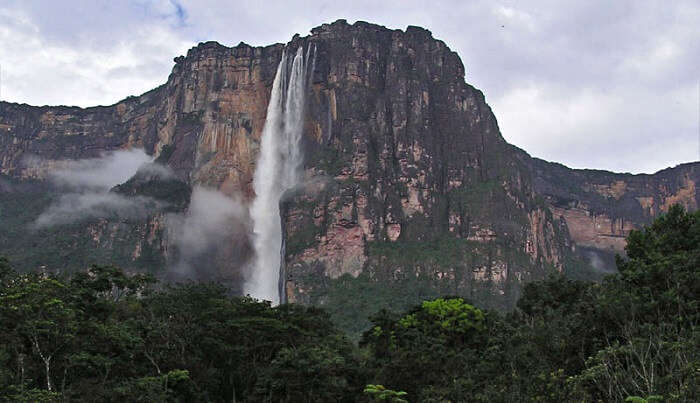
Image Source
This breathtaking cascade of foaming waters is one of the most popular tourist places to visit in Venezuela as it is the highest uninterrupted waterfall in the world. Standing at 978 meters, it has a plunge of 807 meters.
The waterfall drops over the edge of the Auyán-tepui mountain in Canaima National Park, a UNESCO World Heritage site in the Gran Sabana region of Bolívar State. The Angel Waterfalls starts from a small town called Canaima. As there are no roads to Canaima, you will have to fly from Puerto Ordaz or other nearby places in Venezuela.
The nearby places are also popular regions to visit in Venezuela as they are also equally refreshing. A typical visit to Angel Falls is an ideal three-night two-day tour. During this tour, you will see the Angel falls, lagoons of Canaima, and several other waterfalls like Hacha and Sapito. If you are looking for places to visit in Venezuela for couples then this. It is the perfect romantic place to visit in Venezuela for couples with an opportunity to spend starry nights under the sky.
Best time to visit: June to September Location: 8011, Bolívar, Venezuela
Must Read: Canaima National Park: A Gateway To Adventure, Thrill, And Venezuelan Wildlife
Looking To Book An International Holiday?

Trip to Sri Lanka at Rs 13,500/-
Plan Your Vacation Today!

Trip to Singapore at Rs 20,499/-
Get Quotes From Local Experts

Mauritius Holiday Starting at Rs 65,000/-
Talk to Our Experts Today

Maldives Honeymoon Trip at Rs 39,800/-
Pay with easy EMI Option

Europe Trip at Rs 89,999/-
All Inclusive Deals

Vacation in Dubai at Rs 27,499/-

Hong Kong Holiday at Rs 24,999/-
Money Safe Guarantee

Thailand Holiday at Rs 7,999/-
Flights Excluded

See more at TRAVELTRIANGLE.COM
2. Isla Margarita
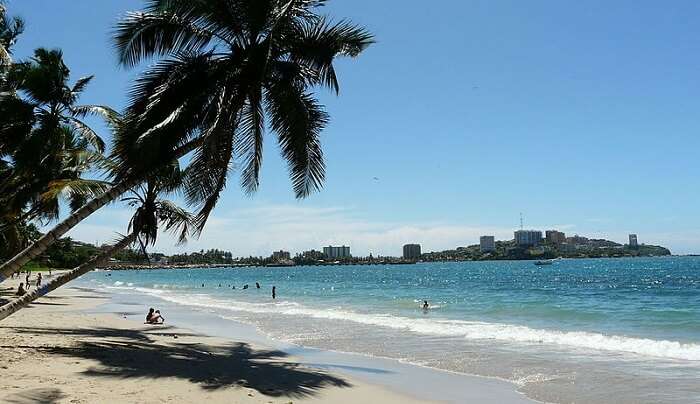
The largest island off the northern coast of Venezuela, Isla Margarita, is located to the northeast of the country’s capital Caracas and is a part of the Nueva Esparta state. Often called the Pearl of the Caribbean, it is adorned with pristine beaches with white sand stretching across miles as well as tropical beaches with seawater lapping the shore. It is one of the best places to visit in Venezuela .
A great place for beachcombing and adventure sports like wind and kite surfing is a famous place to visit in Venezuela, especially among locals for duty-free shopping. This region also has an exuberant nightlife complete with beach bars, discos, salsa clubs, and fine dining restaurants.
Best time to visit: Any time of the year especially the summer months of March to May Location: Nueva Esparta, Venezuela
Suggested Read: 32 Budget International Trips For Your Holiday Which Will Cost You Less Than An iPhone!

One of the best coastal towns in Venezuela, it features among the most popular tourist places to visit in Venezuela. It boasts of many colonial houses and a peaceful environment. It is located near the Henri Pittier National Park.
Teeming with wildlife, the Henri Pittier National Park also features lowland jungles and mysterious cloud forests. While there are deer, snakes, and other fauna, it is home to a vast majority of colorful and exciting birds.
One can expect to see violet-chested hummingbirds, fruit eaters, toucanets, parakeets, and tanagers. Thus this island gives you an all-in-one experience complete with sandy beaches, rainforests, and exotic birds.
Best time to visit: January to March Location: Choroni, Aragua, Venezuela
Suggested Read: International Destinations On Diwali Weekend: 10 Places That Can Light Up Your Holidays
4. Los Llanos
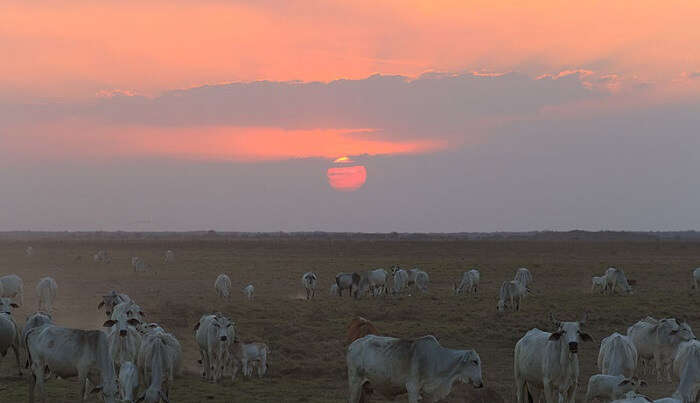
Los Llanos or “the plains” may seem just a vast stretch of tropical grassland but it is one of the most famous places to visit in Venezuela . Beautiful as it is verdant, the coming together of flooded grassland and savannas makes a trip to this place memorable. Inundated by the Orinoco River, it serves as a border between Venezuela and Colombia.
Subject to seasonal flooding, much of this region is treeless. Covered with carpet grasses during the dry season, it harbors many animals like jaguars and capybara. During the rainy season, usually from June to September, it is flooded heavily, turning it into a bird watcher’s paradise. The Serengeti of the South has a lot to offer, sporadic wildlife sightings, and gorgeous sunsets.
Best time to visit: June to September Location: Los Llanos, Panama
Suggested Read: Reality Check – Indian Carriers Make It To The List Of 200 Most Affordable International Airlines
Planning your holiday but confused about where to go? These travel stories help you find your best trip ever!

Ramya Narrates The Story Of 6 Girls On An Extraordinary Trip To Thailand
Bangkok. Phi Phi. Krabi. Why should guys have all the fun?

Sandeep Illustrates On The Best Activities For A Family Trip To Mauritius
Water sports. Cocktail parties. And unlimited fun at Casela.

Nisarg Can't Stop Praising His Honeymoon Trip To Maldives
There was snorkeling, sightseeing, luxury, comfort, & much more!

Sabyacsachi's Romantic Trip Proves Europe To Be The Mother Of All Vacations
For Art, Culture, Luxury, & more...

Srishti Talks Of Her Amazing Trip To Singapore With Her Mother & Niece
A fun-filled destination for ages indeed!

67-Year Old Sridhar Tells How He Beat The Odds & Took A Solo Trip To Dubai
Desert safari. Burj Khalifa. Welcoming locals. Tell me more!

Not Adventure Lovers? Saurabh's Family Trip Proves Hong Kong To Still Be Full Of Fun
Your kids will love Disney Land & Ocean Park!

Ravi's Tale Of A Sri Lanka Family Tour Is All You Need To Know About Ramayana Tour
For the love of Ramayana & Travel!
5. Los Roques
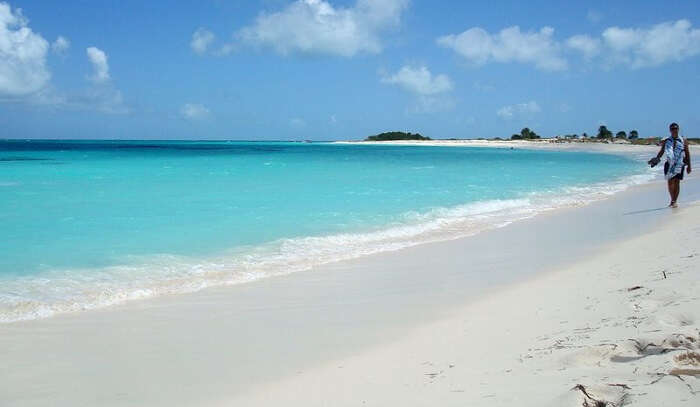
Venezuela’s diamond in the rough, Los Roques is home to around 200 cays and islands. With tall palm trees swaying in the wind and clear waves lapping the shore, it is a tropical paradise. It is a national marine park and protected ecosystem reserve that houses some of the most splendid coral reefs and underwater flora and fauna in the Caribbean.
Famous for diving, snorkeling, and a vast array of water sports, it is the perfect spot to indulge in adventure sports like surfing and kiteboarding all year round. If you are looking for the ideal place that offers you tropical beaches in a remote, peaceful environment, Los Roques is the perfect tourist place for you in Venezuela.
Best time to visit: All year round Location: Los Roques archipelago, Federal Dependencies of Venezuela, Venezuela
Suggested Read: Follow These International Travel Tips For An Epic Overseas Holiday!
6. Mount Roraima

Often called “The Floating Island,” Mount Roraima is a giant flat-topped mountain or tepui in the Pakaraima Mountains of the Guiana Highlands. About 9,094 feet (2,772 meters) high, it is the highest point in Guyana.
Ever seen those sci-fi or adventure movies where a massive mountain is enveloped by clouds? Well, Mount Roraima looks absolutely like that. It has many forms of plant life, most of which are native to the region. This region also has its share of unique fauna. The Roraima Bush Toad is native to this region and resides in shrubland. Roraima is also famous for hiking.
The challenging trails of this mountain are a favorite among people as a Venezuela tourist place. Explore the sweeping tepui playing sentinel to the lowlands and get lost in the beauty of this place as something straight out of a storybook.
Best time to visit: March to May Location: Mount Roraima, Venezuela/Brazil/Guyana
Suggested Read: 10 Brazilian Desserts To Satiate Your Taste Buds In This South American Wonderland
7. Medanos de Coro

The Mini Sahara of South America looks like something straight out of the “Welcome to Paradise” brochure. A beautiful desert complete with sand dunes sits in the heart of a tropical country. Medanos de Coro is located in the state of Falcon in Venezuela and is part of the Medanos de Coro National Park system. It is indeed one of the most astounding Venezuela tourist places .
The sands of this park are in constant motion, so often, they are called “nomad sands.”If this does not make this place “Instagram-able” enough, then there’s more. You can roam about the dunes in quad bikes or even take romantic camel rides. Take rides in the sandboards, get mesmerized by the subtle play of orange and yellow during sunsets, and explore the national park and have the best time of your life.
Best time to visit: March to May Location: Intercomunal Coro – Punto Fijo, Falcón, Venezuela
Suggested Read: Top 15 Places To Visit In Ecuador For A Megadiverse Tour In South America
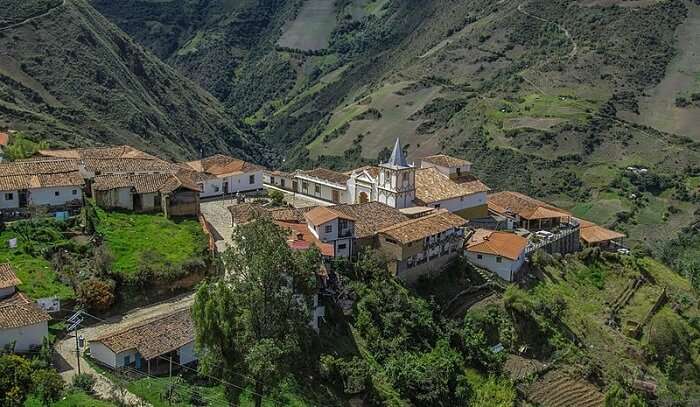
While you may have your share of experiences in ropeways and cable cars, Merasa Cable Car is different. It is the highest cable car system in the world. Its base is at Mérida at an altitude of 1,640 meters, and its terminus is on Pico Espejo, at 4,765 meters.
This vertigo-inducing ride should not be missed by any tourist. Major tourist attractions are all shown by this 12.5 km long ride-places that are otherwise difficult to visit can be seen easily. Another fun fact is that the final stop, the Pico Espejo derives its name from Mica Muscovite. It is an extremely bright rock that produces reflections when the sun shines on it.
Best time to visit: All year round Location: Plaza las Heroínas, final con av 8, Calle 24 Rangel, Mérida, Venezuela
Further Read: 10 Best American Road Trips For An Unforgettable Journey In The Land Of Enchanting Sceneries!
Natural wonders abound in this magical country, and hence be sure to experience them all on your international vacation to Venezuela. For those who like to go offbeat and wish to explore unconventional countries on a traveler’s list, Venezuela makes an excellent choice. However, be safe and stay away from danger to avoid landing yourself into any kind of trouble.
Looking To Book A Holiday Package?

Spellbinding Cochin Family Tour 2D/1N Package @ Rs 2,750
Plan your trip today!

Himachal Family Tour Package 4D/3N @ Rs 8,750
Get quotes from multiple travel experts.

Exciting Andaman Family Trip 5D/4N @ Rs 10,250
Compare & customize quotes before booking.

Gangtok & Darjeeling Tour Package 5D/4N @ Rs 13,000
Have Questions? Talk to our travel experts today.

Wonderful Goa Family Package 3D/2N @ Rs 6,500
Best prices guaranteed.

Riveting Rajasthan Vacation 3D/2N Package @ Rs 6,499
EMI option available.

Enchanting Uttarakhand Tour 4D/3N Package @ Rs 7,199
Explore best destinations with our experts.

Delightful South Weekend Tour 3D/2N Package @ Rs 4,999
Thrilling weekend full of fun.

Marvelous Gujarat Tour 3D/2N Package @ Rs 4,999
Talk to our experts today.
Recent Posts

Exploring The Enchanting Charms Of Lake Yeak Laom In 2024

Enjoy The Mesmerising Lazy Beach To Unwind Yourself In 2024

Explore The Fascinating Battambang Bat Caves Of Cambodia In 2024

Explore The Sacred Silver Pagoda Centre Of Buddhism And Culture In 2024
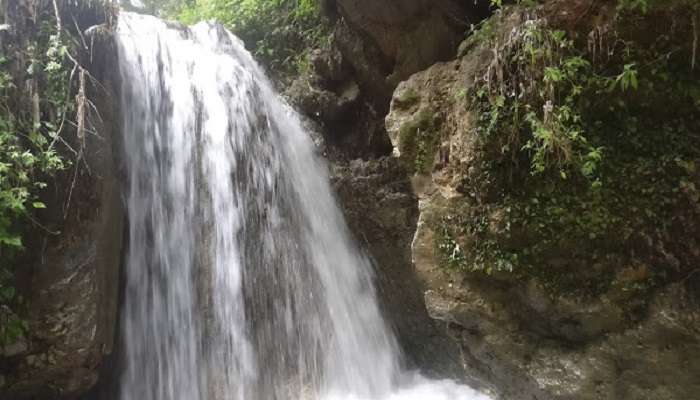
Mossy Falls In Mussoorie Is A True Hidden Gem To Explore In 2024

Kellogg Memorial Church Tour To Unveil The Secrets Of The Himalayas In 2024
Trending Blogs

20 Mysterious Places In India To Visit In 2024 More Bizarre Than The Bermuda Triangle

10 Scariest Roads In India That Are A Driver’s Nightmare

101 Places To Visit In India Before You Turn 30 in 2024

35 Exotic Places To Visit In December In India 2024 To Enjoy A Surreal Vacation

60 Best Honeymoon Destinations In India In 2024

95 Best Honeymoon Destinations In The World In 2023 For A Romantic Escape!
Best Places To Visit In India By Month
Best places to visit outside india by month.
- TravelTriangle
- International
- South America »
- Tour Packages
- Honeymoon Packages
- Family Packages
- Budget Tour Packages
- Luxury Tour Packages
- Adventure Tour Packages
- Group Tour Packages
- Maldives Tour Packages
- Bali Tour Packages
- Dubai Tour Packages
- Singapore Tour Packages
- Thailand Tour Packages
- Europe Tour Packages
- Sri Lanka Tour Packages
- Tour Packages From Delhi
- Tour Packages From Mumbai
- Tour Packages From Bangalore
- Tour Packages From Chennai
- Tour Packages From Kolkata
- Tour Packages From Hyderabad
- Tour Packages From Ahmedabad
- Thailand Tourism
- Bali Tourism
- Singapore Tourism
- Maldives Tourism
- Mauritius Tourism
- Dubai Tourism
- Europe Tourism
- Hotels in Thailand
- Hotels in Maldives
- Hotels in Mauritius
- Hotels in Bali
- Hotels in Dubai
- Hotels in Singapore
- Hotels in Sri Lanka

IMAGES
VIDEO
COMMENTS
1. Angel Falls. Source: Douglas Olivares / shutterstock. Angel Falls. Venezuela is home to the world's highest waterfall. Needless to say, this is the most popular destination in the country. With nearly a 1 kilometre drop, spectacular is really the only word to describe it.
1. Angel Falls. The heart of Canaima National Park holds one of the most beautiful places in Venezuela—the magnificent Angel Falls. Standing as the world's highest uninterrupted waterfall, its waters majestically drop an astonishing 979 meters. It is an amazing masterpiece of nature's prowess.
Architecture 3. Architectural Oddities 3. Martian Landscapes 2. Sacred Spaces 2. Subterranean Sites 2. Kinetics 2. Ecosystems 2. Art 2. Sculptures 2.
1) Salto Angel. Angel Falls, at 979 meters high, proudly boasts being the highest waterfall in the world. Located in the Venezuelan Gran Sabana, this is a place holding a sacred character for the natives. It is, without a doubt, the biggest out of all Venezuela tourist attractions.
In South America, Venezuela has amazing natural wonders like the stupefying Angel Falls and the breathtaking Los Roques archipelago. However, the nation has recently experienced serious political ...
Your ultimate Venezuela travel guide, with tips, and things to see and things to do in Venezuela. Great for first-time and returning travelers. Rich with culture, history, and friendly locals, Venezuela is a chance to see something different. Located on the northern coast of South America, it is filled with many white-sand beaches, blue waters ...
2. Visit The Tallest Waterfall on Earth. Usually a staple on most South American bucket lists, Angel Falls is one of the main reasons most travelers come and explore Venezuela. Standing at a giant 979m, this towering single-drop fall is a really spectacular site.
Cayo de Agua: Known for its stunning sandbars, shallow lagoons, best places to visit in caracas venezuela, and crystal-clear waters, Cayo de Agua is a popular spot for swimming, snorkeling, and beach picnics. Francisco: This picturesque island boasts secluded beaches, lush vegetation, and excellent snorkeling opportunities along its coral reefs.
Venezuela. South America. Venezuela, home to some of South America's most incredible landscapes, rightly has a terrible image problem at the moment. Hyperinflation has led to a dramatic drop in living standards and issues with the supply of basic goods, while personal safety, particularly in Caracas, is worse than anywhere else on the continent.
Los Roques. Last but not least in our Venezuela backpacking itinerary, we have Los Roques, a mainland 40 islands and over 250 coral reefs. Ocean lovers will enjoy their time in Los Roques! You can go on a boat trip during the day and swim in crystal clear waters, drink beers, and eat good seafood.
National Pantheon of Venezuela. 10. Parque Nacional Los Médanos de Coro (Medanos de Coro National Park) 11. Mochima National Park. 1. Angel Falls. Angel Falls. In the heart of the country, where table top mountains rise up like giant monoliths from the surrounding landscape, is Angel Falls.
Founded in 1552, Barquisimeto is the fourth largest city in Venezuela, and one of the country's oldest. The city sits on the edge of the Turbio River and has a moderate and pleasant climate. Along with old, Spanish-style buildings, newer modern and experimental designs have become a part of this city's skyline.The highlight is the Barquisimeto Cathedral, which was completed in 1968.
The US State Department has released an issue for all tourists to reconsider travel to Venezuela due to crime, civil unrest, poor health infrastructure, and detention of U.S. citizens. There are numerous areas that are extremely dangerous. Avoid traveling to certain neighborhoods of Caracas due to crime. Places, where tourists are relatively ...
Madrizquí. The nearest island to Gran Roque, Madrizquí is only about 1km (0.6mi) to the southeast. It was the favorite island of affluent caraqueños (people from…. Discover the best attractions in Venezuela including Museo de Arte Contemporáneo de Caracas, Salto Ángel (Angel Falls), and Iglesia Santa Capilla.
Angel Falls. 712. Waterfalls. This breathtakingly beautiful waterfall is 16 times the height of Niagara Falls and one of Venezuela's top tourist draws. 2. Cayo De Agua. 882. Islands. By elvikingo998.
12 Best Islands In Venezuela - Updated 2024. 12 Popular Festivals In Venezuela. Top 12 Things Venezuela Is Famous For. 1. Cayo Sombrero. Source: Photo by Wikimedia Commons user AndreaC11 used under CC BY-SA 3.0. Cayo Sombrero, also known as Key Hat, nestles discreetly amidst the azure waters of the Caribbean.
Dear Travelers to Venezuela: Please Don't Come Visit Until You've Understood These 7 Things. 1. Venezuela is a cheap destination for foreigners at the moment… as long as they are willing to negotiate in the parallel currency market. In Venezuela, there's an (unfortunate) exchange control that prevents the free flow of foreign currency.
10. Morrocoy National Park [SEE MAP] ruurmo / Flickr. Morrocoy National Park is located in the northeastern part of Venezuela. It contains an area of mangroves and numerous islets and cays with beautiful sandy beaches. Coral reefs and tropical fish are abundant in the waters around the cayos.
The Wigan-based adventure operator, Lupine Travel, is planning its next departure to Venezuela in October. The 12-day trip costs £2,195, excluding air fares. More about
See TV channel and live streaming information for Wednesday's Copa America 2024 match as Venezuela takes on Mexico at 9:00 PM at SoFi Stadium in Inglewood, California.
7 Things to Do in Venezuela. Table of Contents. 1. Roraima. Roraima Venezuela- An adventurer's playground Photo source: Will Hatton. Roraima is the highest table-top mountain in the world and straddles the Venezuelan-Brazilian border. It's a tough seven-day hike through the sweltering plains and up muddy trails but the stunning views are ...
Some of the best islands to visit are Francisqui, Noronkey, Madrisqui, Crasqui and Dos Mosquises Islands. The weather is warm, the sun shines daily and the waters are perfect for snorkeling! 4. Orinoco Delta, Eastern Venezuela. The Orinoco Delta is one of the most unspoiled regions in the world.
7. The Orinoco River and its delta (the Atlantic coast of Venezuela) The natural richness of the Orinoco River. One of the largest and most abundant rivers on the planet originates at the Brazilian border and flows into the Atlantic Ocean, forming a unique delta in its natural riches on a vast coastal area.
My favorite thing to do in Venezuela is to hike around Mount Roraima. Roraima is located in the southern part of Venezuela, right near the border of Brazil. It features one of the highest mountains in Venezuela, with epic cliffs, lakes, and waterfalls. For the adventurous traveler, this 7-10 day hiking and camping expedition is quite the thrill ...
Canaima National Park was decreed as such by the National Government on June 12th, 1962, with an area of one million hectares (1,000,000 Ha.), which was increased to three million hectares (3,000,000 Ha.) on October 10th, 1975, making it one of the largest national parks in the world. It is located in Venezuela's Guayana region, South of the Orinoco River, in the Gran Sabana Autonomous ...
Image Source. This breathtaking cascade of foaming waters is one of the most popular tourist places to visit in Venezuela as it is the highest uninterrupted waterfall in the world. Standing at 978 meters, it has a plunge of 807 meters. The waterfall drops over the edge of the Auyán-tepui mountain in Canaima National Park, a UNESCO World Heritage site in the Gran Sabana region of Bolívar State.
We left everything in Venezuela. We don't have a place to live or sleep and have nothing to eat. Nayebis Carolina Figuera, a 34-year-old from Venezuela who fled to neighbouring Brazil ... For information on UNHCR's operational response, budgets and funding, please visit the Venezuela situation page on Global Focus. Dark. Text color. White.